





















v i b r a n t t o n i n g o n c o p p e r ™
T I M C H U R C H


w i n d s c u l p t u r e s ™
L Y M A N W H I T A K E R
i n f i n i t y f o u n t a i n s ™ R Y A N S T E F F E N S
T i m W i f o r d ’ s p a s s i o n f o r a r t , e n t h u s i a s m f o r s t a r t i n g c o m p a n i e s , a n d l o v e f o r s e l l i n g i n s p i r e d t h e c r e a t i o n o f t h e W i f o r d G a l l e r y . E v e r y t h i n g c a m e t o g e t h e r a s a n e x p e r i m e n t t o t e s t a n e c o n o m i c m o d e l b a s e d o n g i v i n g e x p r e s s i o n t o m e a n i n g f u l s e r v i c e ; i n t h i s c a s e g i v i n g h e a r t , m i n d , s o u l , a n d s t r e n g t h t o t h e p l a c e m e n t o f b e a u t y i n t h e w o r l d. “ I h a v e a l w a y s b e l i e v e d t h a t a r t i s a n e m i s s a r y t o a b e t t e r w o r l d , ” h e s a y s . T h e a r t i s t s r e p r e s e n t e d c u r r e n t l y t h e r e a r e f i v e o f t h e m h a v e a l l d o n e s o m e t h i n g o f e x t r a o r d i n a r y v a l u e , t h a t s e t s t h e m a p a r t i n t h e a r t w o r l d .
V i s i t u s o n C a n y o n R o a d o r o n o u r w e b s i t e t o l e a r n m o r e .
4 0 3 C a n y o n R o a d | ( 5 0 5 ) 5 7 7 - 0 8 8 8
w w w . w i f o r d g a l l e r y . c o m | @ w i f o r d g a l l e r y
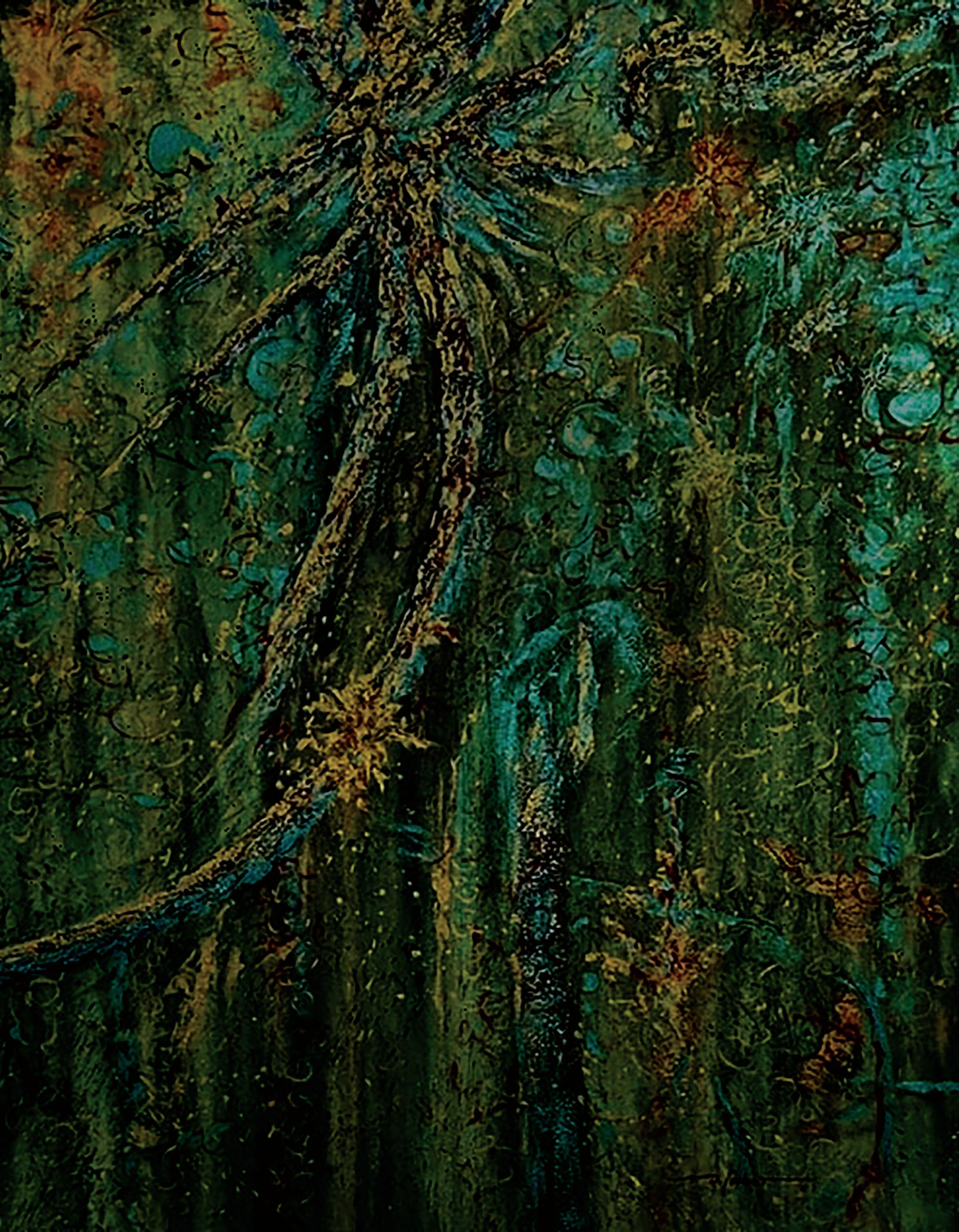



“Ruby and The Rave” by Kathryn Nun
Pre-concert lectures will take place one hour before each Lensic performance. All programming, venues, and guest soloists are subject to change.
The Symphony Box Office: 505.983.1414
Stay Connected!


301 Griffin Street, Santa Fe, NM 87501
PO Box 9692, Santa Fe, NM 87504-9692
Box Office: 505.983.1414
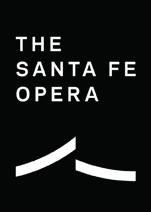

With great honor, I accepted the commission request to create the cover art for The Santa Fe Symphony Orchestra & Chorus during this magnificent 4oth Anniversary Season. I have been with The Symphony since 2006 and, as Creative Director, producing a piece that has deep meaning during such a celebratory year was very important to me. "Ruby and The Rave" depicts the strength of Ruby, a bold and vivacious Bison, sharing a fiery New Mexico sunset with a Raven Totem— representing 40 years and 40 stories of our beloved Symphony.
Strongly inspired by music, I aim to express intense emotion in all of my paintings. Predominantly working in acrylic and mixed media, I have been applying color to everything I touch since I have been able to hold a brush.
greatkatsby.com
Many thanks to 40th Anniversary Season Underwriters

THE PEDOWITZ FAMILY
Main: 505.983.3530 ANN NEUBERGER







All of us here at The Santa Fe Symphony Orchestra & Chorus are avid lovers of great music! Your Symphony team wants to make your experience as wonderful as possible. Whether it’s seeking your favorite seats in the house for one of our live performances, inquiring about membership in one of our membership Circles, or looking to support The Symphony through one of our many giving opportunities, we are just a phone call or email away.




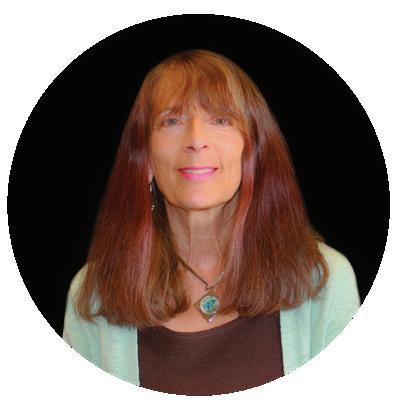







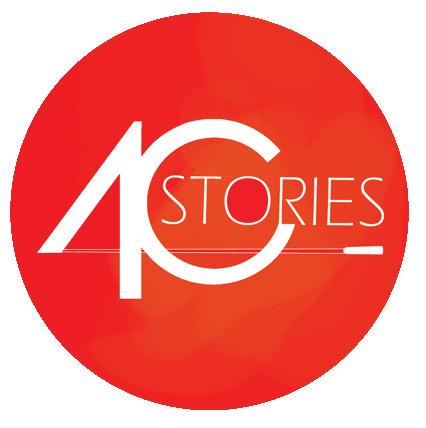
“When I joined The Symphony two years ago, nothing could have prepared me for the warmth, talent, and passion of this incredible team. I stepped off the plane into Maestro Figueroa’s waiting car (whose license plate is lovingly imprinted: “BERLIOZ”) and went straight to my first-ever Santa Fe Symphony rehearsal. Tensions were high: We had just come out of 18 months of pandemic and virtual concerts, which had stretched musicians, board members, and arts administrators in every conceivable way. I wore a mask constantly, unable to see the smiles of the people who would become my closest friends and colleagues over the next two years.”
Every monthly concert came with a new set of challenges: COVID spikes that crippled our attendance, outbreaks that meant musicians had to withdraw from long-planned commitments, patrons who couldn’t return to the symphony hall for fear of their safety. Yet, at every opportunity, Santa Fe opened its arms to us, its resident Symphony and Chorus. Our patrons returned to make live music with us, filling the Lensic, The Cathedral, and every other venue with the sound of applause and appreciation. My heart was filled every day with the sense that our mission was understood by the community, that we supported local musicians and the local economy with our performances, special events, family concerts, and education offerings.
Now, after two years with these outstanding people, I’ve heard some amazing stories and have quite a few of my own! Musicians who have played with us since our infancy remember performing with André Watts, Christine Brewer, Dave Grusin, Susanna Phillips, Eddie Daniels, and more. Conductors who have led our beautiful chorus and orchestra were filled with inspiration at the sound of voice and instrument joined in harmony. Staff who have weathered the turbulence of recessions and national health emergencies are excited about the future of The Symphony. And our patrons and donors have shared 40 memorable years with us, filled with applause, laughter, occasional tears, and most of all, beautiful music.
Inspired by these experiences, we created the 40 Years | 40 Stories initiative. We hope that, as you read them, you find new meaning in each performance. We hope you are similarly inspired to return to our concerts and perhaps even bring a friend or two to join you! And if there is a story you want to share about your time with The Santa Fe Symphony Orchestra & Chorus, simply email us at 40stories@santafesymphony.org or just give us a call at 505.983.3530. We can’t wait to hear from you and we can’t wait to share this glorious anniversary season with you!
With deep appreciation,
Emma Scherer Executive Director
Learn more about Emma.
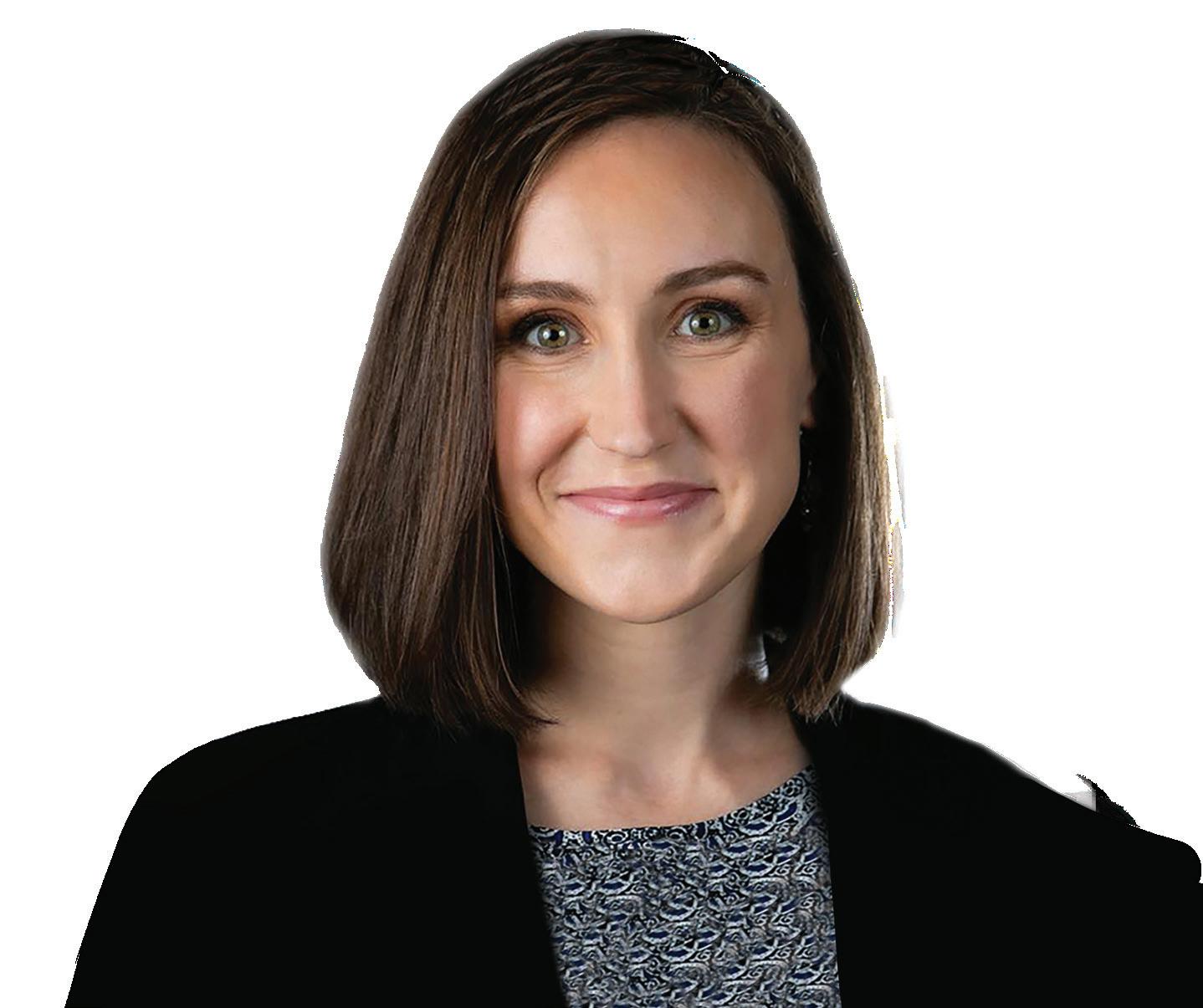


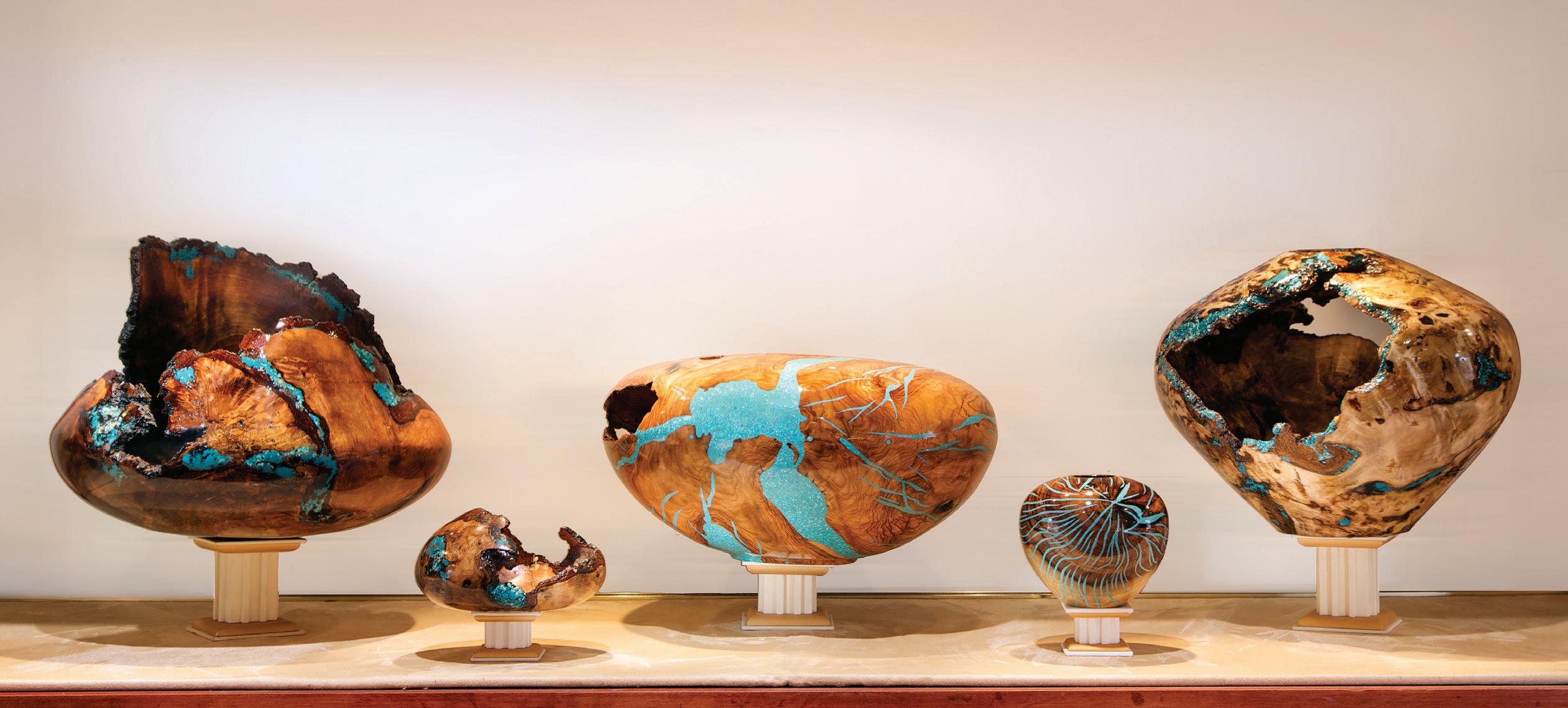




LA TRAVIATA
LA TRAVIATA
Giuseppe Verdi
Giuseppe Verdi
DON GIOVANNI
DON GIOVANNI
Wolfgang Amadeus Mozart
Wolfgang Amadeus Mozart
WORLD PREMIERE THE RIGHTEOUS
WORLD PREMIERE THE RIGHTEOUS
Gregory Spears
Gregory Spears
Tracy K. Smith
Tracy K. Smith
DER ROSENKAVALIER
DER ROSENKAVALIER
Richard Strauss
Richard Strauss
THE ELIXIR OF LOVE
THE ELIXIR OF LOVE
Gaetano Donizetti
Gaetano Donizetti

David Felberg, Concertmaster
Ruxandra Marquardt, Assistant Concertmaster
THE BOO MILLER ASSISTANT CONCERTMASTER CHAIR
Alan Mar
Laura Chang
Carol Swift
Barbara Scalf Morris
Nicolle Maniaci, Principal Violin II
Sheila McLay
Anne Karlstrom
Lidija Peno-Kelly
Laura Steiner
Justin Pollak
Carla Kountoupes
Valerie Turner
Gloria Velasco
VIOLA
Kimberly Fredenburgh, Principal Viola
Christine Rancier
Lisa Ann DiCarlo-Finch
Barbara Clark
Allegra Askew
Cherokee Randolph*
Virginia Lawrence
CELLO
Dana Winograd, Principal Cello
THE DR. PENELOPE PENLAND PRINCIPAL CELLO CHAIR
Joel Becktell, Assistant Principal Cello
Erin Espinoza
Melinda Mack
Terry Pruitt, Principal Double Bass
Kathy Olszowka
Frank Murry
Sam Brown
FLUTE
Jesse Tatum, Principal Flute*
Laura Dwyer
OBOE
Elaine Heltman, Principal Oboe
Rebecca Ray
Lori Lovato, Principal Clarinet
Emily Erb
Dr. Stefanie Przybylska, Principal Bassoon
Leslie Shultis
HORN
Jeffrey Rogers, Principal Horn*
Katelyn Lewis
Peter Erb
Allison Tutton
Dave Tall, Principal Bass Trombone
TUBA
Dr. Richard White, Principal Tuba
TIMPANI
Ken Dean, Principal Timpani
PERCUSSION
David Tolen, Principal Percussion* THE BOO MILLER PRINCIPAL PERCUSSION CHAIR
HARP
Anne Eisfeller, Principal Harp
THE DIANE & PETER DONIGER PRINCIPAL HARP CHAIR


Scan this QR code with your smart phone to view the orchestral musician roster for each concert.
* ON LEAVE FOR 2023–2024
Jennifer Brynn Marchiando, Principal Trumpet
Byron Herrington, Principal Trombone
Lynn Mostoller
santafesymphony.org

Orchestra & Chorus, especially in this, our 40th season. Our deeply committed and talented musicians deliver magnificent performances of classic and innovative repertoire, putting the Orchestra on the cutting edge of the artistic world in our beloved city.
Learn more about Guillermo Figueroa at santafesymphony.org/about/conductor.


“One of my favorite memories with The Santa Fe Symphony was when we performed Berlioz’ masterpiece Roméo et Juliette with the full Santa Fe Symphony Orchestra & Chorus. This fulfilled a long-time dream for me, as I have been a passionate admirer and advocate of Berlioz for many years. His works are often large in scale, requiring lots of performers and singers, difficult in their technical demands, a costly undertaking, and therefore not performed as often as those of other composers.
The effort and cooperation from everyone in our organization to present this work marks a milestone in the history of the orchestra. The fact that we were able to fully record and video this ambitious production means that we will have it forever to enjoy and to showcase the magnificence of this orchestra.”
Please join us for a celebratory 2023–2024 season of exciting and innovative programs, a season for the ages!
Guillermo Figueroa Music Director



Joanna Armstrong
Lany Berger
Luana Berger
Nia Brannin
Cammy Cook
Clare Davis-Wheeler
Patricia Fasel
Bethany Gallegos
Jolene Gallegos
Libby Gonzalez
Susan Harris
Monique Harrison
Patricia Huddleston
Katherine Keener
Jenna Kloeppel
Kristin Mackowski
Kelsea Martinez-Eggleston
Bettina Milliken
Elizabeth Neely
Elizabeth Roghair
Leona Tsinnajinnie
Laura Witte
Paula Young
Elizabeth Zollo
Talitha Arnold
Luana Berger
Barbara Cooper
Joseph Fasel
Mary Fellman
Terry Garcia
Colleen Kelly
Kehar Koslowsky
Katherine Landschulz
Amanda Penaloza
Joann Reier
Edna Reyes-Wilson
Anna Richards
Judith Rowan
Joan Snider
Svenja Strieker
Wendy Wilson
Diana Zeiset
Joe Fasel, President
Mario Chavez, Vice President
Doug Escue, Treasurer
Mario Chavez
Diana Dallas
Doug Escue
O'Shaun Estrada
Stephen Fasel
Gabriel Gabaldon
Dave Garner
Robert Gonzales
Grayson Kirtland
Joe Long
James Melzer
Karson Nance
Joshua Narlesky
Todd Ritterbush
Alison Watt
Bettina Milliken, Music Custodian
Patrick Dolin
Jolene Gallegos
Carmen Flórez-Mansi, Choral Director, Ex officio
Curtis Borg
Bruce Bradford
Jerel Brazeau
Devin DeVargas
Patrick Dolin
John Emery
David Foushee
Bob Florek
Caleb Heaton
Peter Ives
Peter B. Komis
Steven Krefting
Andrew Paulson
Thomas Rogowskey
Bear Schacht
Richard Schacht
Jim Shute
Jim Toevs
Alan Van Orden
Carlos Vazquez Baur
Francisco Vazquez Baur
Sunshine Avila
Francesco Aimale
Sheridyn Gonzalez
Elise Gutierrez
Landen Kessler
Ansley King
Katharine Ortega-Garcia
Maya Ortiz
Dominic Serrano
David Valasquez
Eleanor Whalen

Director of Music at the Cathedral Basilica of St. Francis of Assisi for the last 21 years. It has been my great pleasure to host numerous concerts and welcome the community into the doors of our beloved Cathedral, which is the heart of Santa Fe.
I was a professional singer and soloist in The Symphony Chorus for many years under Dr. Linda Raney, and I enjoyed being a part of this wonderful organization in this way.
Learn more about Carmen Flórez-Mansi at santafesymphony.org/about/choraldirector.

“Six years ago, I took the helm of The Santa Fe Symphony Chorus, and it has been such a delight to recruit and work with singers of all diversities from our beloved City Different and regions beyond—performing incredible music with our outstanding Symphony Orchestra.”
It has been an honor to be on the artistic team with Guillermo Figueroa and I look forward to this amazing season that is planned for our 40th Anniversary. The Santa Fe Symphony Chorus is truly a gem within our city.
Carmen Flórez-Mansi Choral Director


Perry C. Andrews, III
Dr. Penelope Penland
Justin Medrano
Steven J. Goldstein, MD
Ann Neuberger Aceves
E.Franklin Hirsch
Ann Dederer
Laura Dwyer
Anne Eisfeller
Emily Erb
Joseph Fasel
Jose (Pepe) Figueroa
Gary Lutz
Mary Macukas, CFP®, CPWA®
Jeanette Boo Miller
Ifan Payne
Teresa Pierce
Dr. Stefanie Przybylska
Rebecca Ray
Laurie Rossi
David Van Winkle
Rick Vaughan
Gloria Velasco
Everett Zlatoff-Mirsky

Each and every time we put on a performance we endeavor to share something extraordinary. Music matters … and your support helps The Santa Fe Symphony bring great music to life. ®Gregory W. Heltman
Founder of The Santa Fe Symphony Executive Director, 1984–2018

you’re enjoying our season subscription performances, a “Strata” concert, our Annual Gala or Home for the Holidays Winter Gala, one of our donor-appreciation Musicales, or a free community concert, we appreciate your attendance and look forward to seeing you frequently throughout this landmark season.

"As Board President, I want to take this opportunity to share with you just one of the dozens of things that make me so proud of this organization—one that is of great importance to our success, but that may often go unnoticed. That is the true sense of teamwork, camaraderie and mutual respect that exists within The Santa Fe Symphony Orchestra & Chorus. Our talented orchestral and choral musicians, our exceptional Music Director and Choral Director, our active Board and Committee Members, and of course our truly amazing Executive Director, administrative staff, and volunteers all give 110 percent daily. In the truest sense of the word 'team,' they work together to get the job done, and they all make me proud every single day."
There is one additional group of team members that is vital to the ongoing success of our organization and who deserve my gratitude—YOU! Whether you realize it or not, every one of our greatly appreciated subscribers, donors, and friends are also members of our Symphony team. We couldn’t do what we do without every single one of you. You make us feel loved every time we see you in the audience, every time you applaud our musicians and choristers, whenever you flash a smile and say “thank you” at intermissions or as you’re exiting the concert hall following each performance, and when you go out of your way to mention to staff that you’ve noticed what a great job they do. THANK YOU for being part of The Symphony team!
I know you’ll agree with me when I say we are truly blessed to have such an amazing Symphony Orchestra & Chorus here in the “City Different!” I hope you enjoy all that this, our 40th Season, has to offer.
Perry C. Andrews, III Board President


Our musical community—and our family of donors and audience members—have made it possible for us to thrive for 40 amazing years! As The Santa Fe Symphony Orchestra & Chorus embarks on its 40th year of bringing great music to Santa Fe, we are reflecting upon our incredible history and mapping out our exciting future. Join us as we celebrate 40 years of bringing great music to Santa Fe with 40 events. We have something for everyone in 2023–2024!
::: Collaboration with Lensic 360 and Lyle Lovett at the Santa Fe Opera
::: 40th Season Opener Reception at Galerie Züger
::: 40th Season Finale Reception at Galerie Züger
::: Post-Concert Receptions at Galerie Züger
::: SFS Strata chamber series events at unique venues
::: Subscription Concerts at The Lensic
::: Annual Discovery Concerts for Santa Fe Fifth Graders at The Lensic
::: Season Preview Musicale—New Mexico Governor's Mansion
::: Musicales—intimate gatherings for our Symphony Circles
::: Home for the Holidays Winter Gala at the Club at Las Campanas
::: 40th Anniversary Season Annual Gala at Four Seasons
::: Second Annual Concerto Competition Finals
::: Champagne & Chocolates Event
::: Smiles of a Summer Night Event
::: FREE Community Concerts


A landmark anniversary, such as this 40th Season, provides the exciting opportunity to look back and celebrate the remarkable achievements of The Santa Fe Symphony Orchestra & Chorus. Recently, while sharing recollections of The Symphony’s many thrilling and innovative presentations, concerts, and outreach, I was asked what motivated me to dedicate so much to the establishment of The Santa Fe Symphony Orchestra & Chorus.
As a son of music educators, my childhood was filled with music. I still have the LPs of Grofe’s Grand Canyon Suite, Prokofiev’s Peter and the Wolf, Tchaikovsky’s Nutcracker—played so often that little remains of the original “Hi Fidelity” sound. The exciting tales told through music fired my imagination. Then, the great programmatic works such as Mussorgsky’s Night on Bald Mountain and Strauss’ Till Eulenspiegel, and exquisite works of emotion and spirituality such as Tchaikovsky’s Symphony No. 5 and Handel’s Messiah, inspired me to become a professional trumpeter.

In 1983, at age 25, I returned home to Santa Fe following membership in orchestras in Venezuela and Israel. While overseas, I had often thought it would be great if Santa Fe had its own symphony orchestra—a philharmonic, if you will. After all, there was the Santa Fe Opera and Chamber Music Festival, so why not a professional orchestra to complete Santa Fe’s rich cultural tapestry? The opportunity to lay the foundation for such an orchestra came about in the summer of 1984, and the Santa Fe Chamber Symphony, as the orchestra was initially known, gave its inaugural concert on September 2 of that year.
The Symphony’s subsequent four decades of success are deeply anchored by the unique cooperative governance structure of the organization that provides for the collaboration of musicians, board, and administration. This convergence of key stakeholders has resulted in a remarkable history of bringing great music to life: beloved “standards” and world premieres; renowned soloists, including such artists as the Van Cliburn and American Pianists Association gold medalists, and Grammy and Academy Award winners; and The Symphony’s significant community outreach, including the award-winning education program “We Are the Music” and the music mentors initiative in the public schools. Additionally, The Symphony has presented benefit concerts with other nonprofits, such as Kitchen Angels and AIDS Services, and noteworthy collaborations with the Santa Fe Institute, Santa Fe Desert Chorale, and Santa Fe’s 400th Anniversary.
The Symphony has arrived at this 40th Season through the dedication of highly accomplished instrumentalists, choristers, music, and choral directors; the stalwart support of board members; the unflagging efforts of volunteers, audience, and loyal donors; and terrific administrative staff. It was exciting and gratifying to work with such committed people as Founder and during my tenure as Executive Director from The Symphony’s first concert through my retirement in the spring of 2018.
Bravo and congratulations on this auspicious beginning of the 5th decade of The Santa Fe Symphony Orchestra & Chorus.
Gregory W. Heltman Founder of The Santa Fe Symphony Executive Director, 1984–2018
Our inaugural performance at the St. Francis Auditorium was presented on September 2, 1984. The concert included a Rossini overture, Handel’s Water Music, and—following an exuberant ovation from the packed house— concluded with Beethoven’s triumphant Symphony No. 2. While admission was “no cost,” we received $1,800 in donations, which was the stakehold for the founding of the organization.
The second season grew from five concerts to 12: the Masters of Music concert series that began with all six Bach Brandenburg concerti, five noontime Musical Matinees, and Haydn’s Creation, a collaboration with The Chorus of Santa Fe. The Chorus of Santa Fe (now The Santa Fe Symphony Chorus) was founded five years before us, in 1979, and merged with The Symphony in 1986.
The Symphony was thrilled with the musicians' selection of Stewart Robertson as its first Music Director and the adoption of By-Laws, that embodied the unique cooperative governance structure. The Chorus of Santa Fe and Symphony merged. Musicians continued to perform for what came in at the gate in a season totaling 4 concerts. Joe Hayes was featured in a New Mexico premiere, created by The Symphony, of a bilingual version of Prokofiev's Peter and the Wolf "Pedro y El Lobo." The Symphony Club was founded by Gladys Heldman and friends.

Our 2023–2024 Season highlights our forty-year history in Santa Fe and what we look forward to in the next forty years. We hope you enjoy these memories and stories that we have shared throughout the Program Book and that you will be inspired to support us for many years to come. As we celebrate this exciting 40th Anniversary Season, we thank you for being part of our history and hope you will be part of our future! Special thanks to our founding musicians, for the steps they have taken to bring The Santa Fe Symphony Orchestra & Chorus to where it is today, and Founder of The Santa Fe Symphony, Gregory W. Heltman, for helping us spotlight so many special moments in time!

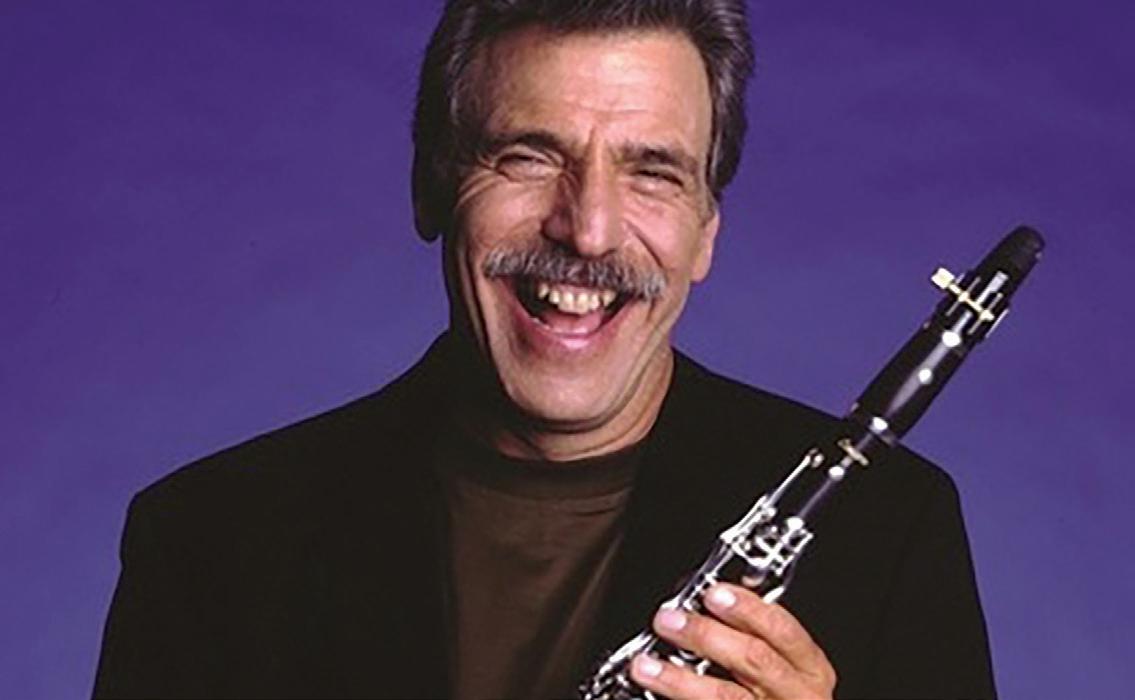



An exciting feature of our 4th season was the appearance of Grammy® Award-winning clarinetist (and recent Santa Fe resident at the time) Eddie Daniels in a premiere of Katherine Hoover’s Clarinet Concerto. The performance was recorded and could be heard as far away as New York on WQXR.
Through the personal connection of founding concertmaster Leonard Felberg, internationally renowned pianist Andre Watts donated his time and talents performing Beethoven’s Piano Concerto No. 3 as a benefit for The Santa Fe Symphony Orchestra & Chorus.
Santa Fe’s connection with Igor Stravinsky through the early days of the Santa Fe Opera inspired us to present a Stravinsky Festival, as well as continue with what was becoming a popular annual Beethoven festival with phenomenal pianist Anton Kuerti.


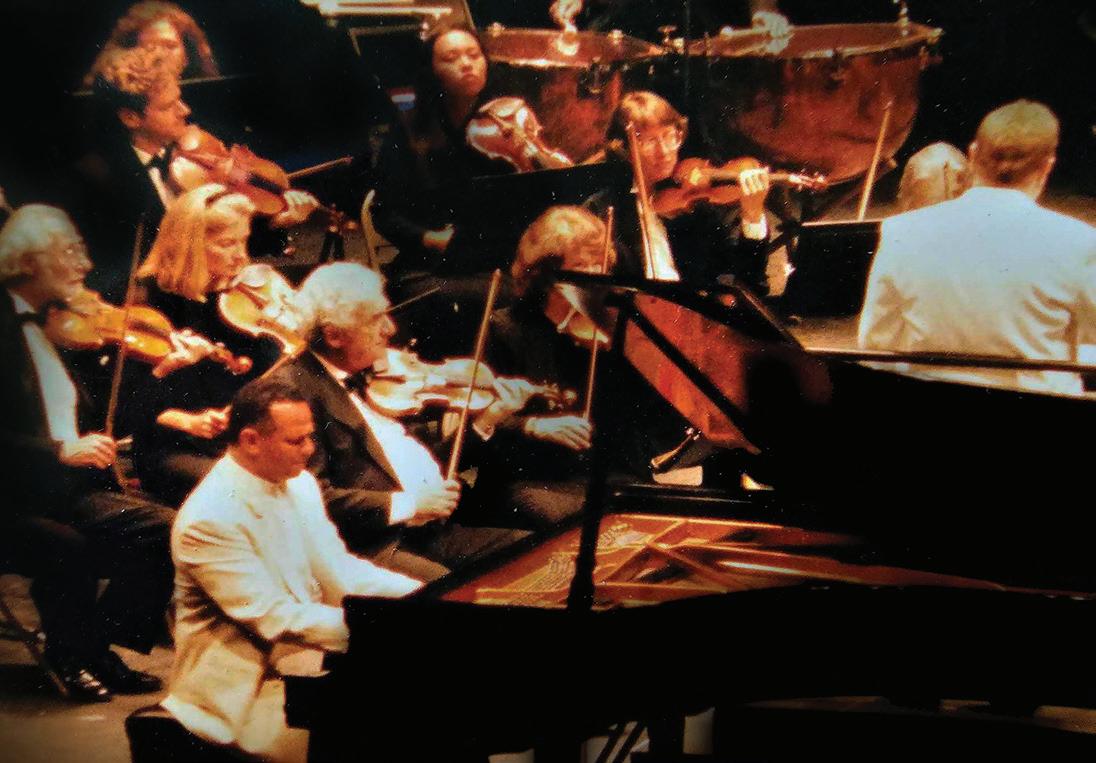




The audio recordings of Santa Fe Symphony performances were picked up by Performance Today®, a Peabody Award-winning classical music radio program, which markedly expanded our reach. This memorable season also included an adventurous American Festival featuring composer William Mathias’
In addition to the multi-day Mozart Festival, this season featured the inspiring Symphony No. 5 of Sibelius and, with The Symphony Chorus, the transcendent Brahms Requiem.
The Symphony premiered a never-before performed or published final revision of Felix Mendelssohn’s “Italian” Symphony. We also presented a fun family concert of Halloween favorites with Symphony musicians and Maestro Steven Smith dressed in costume.







For our 10th season, the stops were pulled out with the premieres of Mark O’Connor’s Fiddle Concerto; Dave Grusin’s Clarinet Concerto with Eddie Daniels; a two-day Beethoven Festival featuring all five piano concerti with Seymor Lipkin; a French Festival; and a Music of Hollywood concert conducted by
This season we performed beautiful masterworks such as Bach's Magnificat; Beethoven's Symphony No. 7; Borodin's Polovetsian Dances; Cherubini's Overture to Medea; Ginastera's La Estancia Ballet Suite; Goaull's Five Nocturnes for a Poet; Lavista's Reflejos de la Noche; Mozart's Exsultate Jubilate; and
The Symphony established the tradition marking the start of Santa Fe’s holiday season with Handel’s Messiah in late November. The annual Beethoven Festival featured beloved Concertmaster Leonard Felberg and the first complete Santa Fe performance of Bach’s masterpiece, the Mass in B minor,







This season began early with a well-received summer chamber music series at Sunrise Springs. In September, Academy, Golden Globe, and Emmy® Award-winning composer Elmer Bernstein conducted an amazing American Music concert of his movie scores as well as Copland’s A Lincoln Portrait, with Stuart Udall narrating.
Andre Watts returned to perform with The Symphony at the newly rebuilt Santa Fe Opera. December saw the first Santa Fe performance of Bach’s Christmas Oratorio (parts 1,2,3) with The Symphony Chorus. And Vivaldi’s Four Seasons was reinterpreted as the Five Seasons by Jorge Calandrelli for clarinet virtuoso Eddie Daniels.
The completion of Bach’s Christmas Oratorio (parts 4,5,6) inspired us all for the holidays.
The 1998 International Naumburg Violin Award-winner, Axel Strauss, thrilled our orchestra and audience members alike with a spectacular performance of Mendelssohn’s Violin Concerto.


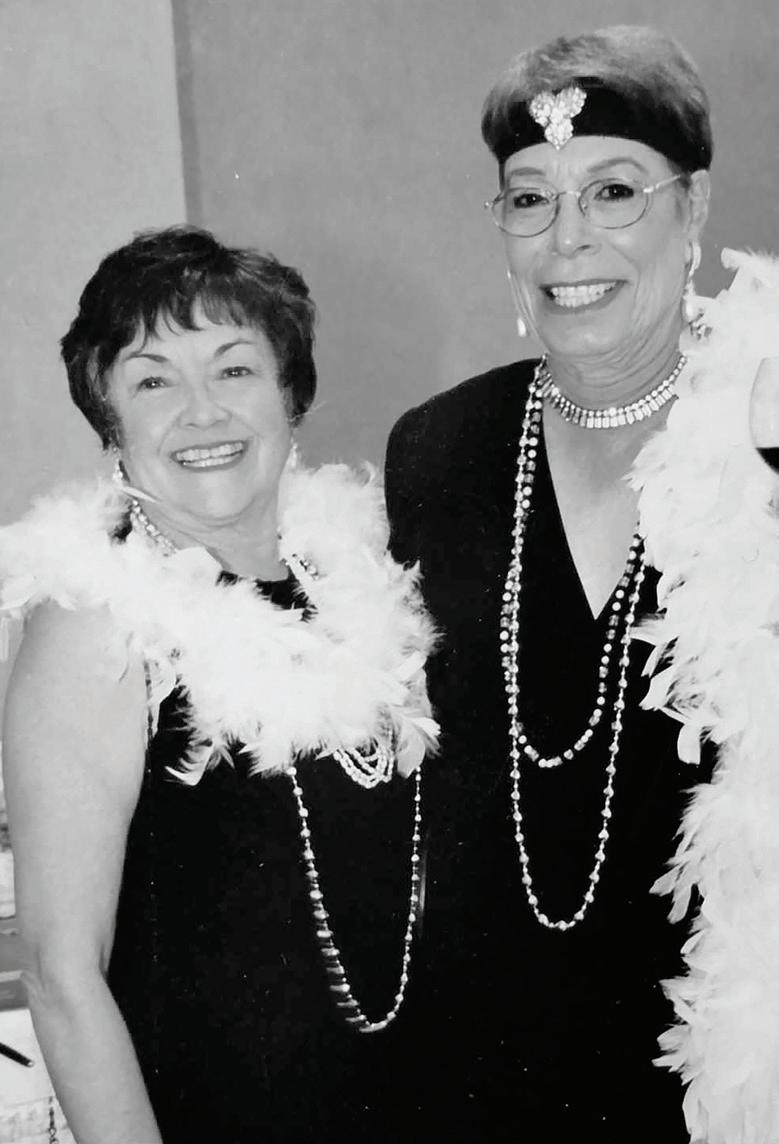




Following the tenure of Stewart Robertson and a two-season conductor search, Steven Smith, Assistant Conductor of the Cleveland Orchestra, was selected as the second Music Director. Beethoven’s Ninth, featuring the full Symphony Orchestra and Chorus, joined by the voices of the Eastern New Mexico University Choir, was a musical crown jewel. The legendary Kitty Carlisle Hart presented a solo performance as a benefit for The Santa Fe Symphony
Santa Fe “firsts” continued with Berlioz’ monumental Le’enfance du Christ and The Music of Spain and Mexico Festival.
Of particular note was the performance of Joseph Robinson, then Principal Oboe of the New York Philharmonic, in Richard Strauss’ Oboe Concerto.
Although our first concert of the season almost didn’t happen as scheduled—in late September due to 9/11—The Symphony, as one of the eight founding members of the renovated Lensic theatre, opened its Lensic residency and lifted the spirits of musicians and audience alike with Mahler’s Symphony No. 1, “The Titan.” Orff’s humorous and powerful Carmina Burana filled the house to capacity.




A 9/11 Anniversary Worldwide Commemoration performance of Mozart’s Requiem and an expansion of the Hispanic Music festival to the Music of Spain, Mexico, and Santa Fe was featured this season. A group of dedicated volunteers from the Santa Fe Opera Guild established The Symphony Guild, which then became Fanfare—and later the Music Education Committee, and now the Community Education Commitee—establishing our city's first Music Mentor Program.
Highlights included an amazing celebratory concert of two renowned artists, pianist Andre Watts and violinist Elmar Oliveira on the same program; and our first production of the monumental Verdi’s Requiem
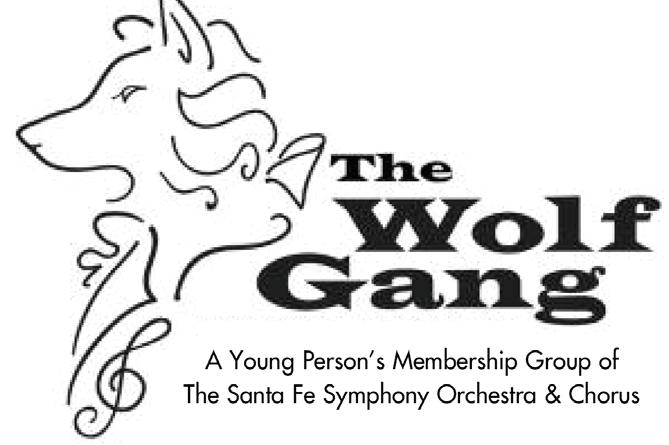
The Symphony launched an initiative for a summer presence with “A Fifth of Beethoven” and presented the first Showcase of the Stars, featuring Marc Andre Hamlin and Jimmy Lin.





In 2005, Donald Tusk, President, FanFare, the Santa Fe Symphony Guild, launched a spectacular Painted Violins project. The painted violins were diplayed in Santa Fe galleries until the auction in Fall 2006. Proceeds went to Symphony operations, with Tusk noting how many people in Santa Fe and the surrounding area “take great pride in the fact that a city the size of Santa Fe has such a quality symphony.” Proceeds also benefited our music education programs.
This season saw the first (and enormously successful) Painted Violins fundraiser led by Symphony supporters and volunters, Harriet and Karl Schreiner. A beautiful book "Music to the Eyes" was also printed, commemorating all of the incredible work the artists created for this fundraiser. Dvořák's exquisite and rarely performed Stabat Mater presented a cast of vocalists whose careers soon took off after the performance: Susanna Phillips, Mark Doss, and Michael Fabiano.
The Summer program presented two performances of Gershwin’s Porgy and Bess at The Lensic conducted by Steven Smith, with soloists: Angela Brown, Kishna Davis, Kevin Deas, Eric Greene, and Lester Lynch. Showcase of the Stars featured Van Cliburn Gold Medalist Alexander Kobrin on piano and violinist Rachel Barton Pine. We collaborated with Kitchen Angels in a benefit concert at SFO with Bernadette Peters. FanFare earned an Award of Excellence from the LAO and is recognized as The Symphony Guild for the second consecutive year.

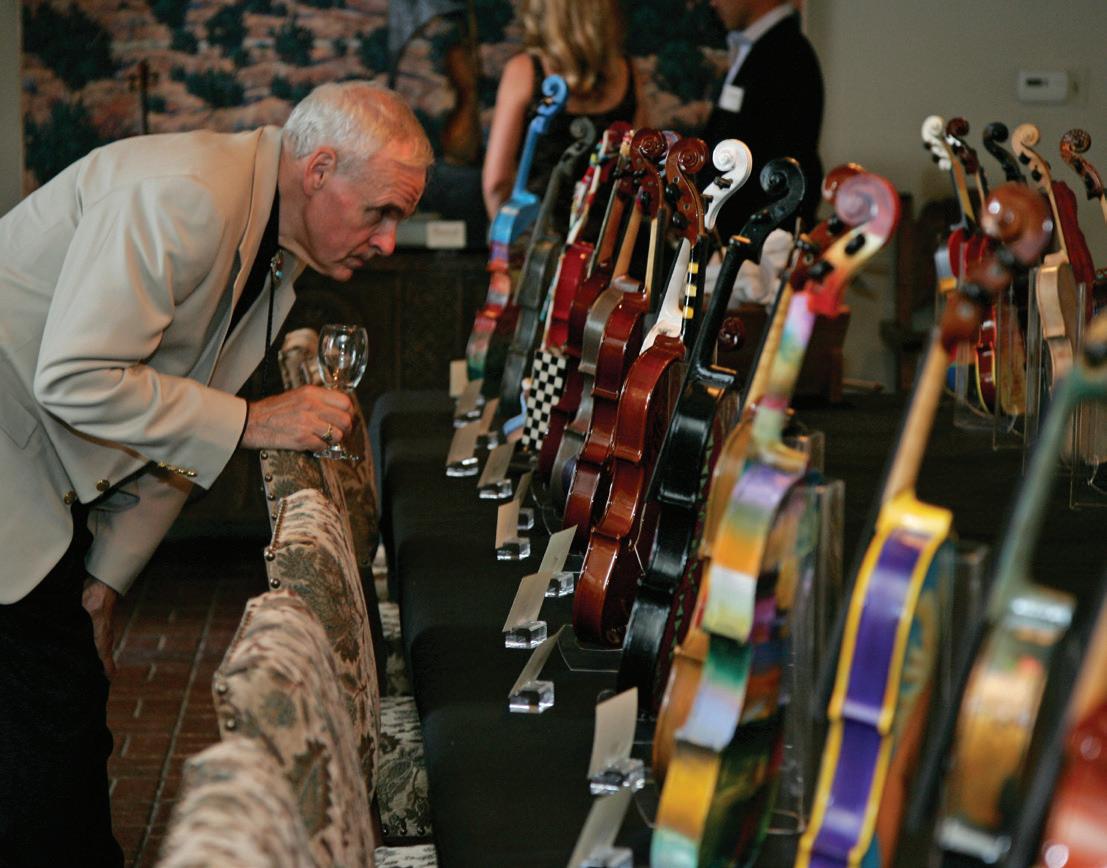







The Symphony celebrated its 25th season and the Acceptance of the City of Santa Fe’s Mayor’s award for Excellence in the Arts. A celebratory performance of Verdi’s Requiem featured a surprise appearance by renowned soprano Christine Brewer.
We played a key role in the City of Santa Fe’s 400th Anniversary of its founding with a performance on Labor Day weekend at Fort Marcy Park. The premiere of native American composer Brent Michael Davids’ Santa Fe 400th Symphony was written specifically for the commemoration, with themes inspired by the first inhabitants of Santa Fe. Voyages of Discovery marked our first collaboration with the Santa Fe Institute, exploring the intersection of the genius of Darwin and Mendelssohn.
Our Music Education Committee’s “We Are the Music” DVD and curriculum project, chaired by Mat and Meri Frauwirth, was widely released to area schools and included on the PBS online national learning channel. Voyages of Discovery featured a collaboration with Chicago’s Adler Planetarium in an expansive multimedia presentation of Holst’s The Planets. We launched a new junior patron group "The Wolf Gang"— encouraging an early, and lifelong, appreciation of orchestral music.







The Santa Fe Symphony presented Indianapolis Violin Competition winner Clara Jumi Kang and Richard Strauss’ tone poem, Don Juan (the second performance since its founding), as well as staging a unique collaboration of concerts with The Santa Fe Marimba Festival. Voyages III with the Santa Fe institute presented Bach on the Brain, and we performed a Christmas concert at the historic Cathedral Basilica of St. Francis of Assisi led by Choral Director Dr. Linda Raney.
Gold Medalist of the 13th Van Cliburn International Piano Competition in 2009, becoming one of the youngest winners in the history of the competition, Haochen Zang, along with violinist Philippe Quint, kicked off this incredible season. The Symphony's second Painted Violins fundraiser in October 2012 became our most successful gala fundraiser at that time.
The 30th Season began with another van Cliburn Gold Medalist, Vadym Kholodenko, and recently appointed Concertmaster David Felberg (following in his father’s role) in Shostakovich’s Concerto No. 1 for Violin. Steven Smith said farewell to The Symphony, leading a brilliant performance of Mahler’s victorious Symphony No. 7. Voyages of Discovery with the Santa Fe Institute continued with “The Majesty of Music and Math," which was recorded for national broadcast on New Mexico PBS.

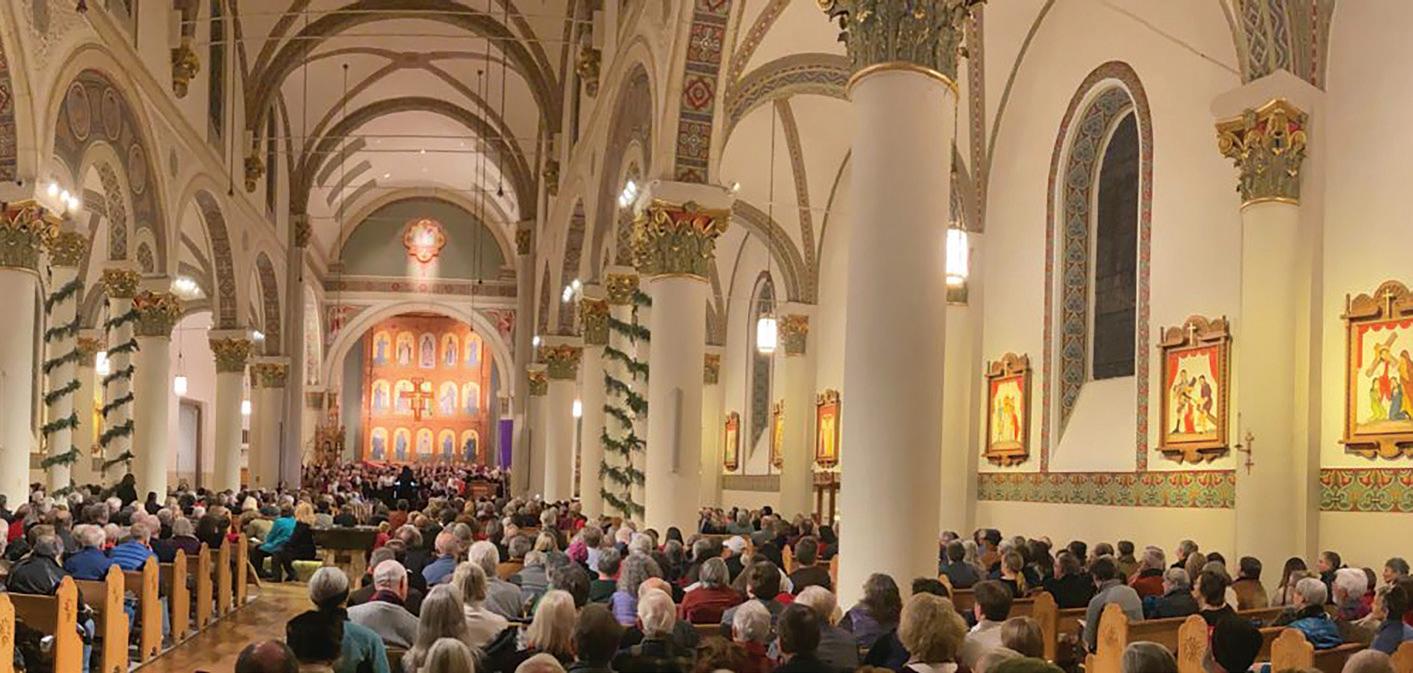
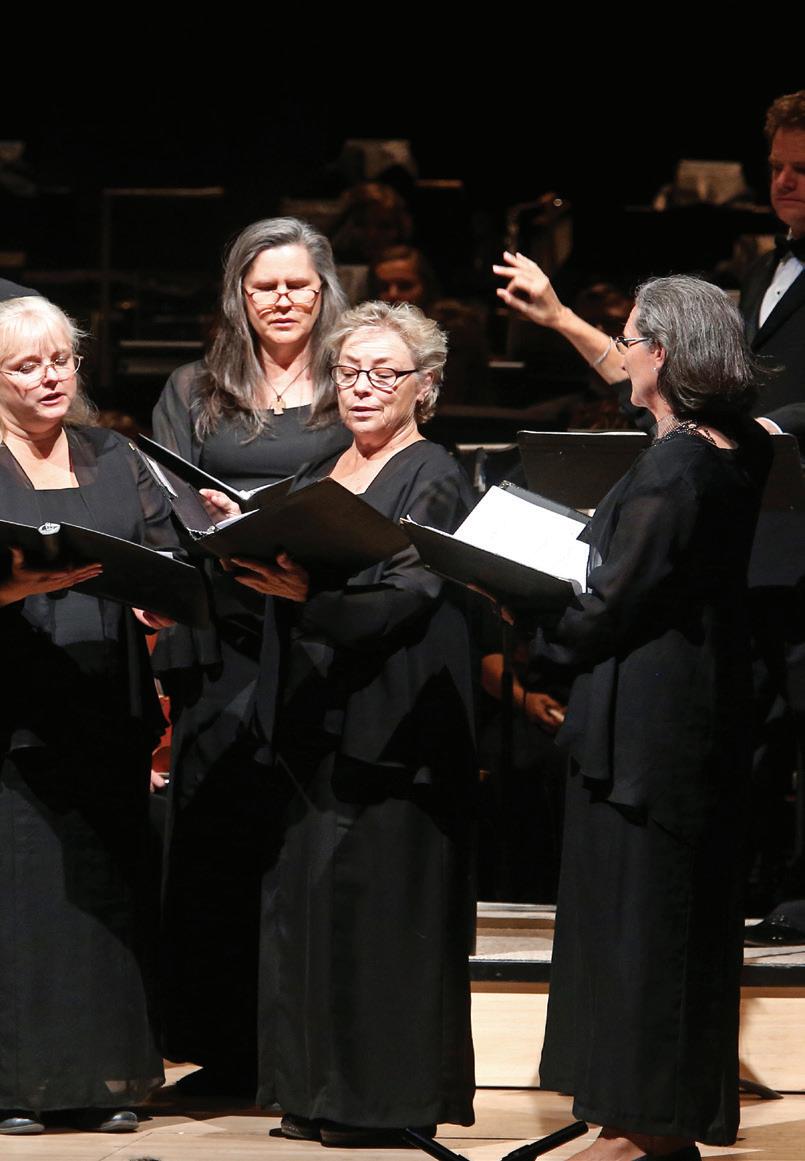


We proudly presented Grammy® Award-winning classical guitarist Jason Vieaux and his extraordinary virtuosity performing Rodrigo’s Concierto de Aranjuez. Our very own Principal Cellist, Dana Winograd, and Assistant Principal Cellist, Joel Becktell, were featured soloists in Vivaldi’s Concerto for Two Cellos. The Symphony's association with the Yehudi Menuhin Competition introduced 2012 laureate, Alexi Kenney, performing Sibelius’ Concerto for Violin.
This season presented several more outstanding principal players: oboist Elaine Heltman performing the Bach Double Concerto for Violin and Oboe with Alexi Kenney; and flutist Jesse Tatum performing Bach’s Suite No. 2 for Flute and Orchestra under the baton of Guest Conductor Ryan McAdams. Showcase of the Stars paired Van Cliburn Gold Medalist Olga Kern with Tchaikovsky Violin Competition Gold Medalist Itamar Zorman for a magnificent concert!
Maestro Guillermo Figueroa was selected as Principal Conductor following a three-season search. Principal Bassoon Stefanie Przybylska was featured in Mozart’s Concerto for Bassoon. Pianist Olga Kern and guitarist Jason Vieaux returned, both as soloists with The Symphony and in solo recital; and The Symphony and New Mexico PBS reprised “The Majesty of Music and Math" in a free two-concert presentation.








Yekwon Sunwoo, fresh from winning the 15th Anniversary Van Cliburn competition, performed Brahms’ monumental Piano Concerto No. 2. Cello superstar and TED Fellow Joshua Roman performed the virtuosic Shostakovich Cello concerto. Conductor and violinist Guillermo Figueroa, accompanied by his sister Ivonne Figueroa, gave a soldout recital that included Prokofiev, Ravel, and de Falla. The Symphony welcomed Carmen Flórez-Mansi as the new Choral Director, following Dr. Linda Raney's retirement.
Greg0ry W. Heltman retired after 34 incredible years at the helm. Board President E. Franklin Hirsch stepped in as Interim Executive Director until Daniel Crupi was appointed Executive Director in December 2018. Season highlights included recitals with 2017 APA winner, Drew Petersen; a Latin Jazz Festival with Latin Grammy® winner Nestor Torres, Mariano Morales & Pikante; plus an orchestral performance with Torres and the full Symphony for the world premiere of Morales' Concerto for Flute and Orchestra. Juan Siddi performed at the Olé Gala.
The early part of this season brought an exciting set of performances to our audience. Double Chooi kicked off the eason, with brothers Nikki and Timothy on violins performing works by Tchaikovsky, Vivaldi, and Seyfried. The Mark O'Connor Band joined The Symphony for a sold-out concert on Christmas Eve—An Appalachian Christmas at The Lensic. In April 2020, The Symphony sadly announced the cancellation of the remaining 2 concerts due to the global pandemic and shutdown due to COVID-19.


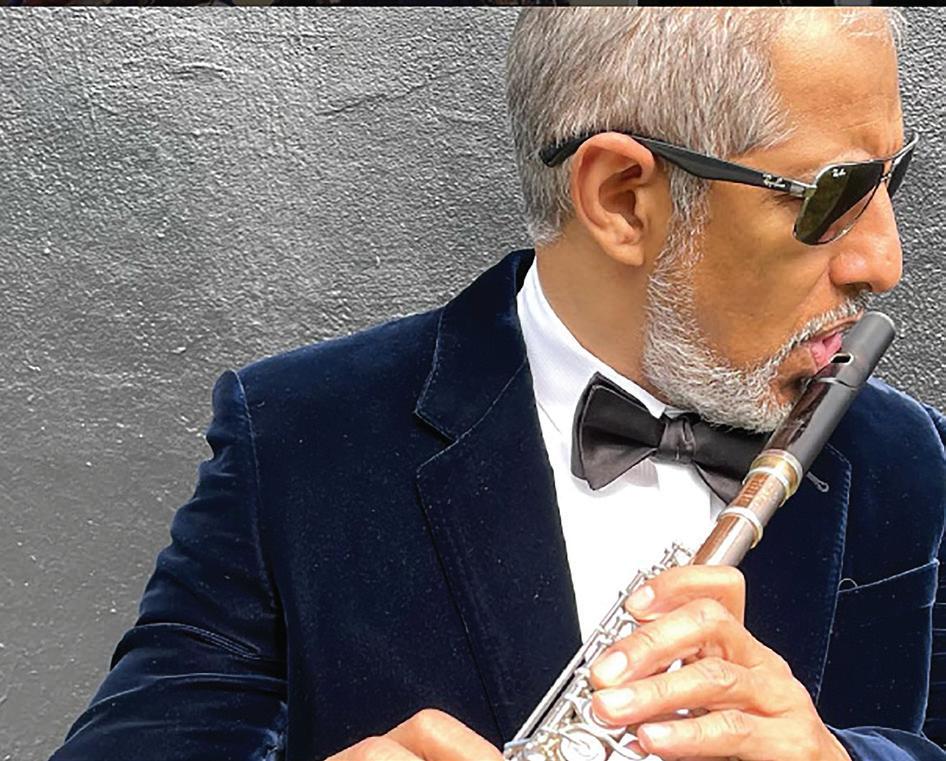




Our live season was canceled but we didn't go dark! Ten virtual concerts filmed at iconic locations, including Ghost Ranch, Meow Wolf, and more, were presented on Santa Fe Symphony TV. During lockdown, Facebook Lives connected the day-to-day lives of our musicians and guest artists with our patrons. We offered 1:1 distanced music engagements, helping to keep our musicians employed. In Spring 2021, E.D. Daniel Crupi, relocated
Emma Scherer took the reins from Interim E.D. Ralph Craviso and was welcomed as the new face of The Symphony, steering us safely back into live performances, in parallel with digital productions for SFS TV. Violinist Alexi Kenney joined us for our Season Opener. Scherer guided the organization through strict health restrictions and continuous antigen testing for all concerts A Night at
This season was like old times, with full houses and excited patrons for programs featuring Multi-Grammy® Award-winning guest conductor JoAnn Falletta and the return of prizewinning violinist Nikki Chooi. Our SFS Strata series took us to Meow Wolf Santa Fe. Maestro Figueroa conducted Roméo et Juliette, packing the house and the stage with over 175 orchestral and choral musicians,









To celebrate our 40th Anniversary Season, the programming for each concert and our 40 Years | 40 Events initiative was influenced by masterworks and elements from concerts and special events from the past 40 years. Stay tuned! Our old-time favorite event "Champagne & Chocolates" with piano and show tunes sing-a-long is in the works. Plus, a new twist on "Smiles of a Summer Night" is sure to delight everyone!
September 2—we were founded on September 2, 1984—was proclaimed by the State of New Mexico "Santa Fe Symphony Orchestra & Chorus Day." The Symphony Orchestra performed live at the Santa Fe Opera with the legendary Lyle Lovett and his band to a sold-out house. Our season kicks off with "Showcase of the Stars" featuring renowned pianist Anne-Marie McDermot performing Prokofiev's brilliant Piano Concerto No. 3 in C Major. October brings violin prodigy HIMARI and Ida Kavafian for a program that has everyone's attention. We have proudly collaborated with the Santa Fe Opera again to bring you more incredible talent from their 2023 Apprentice Program for Singers in this year's














This season, we mark 40 years of live classical music, 40 years of star power onstage, and 40 years of caring for our musicians and our community. This is no small feat. But thanks to our loyal supporters, we are about to kick off yet another year of great music with our world-class orchestral musicians and a season to remember—our celebratory 40th Anniversary Season.
Our musicians are the core of this organization—the ones who bring great music to life. Ticket revenues provide just 25% of The Santa Fe Symphony's operating revenue each year, which means that support from our donor family is absolutely critical.
The 40th Anniversary Season Underwriters are an inaugural consortium of generous longtime Symphony supporters: David & Faith Pedowitz, Neuberger Berman Private Wealth, and Ann Neuberger Aceves. These three partners have supported The Santa Fe Symphony in tremendous ways over the past forty years, and we are honored that they have chosen to celebrate our landmark 40th Season in such a special way.
Ann joined The Symphony Family in the mid-1990s as a member of the Board, becoming an advisor after her first term. The opportunity to start a Foundation for The Santa Fe Symphony arose in 1998 and Ann stewarded its creation as the Founding President. To this day, she serves as President Emerita of the Foundation Board.

Neuberger Berman and Faith and David Pedowitz are longtime Santa Fe Symphony supporters, underwriting concerts and soloists for the past ten years. David has been a member of the NB Private Wealth team for twenty years and serves as Managing Director and Senior Portfolio Manager. Faith is the Board Chair of Crossing Thresholds, a nonprofit dedicated to improving quality of life and education in Kibera Slum (Kenya). David and Faith reside in Mount Kisco, NY and have three adult children.
During this 40th Anniversary Season, we celebrate the hundreds of musicians and thousands of audience members and donors who have filled our concerts over the past 40 years. We are honored to provide all of Santa Fe with beautiful music, and we are grateful that generous donors step up time after time to support our mission in the community.
As you peruse our concert offerings in 2023–2024, please take special note of all those individuals and corporations who have supported our season. If you'd like to support The Symphony and help secure the next forty years of great music in Santa Fe, we invite you to visit santafesymphony.org/donate or call 505.983.3530 for more information.

Guillermo Figueroa, Music Director
The Santa Fe Symphony Orchestra
Anne-Marie McDermott, Piano

Leonore Overture No. 3, op.72b
LUDWIG VAN BEETHOVENBorn 1770, Bonn
Died 1827, Vienna
No other work gave Beethoven more trouble than his only opera, Leonore, which he retitled Fidelio during its final revision. Beethoven’s problems with the opera, which occupied him over a span of 11 years and took him through three different versions, are reflected in his problems devising a suitable overture: Fidelio is doubtless the only opera in existence to have four different overtures.
In 1803, Beethoven set to work on the opera, which took two years to complete. Leonore premiered in Vienna in November 1805 and was prefaced by what we now know as the Leonore Overture No. 2. It was difficult for the players, so for the premiere of the revised version in 1806 Beethoven completely rewrote it; this is the version known as Leonore Overture No. 3, performed at this concert. Overture No. 1 was composed for a planned production in Prague in 1807 that never took place.
In all three overtures, Beethoven faced what was essentially a dramatic rather than a musical problem: He composed an overture based on music that accompanies the events of the opera’s final act: Leonore’s willingness to sacrifice herself for her husband Florestan, the last-minute arrival of Don Fernando, and the arrest of Pizarro. This is powerful material, but it is far in the future when Act I opens with much more innocent activity: the frothy infatuation of the young Marzellina with the new jailer’s assistant. Any of these violently dramatic overtures is wrong as an introduction to the light opening of the opera. When the powerful third version is used, it “annihilates the first act,” in Donald Francis Tovey’s wonderful phrase. Beethoven was aware of this problem. When he made his final revisions of the opera in 1814 (renaming it Fidelio ), he composed a fourth version. A conventional curtain raiser, full of thrust and noble sentiment, it makes no use of musical material from the opera itself.
Nonetheless, the third version has become one of Beethoven’s most popular overtures, preserving some of the high drama of the opera and treating it in taut sonata form. The slow introduction opens
Sunday, September 10—4:00 pm
LUDWIG VAN BEETHOVEN
Leonore Overture No. 3, op.72b
WOLFGANG AMADEUS MOZART
Symphony No. 40 in G Minor, K. 550
Allegro molto Andante
Menuetto: Allegretto
Finale: Allegro assai
GINA GILLIE
Philharmonic Fanfare
The Symphony Brass Ensemble
SERGE PROKOFIEV
Piano Concerto No. 3 in C Major, op.26
Andante; Allegro Andantino
Allegro ma non troppo
Anne-Marie McDermott, Piano
CONCERT SPONSOR-IN-PART

with descending phrases (possibly mirroring Florestan’s descent into the dark dungeon), and woodwinds soon echo a phrase from his great aria In des Lebens Frühlinstagen, a sad account of how far he has fallen from his happy early life. Gradually, the introduction grows more animated and settles into the Allegro, where the rising-and-falling melody in C major becomes the main idea. Matters reach a climax, and Beethoven breaks off the development with another quotation from the opera: the offstage trumpet that heralds the dramatic arrival of Don Fernando in Act II. The coda brings one of the most famous (and difficult) passages in the orchestra repertory: A handful of violins (“due o tre violini,” says Beethoven in the score) race ahead over a sequence of rising scales. They are gradually joined by players from the other string sections and then from the full orchestra as Beethoven drives to a heroic close, well suited to this tale of the triumph of good over evil.
—Program Note by Eric Bromberger
Symphony No. 40 in G Minor, K.550
WOLFGANG AMADEUS MOZART
Born 1756, Salzburg
Died 1791, Vienna
The dismal events that befell Mozart during the summer of 1788 are well-known: The death of an infant daughter, the poverty that drove the family into evershabbier dwellings, the demands of creditors, and Mozart’s own pathetic pleas to friends for financial assistance tell the tale. Mozart was too great an artist to let the events of his life seep into his art, and two of his three final symphonies, composed that summer, are miracles of beauty and strength and repose. Yet the Symphony in G Minor, completed on July 25, is unlike any other music Mozart wrote. It is full of troubled and tense moments that do seem to spring from those “dark thoughts” of those months; this is one of the most powerful symphonies ever written.
The most striking feature of this music is its intensity. Mozart reserved the G minor key for his darkest and most deeply felt music, and he accentuates harmonic tension with unexpected key shifts and the striking chromatic grind of his themes. Further, he unifies the symphony with unusual rhythmic patterns and intervals (the last three movements, for example, all begin with the upward leap of a fourth). Yet Mozart achieves this intensity with an utter economy of means, even to the point of eliminating the martial sound of trumpets and timpani from the orchestra.
The beginning of the Allegro molto instantly establishes the character of this music: Over throbbing violas, violins sing the dark, pulsing main idea. Note carefully the first three notes of their theme; it will saturate the movement, knitting it together rhythmically and pushing the music constantly forward. The second idea, divided smoothly between strings and woodwinds, is lyric, but Mozart quickly springs another surprise, moving through the remote key of F-sharp minor into the development. The music will make its way back to G minor, but such harmonic surprises produce the many changes of shade and temperament at the heart of this symphony.
The Andante, in E-flat major and also in sonata form, brings little peace. Mozart’s themes may be graceful, but his chromatic treatment of them and surprising accents give this music a sense of poised unease. In the third movement, Mozart goes back to G minor and drives the music forward, with dissonances stinging off the terraced string entrances. The delicate trio section, with its long lines and beautiful writing for winds, brings the symphony’s one interlude of peace.
Marked Allegro assai (“Very fast”), the finale opens with the violins’ graceful leap upward and the full orchestra’s explosive response. This movement too is in sonata form, and it matches the mood and complexity of the first movement. The opening of the development, with its striking shift of gears, is a surprise, and rather than opting for the expected “happy” ending, Mozart stays in G minor and drives this movement to a close in which the symphony’s tensions are never fully resolved.
This symphony exists in two versions. In its original form (being performed today), the symphony had no clarinet part, but there is a second, seldomperformed version that adds two clarinets and revises the oboe parts, giving some of their music to the clarinets. This version was likely created for concerts put on by the Tonkünstler-Societät in Vienna shortly before Mozart’s death, and it was probably the only time he ever heard one of his final three symphonies.
—Program Note by Eric Bromberger
Philharmonic Fanfare
GINA GILLIEBorn 1982, Madison, Wisconsin
Philharmonic Fanfare (2019) was commissioned by Adam Stern and the Seattle Philharmonic Orchestra and was written as a symphonic fanfare for the Seattle Philharmonic's 75th anniversary celebration. The piece, originally scored for an orchestral brass section, employs quartal harmony, snappy fanfare rhythms and flowing melodies. The opening sevennote motif represents the letters in "Seattle," and this motif weaves in and out of the contrasting melodies throughout the duration of the fanfare. Exciting and uplifting, this fanfare was also scored for a saxophone ensemble―three soprano saxophones (alternate part: alto sax for 3rd soprano), three alto saxophones, three tenor saxophones, two baritone saxophones, and one bass saxophone.
―Program Note by Gala GilliePiano Concerto No. 3 in C Major, op.26
SERGEI PROKOFIEV
Born 1891, Sontsovka, Russia
Died 1953, Moscow
There were several quite different sides to the young Prokofiev. One was the enfant terrible who took delight in outraging audiences with abrasive, ear-splitting music. When the premiere of his Piano Concerto No. 2 in 1913 produced a salvo of jeers and hisses, Prokofiev walked on stage, bowed deeply, and sat down to play an equally assaultive encore. Yet there was another Prokofiev, a very traditional composer drawn to the form and balance of another era.
Prokofiev had been planning for some time to write what he called “a large virtuoso concerto” when he finally found time during the summer of 1921, only a few months after his 3oth birthday. That summer he rented a cottage on the coast of France and pulled together themes he had been collecting over the previous decade, some of them dating back to his days as a student in Czarist Russia. He was able to weld this variety of thematic material into a completely satisfying whole, a score that fuses his strength and saucy impudence with his penchant for classical order. Completed in October, the concerto was first performed on December 16, 1921, with Prokofiev as soloist and Frederick Stock conducting the Chicago Symphony Orchestra.
For all its steely strength, this concerto begins with deceptive restraint. First one and then two clarinets lay out the innocent opening idea, which is briefly taken up by the strings before the music leaps ahead at the Allegro. The piano makes a slashing entrance here, suddenly breaking into the flurry of orchestral motion, and this opening episode pounds its way directly into the second subject, for woodwinds and pizzicato strings over clicking castanet accompaniment. A vigorous extension of these materials brings a surprise: The music rises to an early climax on the reticent tune that had opened the concerto. Solo piano leads the way back to the “correct” themes of the Allegro, and the movement drives to a muscular close.
The second movement is in theme-and-variation form. Solo flute lays out the lilting and nicely spiced theme, which extends over several phrases. In the five variations, the piano usually occupies the foreground while the orchestra accompanies with lines woven from bits of theme. Particularly striking is the fourth variation, in which, Prokofiev notes, “The piano and orchestra discourse on the theme in a quiet and meditative fashion.” This variation is in fact marked Andante meditativo, and Prokofiev specifies that individual phrases should be delicatissimo, dolce, espressivo, and freddo (cold). The movement concludes with the unusual combination of a quiet piano chord accompanied only by the stroke of a bass drum.
The finale begins with the dry sound of bassoon and pizzicato strings stamping out what will be the main theme of the movement, but the piano has already intruded before this theme can be fully stated. A second subject, sung by the woodwinds in the wistful manner of the concerto’s opening, is also quickly violated by the piano, which has what Prokofiev describes as “a theme more in keeping with the caustic humor of the work.” But this flowing second theme “wins”: It swells to an expansive statement that becomes the soaring climax of the piece. The ending is brilliant: Piano and full orchestra come hammering home on repeated chords that seem to create a halo of light, shimmering and burning through the hall. It is a perfect conclusion to a concerto that appeals to our minds and our senses―and finally satisfies both.
―Program Note by Eric Bromberger

Pianist Anne-Marie McDermott is a consummate artist who balances a versatile career as a soloist and collaborator. She performs over 100 concerts a year in a combination of solo recitals, concerti and chamber music. Her repertoire choices are eclectic, spanning from Bach, Haydn, Prokofiev and Scriabin to Kernis, Hartke, Tower, and Wuorinen.
With over 50 concerti in her repertoire, McDermott has performed with many leading orchestras including the New York Philharmonic, Minnesota Orchestra, Dallas Symphony, Columbus Symphony, Seattle Symphony, National Symphony, Houston Symphony, Colorado Symphony, Pittsburgh Symphony, St. Louis Symphony, Atlanta Symphony, Los Angeles Chamber Orchestra, Moscow Virtuosi, Hong Kong Philharmonic, San Diego Symphony, New Jersey Symphony and Baltimore Symphony. Ms. McDermott has toured with the Australian Chamber Orchestra and the Moscow Virtuosi.
In recent seasons, McDermott performed with the Philadelphia Orchestra, Buffalo Philharmonic, North Carolina Symphony, Charlotte Symphony, Huntsville Symphony, Alabama Symphony, San Diego Symphony, the Oregon Mozart Players, and the New Century Chamber Orchestra.
Recital engagements have included the 92nd Street Y, Alice Tully Hall, Town Hall, The Schubert Club, and The Kennedy Center, as well as universities across the country. She has curated and performed in a number of intense projects, including the Complete Prokofiev Piano Sonatas and Chamber Music, a Three Concert Series of Shostakovich Chamber Music, and a recital series of Haydn and Beethoven Piano Sonatas.
McDermott regularly performs at festivals across the United States including Spoleto, Mainly Mozart, Santa Fe, La Jolla Summerfest, Mostly Mozart, Newport, Caramoor, Bravo, Chamber Music Northwest, Aspen, Music from Angel Fire, and the Festival Casals in Puerto Rico.
As a soloist, McDermott has recorded the complete Prokofiev Piano Sonatas, Bach English Suites and Partitas (which was named Gramophone Magazine’s Editor’s Choice), and Gershwin Complete Works for Piano and Orchestra with the Dallas Symphony and Justin Brown.
In addition to her many achievements, McDermott is the Artistic Director of the famed Vail Valley Music Festival in Colorado, which hosts the New York Philharmonic, the Philadelphia Orchestra and the Dallas Symphony, in addition to presenting over 40 chamber music concerts throughout the summer. She is also Artistic Director of two new Festivals; The Ocean Reef Chamber Music Festival and The Avila Chamber Music Celebration in Curacao.
As a chamber music performer, McDermott was named an artist member of the Chamber Music Society of Lincoln Center in 1995 and performs and tours extensively with CMS each season. She continues a longstanding collaboration with the highly acclaimed violinist Nadja Salerno Sonnenberg. As a duo, they have released a CD titled “Live” on the NSS label and plan to release the Complete Brahms Violin and Piano Sonatas in the future. McDermott is also a member of the renowned piano quartet Opus One, with colleagues Ida Kavafian, Steven Tenenbom and Peter Wiley.

She continues to perform each season with her sisters, Maureen McDermott and Kerry McDermott in the McDermott Trio. She has also released an all Schumann CD with violist Paul Neubauer, as well as the Complete Chamber Music of Debussy with the Chamber Music Society of Lincoln Center.
McDermott studied at the Manhattan School of Music with Dalmo Carra, Constance Keene and John Browning. She was a winner of the Young Concert Artists auditions and was awarded an Avery Fisher Career Grant.
Learn more at santafesymphony.org/am-mcdermott
We are proud to support The Santa Fe Symphony Orchestra & Chorus
Enterprise Bank & Trust proudly stands alongside The Santa Fe Symphony Orchestra & Chorus in its landmark 40th Anniversary Season. Together, we are dedicated to preserving The Symphony’s rich history while embracing the promise of exciting new music for years to come.
Together, there's no stopping you. enterprisebank.com

Guillermo Figueroa, Music Director
Carmen Flórez-Mansi, Choral Director
The Santa Fe Symphony Orchestra
The Santa Fe Symphony Chorus
Ida Kavafian, Violin HIMARI, Violin
Cris Moore, Santa Fe Institute
Professor and Narrator
Chris Kempes, Santa Fe Institute
Professor and Narrator

Concerto in D Minor for Two Violins and Strings, BWV 1043
JOHANN SEBASTIAN BACH
Born 1685, Eisenach, Germany
Died 1750, Leipzig
This ever-popular concerto dates from about 1720, or the middle of Bach’s six years as music director to Prince Leopold of Anhalt-Cöthen. The work (also known as the Double Concerto) is a favorite of all violinists, from the greatest virtuosos to the humblest amateurs, and it is easy to understand why: It offers pleasing melodies, an even distribution of duties between the soloists, and one of Bach’s greatest slow movements.
The opening movement is significantly marked Vivace rather than the usual Allegro; Bach’s marking stresses that he wants a lively performance, vivacious rather than simply fast. A long orchestral introduction presents the main theme, and soon the solo violins enter, gracefully trading phrases. Though it moves smoothly and easily, this music is much more difficult than it sounds, requiring wide melodic skips and awkward string-crossings. The solo exchanges are interrupted by orchestral tuttis in a manner reminiscent of the concerto grosso (to which the concerto bears a strong resemblance), and at the end the orchestra brings the movement to a powerful close.
The real glory of this concerto comes in the slow movement (Largo, ma non tanto) which is nearly as long as the outer movements combined. The second violin sings the noble melody that will dominate this movement, then accompanies the first violin as it enters with the theme. This balanced partnership extends throughout the movement, each violin spinning out Bach’s gloriously poised melodic lines one moment, turning to accompany the other the next.
By contrast, the concluding Allegro bristles with energy, hurtling along on a steady flow of sixteenth-notes. This movement is more varied rhythmically than the first; the soloists have sudden bursts of triplets and break out of the orchestral texture to launch their own soaring melodies. The orchestra’s vigorous tuttis punctuate the movement and bring it to a vigorous close.
—Program Note by Eric Bromberger
Sunday, October 15—4:00 pm
JOHANN SEBASTIAN BACH
Concerto for Two Violins in D Minor, BWV 1043
Vivace
Largo, ma non tanto
Allegro
Ida Kavafian, Violin
HIMARI, Violin
HENRYK WIENIAWSKI
Violin Concerto No. 1 in F-sharp Minor, op.14
Allegro moderato
Preghiera: Larghetto
Rondo: Allegro giocoso
HIMARI, Violin
GUSTAV HOLST
The Planets
Mars, the Bringer of War
Venus, the Bringer of Peace
Mercury, the Winged Messenger
Jupiter, the Bringer of Jollity
Saturn, the Bringer of Old Age
Uranus, the Magician
Neptune, the Mystic
The Symphony Chorus
Cris Moore, Santa Fe Institute
Professor and Narrator
Chris Kempes, Santa Fe Institute
Professor and Narrator
CONCERT UNDERWRITER

REACH FOR THE STARS
Violin Concerto No. 1 in F-sharp Minor, op.14
HENRYK WIENIAWSKIBorn 1835, Lublin
Died 1880, Moscow
By all accounts, Polish-born Henryk Wieniawski was one of the greatest of all violinists: His beautiful sound, perfect technique, and sensitive musicianship impressed all who heard him play. His life reads like something out of a storybook account of what a prodigy should be. He entered the Paris Conservatory at age 8, won the first prize for violin at 11, was given a Guarnerius violin by the emperor, and made a brilliant—if brief—career as a virtuoso violinist. He toured throughout Europe but settled in St. Petersburg, where he was soloist for the czar and concertmaster of the court orchestra from 1860 until 1872. In that last year, he and Russian pianist Anton Rubinstein embarked on a long tour of the United States, giving 216 concerts in 245 days. When the exhausted Rubinstein abandoned the tour, Wieniawski continued by himself, eventually reaching California. He returned to Europe and became professor of violin at the Brussels Conservatory, but a heart condition and declining strength forced him to give up that position. He died at 44, two months before the birth of his youngest daughter.
As might be expected, Wieniawski wrote almost exclusively for the violin, and some of his works, including the Second Violin Concerto and the Scherzo-Tarantelle, remain important parts of the repertory. While Wieniawski’s Second Concerto has become famous, his First remains much less well-known, though it has had important champions, including Itzhak Perlman and Michael Rabin. Wieniawski composed it in 1852, when he was 17 years old. He gave the premiere with the Leipzig Gewandhaus Orchestra on October 27, 1853, and dedicated the concerto to King Friedrich Wilhelm IV, a generous patron of the arts.
The First Violin Concerto is in the expected three movements in a fast-slow-fast sequence, and it gets off to a surprising beginning in which only the woodwinds play. Cellos sing a flowing second theme before the violin makes a spectacular entrance: playing fingered ninths (an octave plus two intervals) and from here on the writing for violin is of hair-raising difficulty: spiccato runs, harmonics, double-stopped passages, and all manner of violinistic fireworks. The lengthy cadenza is even more difficult, and those difficulties continue after the orchestra returns.
The mood changes completely in the second movement, Preghiera (“Prayer”). A solemn orchestral introduction
leads to the soloist’s entrance, and now the writing for violin, which had been so brilliant in the first movement, goes almost to the other extreme. The violin’s line is simple, and the emphasis here is on beauty of sound and expression. This movement proceeds without pause into the finale, which is a rondo marked Allegro giocoso (“Fast, happy”). Brass fanfares lead the way, and the violin quickly enters on the dancing theme that will form the backbone of this movement. A relaxed second episode brings some contrast, but the violin’s energetic dance makes a welcome return through the fiery coda.
The Planets, op.32 GUSTAV HOLST
Born 1874, Cheltenham, England
Died 1934, London
Mystic, visionary, and socialist, Gustav Holst was also fascinated by astrology, and that passion helped shape The Planets. Holst composed this suite for a large orchestra during the years 1914–16, when he was teaching at St. Paul’s Girls School in Hammersmith, a borough of London. The name The Planets can be misleading, and Holst’s intentions in this work need to be understood carefully.
When he began composing this work, Holst was convinced that he would never be able to arrange a performance, so rather than feeling constrained by the limits of a normal symphony orchestra, he added many unusual instruments. The piece calls for an orchestra of four flutes, two piccolos, bass flute in G, three oboes, English horn, three clarinets, bass clarinet, three bassoons, contrabassoon, six horns, four trumpets, three trombones, tenor tuba, bass tuba, two harps, celeste, organ, six timpani, a massive percussion battery (triangle, side drum, tambourine, cymbals, bass drum, gong, bells, glockenspiel, and xylophone), plus the usual strings. Fortunately, Balfour Gardiner, a wealthy patron of the arts, learned of this score and arranged a private performance with a professional orchestra. On September 29, 1918, Holst heard this music come to life for the first time.
Although each of the seven movements has the name of a planet (Holst did not use Earth, and Pluto was not discovered until 1930), Holst did not want to depict the planets themselves. Instead, he was interested in the names of the planets and the associations that went with them, particularly their astrological associations:
The Planets

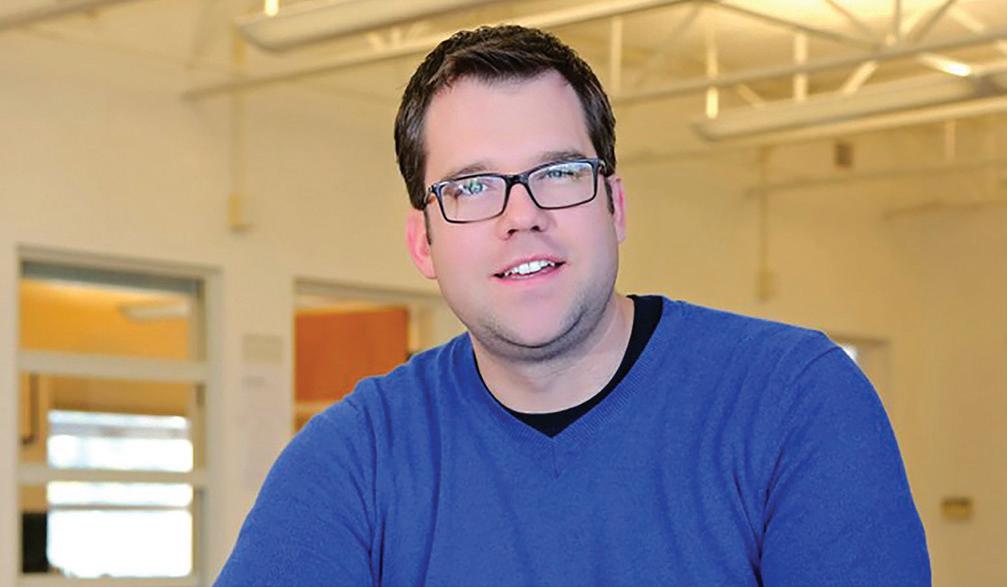
Cris Moore and Chris Kempes will give a scientific perspective on Holst’s work. With snippets of physics, geology, and astrobiology, they will celebrate the uniqueness of each planet, ages from both space exploration and the human imagination. These other planets give us insight into the origin and future of life on Earth, and the prospect of life on other worlds.
Mars, the Bringer of War: An insistent 5/4 meter, tapped out by the wood of the bows, opens the movement and continues throughout. Trumpet calls announce the arrival of the god of war, and his violence saturates this entire movement, rising to the massive chords that bring it to a grinding close.
Venus, the Bringer of Peace: The pure, cool, and precise music brings complete contrast, a draught of clear water after the fire and smoke of the opening movement. Silvery violin solos contribute to the mood of calm.
Mercury, the Winged Messenger: Although third in the suite, this scherzo was the last movement to be composed and is musically the most complex. Holst mixes meters and tonalities daringly: For example, the first and second violin sections play in different keys.
Jupiter, the Bringer of Jollity: Holst is more earthbound in his intentions here, describing his Jupiter as “one of those jolly fat people who enjoy life.” The movement is in rondo form, and at the center comes a stately melody that has become a symbol of English pomp and ceremony (Holst later used this tune to set the text “I Vow to Thee, My Country”).
Saturn, the Bringer of Old Age: This movement, Holst’s favorite, opens with eerie, empty chords and soon leads to madly tolling bells that signal the passage of time, but a noble chorale for trombones (Holst’s own instrument) establishes a mood of acceptance and serenity.
Uranus, the Magician: One of the most brilliant sections of the suite, Uranus has been compared to The Sorcerer’s Apprentice, although Holst did not know Dukas’ music when he wrote The Planets. Here is a portrait of a magician going through all his tricks: The movement opens with a four-note motto that will recur in many forms. Near the end, the magician vanishes in a puff of smoke, the motto thunders out, and the music ends in silent mystery.
Neptune, the Mystic: Holst takes an artistic risk here, choosing to end quietly after all the brilliance that has preceded the movement. Mysterious swirls of sound hover at the edge of this solar system, and the orchestra remains at a pianissimo dynamic throughout. At the end, a six-part women’s chorus sings a wordless text offstage, repeating the final measure until, in Holst’s words, “the sound is lost in the distance” and the audience is left at the silent edge of infinite space.
―Program Note by
Eric BrombergerBorn in 2011 in Japan, Himari began her violin studies at the age of three under the tutelage of Koichiro Harada and Machie Oguri.
She gave her professional orchestral solo debut at six years of age.
In 2022, as one of the youngest ever applicants, Himari gained admittance to the renowned Curtis Institute of Music in Philadelphia, where she presently studies with the widely respected pedagogue, Ida Kavafian.
Himari has won top prizes at international competitions, including the grand prize at the International Competition for Young Violinists in Honor of Karol Lipinski and Henryk Wieniawski, the first prize and special grand prize at the 12th Arthur Grumiaux International Violin Competition (Belgium), the first prize and special prize at the 26th Andrea Postacchini International Violin Competition (Italy), the first prize at the 20th Scherkunchik International Music Competition (Russia), and the first Prize at the 2nd Leonid Kogan International Violin Competition (Belgium), among others.
World-renowned violin pedagogue Zakhar Bron said about HIMARI:
“With extraordinary talent and an unbelievably high level of skill, she performed playing a wide variety of tones which were so expressive and moved the entire audience.”
In 2019, she participated in the International Summer Academy held by the Mozarteum University Salzburg. She is an award-winner of the academy’s concert held during the Salzburg Festival, where she was the youngest participant. In addition, she has performed in concerts in Russia, Switzerland, Austria, Italy, Belgium, and Ukraine.
Himari has worked with conductors such as Vladimir Spivakov, Nikolai Jajura, Ivan Storch, Ivan Strukhov, Keri-Lynn Wilson, Kenichiro Kobayashi, Naoto Otomo, Junichi Hirokami and many more.
She has performed with the Moscow Philharmonic Orchestra, the Russian National Philharmonic Orchestra, Kiev National Philharmonic Orchestra, the NHK Symphony Orchestra, the Yomiuri Nippon Symphony Orchestra, the New Japan Philharmonic Symphony Orchestra, the Tokyo Symphony Orchestra, the Japan Philharmonic Orchestra, the Tokyo Philharmonic Orchestra, and the Century Orchestra of Japan, among others.
Himari studies under Koichiro Harada, Machie Oguri, and Ida Kavafian. She joined the Curtis Institute of Music in August 2022.
Himari plays the 1717 “Hamma” Stradivarius Violin on generous loan from Mr. Yusaku Maezawa. Her bow is on loan from the Munetsugu Collection.
Learn more at santafesymphony.org/himari

Sunday, October 15—4:00 pm

... if someone is truly expressing something musical, then that is what you hear.
Ida Kavafian
Internationally acclaimed as a violist as well as a violinist, the versatile Ida Kavafian is an artistmember of the Chamber Music Society of Lincoln Center and former violinist of the Beaux Arts Trio. For 34 years she has been Artistic Director of Music from Angel Fire in New Mexico, where some 200 Curtis students have participated in the Young Artist Program to date. She was a founder of the Bravo! Colorado festival, serving as its Artistic Director for 10 years; and co-founded the chamber ensembles Opus One, Tashi, and Trio Valtorna. She also performs as a soloist and in recital with her sister, violinist Ani Kavafian.
Ida Kavafian has premiered numerous works, including concertos by Toru Takemitsu and Michael Daugherty, whose Fire and Blood she recorded with the Detroit Symphony—and performed at The Lensic with The Santa Fe Symphony in 2019. She has toured and recorded with jazz artists Chick Corea and Wynton Marsalis, and with fiddler/composer Mark O’Connor.
Born in Istanbul of Armenian parentage, Ida is a graduate of the Juilliard School, where she studied with Oscar Shumsky. She made her debut through Young Concert Artists with the pianist Peter Serkin, and also received the coveted Avery Fisher Career Grant. She resides with her husband, violist Steven Tenenbom, in Philadelphia and Connecticut, where they breed and train prizewinning Hungarian Vizsla show dogs.
Since 1998 Ida has served on the faculty of the Curtis Institute of Music, where she received the 2013 Lindback Foundation Award for Distinguished Teaching. She also teaches at the Juilliard School and the Bard College Conservatory of Music.
Learn more at santafesymphony.org/ida-kavafian.



T homas Heuser, Guest Conductor
Carmen Flórez-Mansi, Choral Director
The Santa Fe Symphony Orchestra
The Santa Fe Symphony Chorus
Caitlin Gotimer, Soprano
Kathleen Felty, Mezzo-Soprano
Philippe L’Esperance, Tenor
Cory McGee, Bass-Baritone
Collaboration with the Santa Fe Opera 2023 Apprentice Singers Program
This season, we proudly present guest soloists from the SFO's Apprentice Program for Messiah. This prestigious program for singers is internationally recognized as one of the finest programs of its type. Each year, approximately 40 apprentice singers are chosen from a competitive applicant pool.
“Graduates” of the Santa Fe Opera Apprentice Programs for Singers and Technicians are active with opera, theater and ballet companies around the world, as well as in the film and television industry. All credit the Apprentice Program as instrumental to their artistic growth and current career.
Part I Sinfonia (overture)
Comfort ye (tenor recitative)
Every valley (tenor aria)
And the glory of the Lord (chorus)
Thus saith the Lord (bass recitative)
But who may abide the day of his coming (alto aria)
And He shall purify (chorus)
Behold, a virgin shall conceive (alto recitative)
O Thou that tellest good tidings to Zion (alto aria and chorus)
For behold, darkness shall cover the earth (bass recitative)
The people that walked in darkness (bass aria)
For unto us a child is born (chorus)
Pifa (“Pastoral Symphony”)
There were shepherds abiding in the field (soprano recitative)
And lo, the angel of the Lord (soprano recitative)
And the angel said unto them (soprano recitative)
And suddenly there was with the angel (soprano recitative)
Glory to God (chorus)
Rejoice greatly, O daughter of Zion (soprano aria)
Then shall the eyes of the blind be opened (alto recitative)
He shall feed His flock like a shepherd (soprano and alto duet)
His yoke is easy, and His burthen is light (chorus)
Part II Behold the Lamb of God (chorus)
He was despised (alto aria)
Surely He hath borne our griefs (chorus)
And with His stripes we are healed (chorus)
All we like sheep have gone astray (chorus)
All they that see him (tenor recitative)
He trusted in God (chorus)
Thy rebuke hath broken His heart (tenor recitative)
Behold and see (tenor aria)
He was cut off (tenor recitative)
But Thou didst not leave His soul in Hell (tenor aria)
Why do the nations so furiously rage together? (bass aria)
Let us break their bonds asunder (chorus)
He that dwelleth in heaven (tenor recitative)
Thou shalt break them (tenor aria)
Hallelujah (chorus)
Part III I know that my Redeemer liveth (soprano aria)
Since by man came death (chorus)
Behold, I tell you a mystery (bass recitative)
The trumpet shall sound (bass aria)
Then shall be brought to pass (alto recitative)
O death, where is thy sting? (alto and tenor duet)
But thanks be to God (chorus)
Worthy is the Lamb that was slain (chorus)
Amen (chorus)

Saturday, November 18—7:00 pm
Sunday, November 19—4:00 pm
Thomas Heuser, Guest Conductor
Carmen Flórez-Mansi, Choral Director
The Santa Fe Symphony Orchestra
The Santa Fe Symphony Chorus
Caitlin Gotimer, Soprano
Kathleen Felty, Mezzo-Soprano
Philippe L’Esperance, Tenor
Cory McGee, Bass-Baritone



In the latter part of his career, the music of Handel had become less fashionable and his financial straits dire. Nonetheless, in 1741, he was invited by William Cavendish, Duke of Devonshire and Lord Lieutenant of Dublin, to compose and present a series of concerts in Ireland to benefit local charities. This fortuitous invitation culminated in the first public presentations of the now-famous Messiah. Before leaving for Ireland that fall, Handel composed Messiah in London in a mere 24 days. He had little or no idea of the quality, disposition, or experience of the performers with whom he would be working in Dublin. Therefore, when he arrived in Dublin in November 1741, he changed the work to suit the particular abilities of his cast, and never did perform Messiah exactly as he’d written it the previous fall.
In fact, each time he prepared a performance of Messiah, Handel changed it to suit the particular abilities of the singers engaged. Sometimes he changed things slightly, simply transposing an aria from one key to another to fit the range of a particular singer. Other times, he reassigned arias to different voices either because he had a different mix of soloists, or because he had a particular guest star he wanted to feature. Sometimes he recomposed movements altogether. While some patterns emerged over time, we cannot determine with certainty that Handel favored one particular version over the others. In all, there are at least 10 different arrangements of the score, with 15 individual movements existing in at least 43 different versions. Messiah is scored for oboes, bassoons, trumpets, strings, harpsichord, timpani, soloists, and chorus.
Handel presented 12 concerts in Dublin before unveiling Messiah on Tuesday, April 13, in the New Musick-Hall on Fishamble Street. The normal capacity of the Musick-Hall was 600 people, but the Dublin Journal reported a crowd of at least 700. Such was the excitement about the new work that a Journal article admonished women to “come without hoops” and men to “come without swords” so that more people could be crammed in. The event was a categorical artistic and financial success, earning great reviews and making it possible for 142 people to be released from debtors’ prison. Handel waited a year before presenting Messiah in London. Seven years later, in 1750, he came upon the idea to perform the oratorio as a fund-raiser for the Foundling Hospital. Annual performances have continued in London and around the world ever since. The Hospital still possesses Handel’s autographed score and performance notes, which he left to the institution upon his death. Messiah marked the beginning of a resurgence in Handel’s career; when he died, in 1759, he was able to leave a substantial legacy to a niece, friends, servants, and charities in England.
—Program Note
by Tom Hall

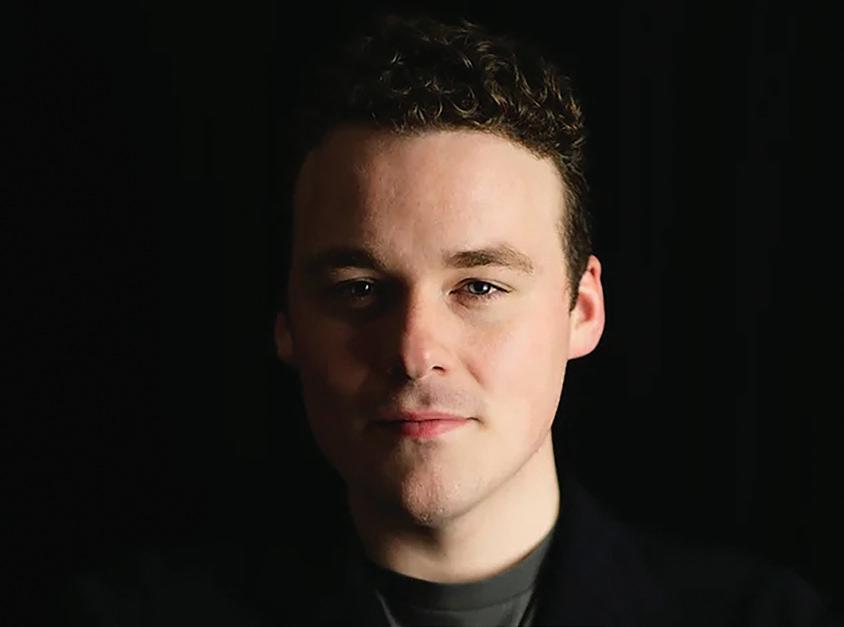

Saturday, November 18—7:00 pm
Sunday, November 19—4:00 pm
Praised for her "full, focused soprano," Caitlin Gotimer made her role debut as Tosca with Arizona Opera followed by her Dallas Opera debut as Fiordiligi in Mozart's Così fan tutte in the 2022–2023 season. She joined the Santa Fe Opera Apprentice program during the summer of 2023 where she covered the role of Tosca. Caitlin recently completed a residency with the Marion Roose Pullin Arizona Opera Studio. During the 2021–2022 season, Caitlin was seen as Micaëla in Bizet's Carmen, Mrs. Anderssen in Sondheim's A Little Night Music, and Fiordiligi in Mozart's Così fan tutte. She performed a variety of scenes and arias during Arizona Opera's Reimagined 2020–2021 season, including highlights from Madame Butterfly, La rondine, and Pagliacci.
Praised for her “powerful, rich, nuanced” voice and “emotionally moving” performances, Kathleen Felty is a recent alumna of the Lyric Opera of Chicago’s Ryan Opera Center. Felty received attention from the Chicago Tribune for her “clarion tone” and “compelling acting” in her mainstage debut as Laura in Verdi’s Luisa Miller in 2019. She went on to perform alongside Sondra Radvanovsky in Lyric’s production of The Three Queens, which was released as an album in 2022. In Lyric Opera of Chicago’s 2021-2022 season, she performed the roles of Third Lady in Barrie Kosky’s production of The Magic Flute, Carmen, and Third Lady in The Magic Victrola; covered the role of Paula in Florencia en el Amazonas, and appeared in concert for Sunday in the Park with Lyric’s Rising Stars, Rising Stars in Concert, and as the alto soloist for Beethoven’s 9th Symphony alongside Matthew Polenzani and Eric Owens, conducted by Sir Andrew Davis. Her other notable performances in Chicago include Sole e Amore, Magic Music Around the World, Twilight Gods, the Harris Theater’s Beyond the Aria series, and multiple recitals for Chicago’s WFMT Classical Radio.
Philippe was a Santa Fe Opera Apprentice Artist for Summer 2023. Praised for his “agility, range, and pleasant timbre”(Opera News), he has appeared as Ernesto in Don Pasquale and as Alessandro in Mozart’s Il re Pastore at the New England Conservatory. A recent alumnus of the Merola Opera Program, he participated in a virtual opera, “Back Home: Through the Stage Door,” where he performed selections from La Cenerentola and Die Fledermaus. Philippe has appeared as a Gaddes Festival artist and Gerdine Young Artist with the Opera Theater of Saint Louis. Most recently with the company he appeared as Lucano in Monteverdi’s The Coronation of Poppea. Other roles include Giuseppe in Verdi’s La Traviata and Jake in Ricky Ian Gordon’s The Grapes of Wrath. At the Manhattan School of Music he was featured as Matthew in Picker’s Emmeline, Prince Ramiro in Rossini’s La Cenerentola, Ferrando in Mozart’s Cosi Fan Tutte, Sandor Barinkay in Strauss’s Der Zigeunerbaron and Tito in Mozart’s La Clemenza di Tito.
Hailing from Stafford, Virginia, bass-baritone Cory McGee opens his 2023–2024 season performing the title role in Mozart’s Don Giovanni with Wolf Trap Opera and making his debut with Opera Philadelphia as Pietro in Verdi’s Simon Boccanegra. He will also portray Theseus in Britten’s A Midsummer Night’s Dream with Atlanta Opera, as well as Second Knight in Wagner’s Parsifal and the Imperial Commissioner in Puccini’s Madama Butterfly, both with Houston Grand Opera. He will sing Colline in a concert of Puccini’s La bohéme with Chattanooga Symphony.
American conductor Thomas Heuser has been widely recognized for his stirring leadership and energetic presence both onstage and in the community. He has served as Music Director of the San Juan Symphony since 2016, and is entering his 13th season as Music Director of the Idaho Falls Symphony, a regional professional orchestra that serves southeast Idaho and western Wyoming. Thomas lives in scenic Durango with his wife, violinist Lauren Avery, and their son Theodore.
Dr. Heuser was awarded a Fulbright Scholarship for Orchestral Conducting in Germany while serving as a Conducting Fellow with the Cincinnati Symphony Orchestra. His Fulbright residency at the Hochschule für Musik und Theater München included orchestral performances in Munich and Berlin and his European operatic debut with Jeunesses Musicales Deutschland. Moving from Munich to San Francisco, Thomas enjoyed three seasons as the Principal Guest Conductor of the San Francisco Academy Orchestra, working alongside members of the San Francisco Symphony. Among a variety of diverse engagements, Thomas has given subscription concert performances with the Lexington Philharmonic, Symphony New Hampshire, the Boise Baroque Orchestra, and the Pittsburgh New Music Ensemble, as well as the Winston-Salem, Illinois, Wyoming, Bozeman, Missoula, Flagstaff, Vallejo, Grand Junction, and Portsmouth Symphony Orchestras, among others. Just before the pandemic shutdown of 2020, he was the conductor of the All-State Orchestras in New Mexico and Alabama.
The son of two molecular biologists at Washington University in St. Louis, Thomas began violin lessons at an early age and studied piano at the St. Louis Symphony Music School. He graduated Phi Beta Kappa from Vassar College as a piano performance major and earned his Masters in Instrumental Conducting (MM) from Indiana University’s Jacobs School of Music. In 2013 he completed his Doctorate in Orchestral Conducting (DMA) from the University of Cincinnati’s College-Conservatory of Music. His primary conducting mentors include Paavo Järvi, Bruno Weil, Mark Gibson, Thomas Baldner, David Effron, Marin Alsop, David Robertson, Gustav Meier, and Larry Rachleff. Learn more at santafesymphony.org/heuser


Thornburg is a global investment management firm delivering on strategy for institutions, financial professionals and investors worldwide.
Thornburg is proud to support The Santa Fe Symphony.
Guillermo Figueroa, Music Director
The Santa Fe Symphony Orchestra
Santa Fe Youth Symphony Association
William Waag, SFYSA
Associate Artistic Director & Youth Symphony Orchestra Conductor
Laurie Rossi, Guest Conductor
2022–2023 Gala
Conducting Opportunity
Toby Vigneau, Bass
2022–2023 Concerto Competition Winner—Senior Division



THE LENSIC
Selections from The Nutcracker Suite
PETER ILYCH TCHAIKOVSKYBorn May 7, 1840, Votkinsk
Died November 6, 1893, St. Petersburg
In 1891, the Maryinsky Theatre in St. Petersburg approached Tchaikovsky with a commission for a new ballet. They caught him at a bad moment; at age 50, Tchaikovsky was assailed by worries that he had written himself out as a composer, and—to make matters worse—they proposed a storyline that the composer found unappealing: They wanted to create a ballet on the E.T.A. Hoffmann tale Nussknacker und Mausekönig, but in a version that had been retold by Alexandre Dumas as Histoire d’un casse-noisette and then further modified by the choreographer Marius Petipa. This sort of Christmas fairy tale, full of imaginary creatures set in a confectionary dream-world of childhood fantasies, left Tchaikovsky cold, but he nonetheless accepted the commission.
Sidetracked by his American tour and his sister’s death, Tchaikovsky tried to resume work on the ballet when he returned to Russia. To his brother, he wrote: “The ballet is infinitely worse than The Sleeping Beauty—so much is certain.” The score was completed in the spring of 1892, and The Nutcracker was produced at the Imperial Theatre in St. Petersburg that December, only 11 months before the composer’s death at 53. At first, it had only a modest success, but then its popularity grew so steadily that Tchaikovsky reassessed what he had created: “It is curious that all the time I was writing the ballet I thought it was rather poor, and that when I began my opera [Iolanthe] I would really do my best,” he wrote. “But now it seems to me that the ballet is good, and the opera is mediocre.”
Tchaikovsky could have had no idea just how popular The Nutcracker would become: It has become an inescapable part of our sense of Christmas. This concert offers a selection of movements from the ballet, largely characteristic dances. March (also known as March of the Toy Soldiers) plays during a lively party scene, which includes dancing, games, and merriment. The fiery Russian Dance (sometimes called Trepak) is a wild Cossack dance, while La mère Gigogne (roughly equivalent to The Old Woman Who Lived in a Shoe, and also called Mother Ginger) features dancing clowns. Tchaikovsky, who was an admirer of Johann Strauss, loved waltzes, and this selection includes one of his finest, The Waltz of the Flowers from Act II.
Sunday, December 10 4:00 PM
TCHAIKOVSKY
Selections from The Nutcracker Suite
March
Waltz of the Flowers
Trepak
Mother Ginger
IRVING BERLIN
White Christmas
CAMILLE SAINT-SAËNS
Samson et Dalila: Bacchanale
Side-by-Side with Santa Fe Youth Symphony
LEROY ANDERSON
Sleigh Ride
Side-by-Side with Santa Fe Youth Symphony
GERONIMO GIMENEZ
La Boda de Luis Alonso
Laurie Rossi, Guest Conductor
GIOVANNI BOTTESINI
Double Bass Concerto in B Minor
Allegro moderato
Andante
Allegro
Toby Vigneau, soloist
2022–2023 Concerto Competition
Winner—Senior Division
JAMES M. STEPHENSON
A Charleston Christmas
Arr. LUCAS RICHMAN
Hanukkah Festival Overture
JAMES STEPHENSON
Holly and Jolly Sing-A-Long

Born 1888, Tyumen, Russia
Died 1989, New York City
Born in Russia, Israel Baline came to this country with his family at age five. He began writing songs as a boy and published his first at age 19. Four years later, under the name Irving Berlin, he achieved fame and wealth with the song Alexander’s Ragtime Band and went on to become one of the most characteristic American voices of the 20th century: Estimates of the number of songs he wrote run as high as 1500. Many of these—songs like God Bless America, There’s No Business Like Show Business, This Is the Army, and Mr. Jones —have become part of the American national identity.
White Christmas was originally part of Berlin’s score for the 1942 film Holiday . The mellow sound of Bing Crosby’s voice was perfectly suited to this song, with its warm but relaxed sentiment, and White Christmas —in its many reincarnations—has become an inescapable way we think of that holiday. Its popularity has never been in doubt: White Christmas won the Academy Award as the best song of 1942.
―Program Note by Eric Bromberger
Samson et Dalila: Bacchanale
Born 1835, Paris
Died 1921, Algiers
Saint-Saëns had a difficult time with his opera based on the story of Samson and Delilah , from the book of Judges. He originally planned it as an oratorio and set to work in the late 1860s, but he was soon convinced to recast it an opera. When parts of the opera were performed, however, they provoked strong criticism. Worse, the Paris Opera refused to perform an opera based on a Biblical subject.
Samson et Dalila might have gone unperformed, but Saint-Saëns’ good friend Franz Liszt saw the score, admired it, and arranged a production in Weimar. That performance on December 2, 1877 (in German) was a huge success, but the Paris Opera remained adamant in its objections and refused to stage the opera until 1890. By the time of his death in 1921, however, Saint-Saëns had the satisfaction of knowing that the Paris Opera had performed Samson
et Dalila more than 500 times.
One of the most famous parts of the three-act opera is the Bacchanale , which is heard in its final scene. After being seduced by Dalila, Samson has been blinded, his hair shorn, and he has been shackled and forced to turn a mill-wheel as he laments his failure to protect his people. The Philistines celebrate their triumph over Samson with a wild dance. A bacchanale is not a musical form but rather an event; it has been described as a wild drinking party—the term comes from Bacchus, the Roman god of wine.
Saint-Saëns had traveled extensively through northern Africa and the Middle East, and he adapted the idiom of the music of that region for his Bacchanale , with its evocative oboe solo at the opening and the wild energy of its dances. The Bacchanale is infectious music, built on a series of crisp tunes, all projected in an energetic 2/4 meter. This music marks the final moments of the Philistines’ triumph: Samson will shortly summon his strength and bring the temple tumbling down upon them all.
Born 1854, Seville Died 1923, Madrid
By the age of 12, Gerónimo Giménez was already playing in the first violin section of the Teatro Principal orchestra in his native Cadiz. A genuine prodigy, he became the director of an opera company five years later. In 1874, he enrolled at the Paris Conservatory, where he studied violin and composition. He traveled to Italy after graduation but soon returned to Spain, where he settled in Madrid. In 1885 he became director of the Teatro Apolo de Madrid and later the Teatro de la Zarzuela.
Giménez’s music has been cited as an influence on such Spanish notables as Joaquin Turina and Manuel de Falla. La Boda de Luis Alonso is a shortform zarzuela, a characteristic Spanish popular entertainment style of work that often includes singers and dancers. The title translates to “The Marriage of Luis Alonso.” The intermezzo from the piece demonstrates the ebullient energy of the Spanish showpiece tradition; there’s no question of where this music originated.
—Program Note by R. M. Teplitz







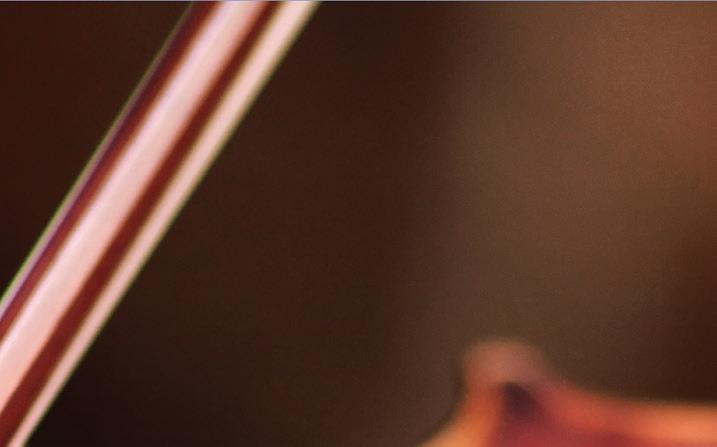










At Century Bank, community is at the core of who we are. We believe in investing in our local communities and supporting our customers with the best in local banking. We Are Stronger Together!






Guillermo Figueroa, Music Director
The Santa Fe Symphony Orchestra
Jason Vieaux, Classical Guitar



Concerto Grosso in G minor, No. 8, op.6
“Christmas Concerto”
ARCANGELO CORELLI
Born 165, Fusignano, Italy Died 1713, Rome
Mystery and controversy surround much of the life of Arcangelo Corelli. Born of a wealthy landowning family, he studied music at the cathedral of San Petronio in Bologna, a site with an illustrious pedigree of musicians and composers. Corelli is thought to have traveled extensively in Europe during his youth, but exactly where and when is not clear. He was teacher and mentor to an entire generation of violinists and composers, and the weekly musical soirées he led in the palace of his patron, Cardinal Pietro Ottoboni, became known throughout Europe. Preceding Vivaldi, Bach and Handel by only a generation, Corelli was in the forefront of developing the concerto as a genre.
Except for a few works, Corelli published all his compositions in six volumes of 12 works each. The first five sets were violin and trio sonatas; Opus 6 is a set of twelve concerti grossi, in which he set two violins and a viola (or cello) against a larger string ensemble.
The Concerto No. 8, also known as Christmas Concerto, is the best known of the set. Written for the church mass in celebration of the nativity, it is subtitled Fatto per la notte di Natale, but this has not restricted its performance to Christmas Eve. The Concerto has no true movements per se, but rather six short sections of music that flow together with brief transitional passages. The last, a Pastorale: Largo , is its most famous. But Corelli marked it “ad libitum” (at will), meaning that this lovely movement could be omitted; it is doubtful that anyone ever does. The Pastorale does not refer to a bucolic scene, but to the shepherds who gathered at the manger. The music becomes joyous, with long-held notes imitating the drone of bagpipes.
—Program Note by Wordpros
Born 1901, Sagunto
Died 1999, Madrid
Since its premiere in Madrid on December 11, 1940, the Concierto de Aranjuez has remained Joaquín Rodrigo’s most popular composition. Its appealing tunes, virtuoso guitar part, bright colors, lively rhythms, and an imaginative fusion of guitar and orchestra have made it perhaps the most famous guitar concerto ever written. In addition, the music
Sunday, December 24—4:00 pm
PROGRAM
ARCANGELO CORELLI
Concerto Grosso in G Minor, No.8, op.6, “Christmas Concerto”
ANTONIO VIVALDI
Guitar Concerto in D Major, RV 93
Allegro giusto
Largo
Allegro
Jason Vieaux, Classical Guitar
JOACQUĺN RODRIGO
Concierto de Aranjuez
Allegro con spirito
Adagio
Allegro gentile
Jason Vieaux, Classical Guitar
WOLFGANG AMADEUS MOZART
Symphony No. 36 “Linz”
Adagio—Allegro spiritoso
Poco adagio
Menuetto
Presto
FULL CONCERT SPONSOR
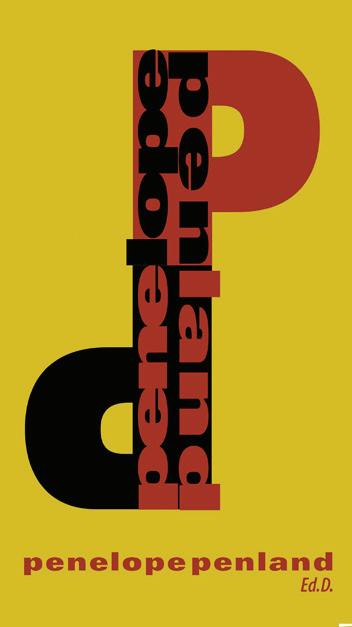
became a sort of rallying point in Spanish music: In the gloomy and demoralized period following the Civil War, this work showed Spanish composers how they might make use of their own musical identity.
Rodrigo liked to associate his compositions with specific locations in Spain. The Concierto de Aranjuez takes its title from the small town that was once a royal residence. Located about 30 miles south of Madrid, Aranjuez is still famous for its gardens. While the concerto contains no folk elements, Rodrigo has noted that in this music he was trying “to evoke a certain time in the life of Aranjuez—the end of the eighteenth and the beginning of the nineteenth century at the court of Charles IV and Ferdinand VII. It was an epoch subtly characterized by ‘majas’ [the stereotypical image of a traditional Spanish woman, often holding a folding fan] and bullfighters …”
At the very beginning of the Allegro con spirito , the guitar announces the rhythm that will underlie much of the movement, and quickly the orchestra enters with the first of the movement’s dramatic, almost declamatory, themes. Rodrigo takes special care to insure that the guitar is not buried by the orchestra: Soloist and orchestra take turns with the themes rather than competing with each other, and Rodrigo assigns much of the orchestra’s work to solo winds and solo cello.
As long as the two outer movements combined, the Adagio opens with bare chords from the guitar. Over this accompaniment, English horn sings the long and haunting melody that will dominate the entire movement. Soon the guitar takes this up, and the melody passes between soloist and orchestra, growing dramatic before the movement comes to a quiet close. The concluding Allegro gentile , which the composer has described as “a courtly dance,” is built on only one theme, announced at the very beginning by the guitar. This recurs continuously, varied on each repetition, until the very end, which is made particularly effective by its understatement.
—Program Note by Eric Bromberger
Born 1678, Venice
Died 1741, Vienna
Vivaldi spent nearly 40 years (1704-1740) as music director of the Ospedale della Pietà, a home for illegitimate, abandoned, and orphaned girls in Venice. In that era, perhaps more progressive than our own, the Ospedale believed that teaching these girls to play an instrument would give them a useful skill, rescue them from a life of poverty, and keep
them from becoming lifelong burdens on the state. Vivaldi’s responsibilities were to teach violin and write music for the girls to play, and it was for them that he wrote most of his 450 concertos. The vast majority are for the composer’s own instrument, the violin, and he also wrote for other string instruments and winds. But apparently some of the girls played unusual instruments, and Vivaldi wrote for them as well; among these works is the Concerto in D Major.
This has become one of Vivaldi’s most popular concertos, and it exists in several forms. Although originally composed for lute and orchestra, it is probably best known in its present arrangement for guitar, but it has also been played on the mandolin and the violin. This popularity is no surprise at all. Its pleasing melodies, rhythmic vitality, and infectious spirits have made this concerto a favorite with both audiences and performers.
Perhaps because he was writing for an instrument that is not very powerful, Vivaldi scored this concerto for the unusual orchestra of only two violin parts and a basso continuo line. Much of this music’s effectiveness comes from the deft interplay of soloist and orchestra, for the ritornello themes are full of snap and energy, and they contrast nicely with the delicate but agile sound of the guitar. This concerto requires little description, and many listeners will discover they already know this pleasing music. It is in three movements in the expected fast-slow-fast sequence. Vivaldi launches the concerto with a firm Allegro giusto built on the orchestra’s rhythmic opening ritornello, and the soloist plays off the orchestra’s strong statements. The music feels constantly alive, from the snapped 32nd-notes of the ritornello through the busy runs that are exchanged by soloist and orchestra. An expressive Largo is followed by a concluding Allegro that dances (gallops?) happily along its 12/8 meter.
—Program Note by Eric Bromberger
Symphony No. 36 in C Major, K.425 “Linz”
WOLFGANG AMADEUS MOZART
Born 1756, Salzburg Died 1791, Vienna
Wh en Mozart and his wife were en route from Salzburg to Vienna in 1783, they stopped in Linz as guests of Count Thun, the wealthy father of one of Mozart’s students. They did not know until they arrived that the Count had scheduled a concert on Mozart’s behalf, for only a few days later. The composer wrote to his father: “On Thursday, November 4, I am going to give a concert in the theater, and as I have not a single symphony by me, I am writing at breakneck speed a new one, which
must be ready by then. I now end because I positively must get on with my work.”
Even Mozart, who could write at blinding speed, must have felt a little pressed this time, but he finished the symphony on November 3rd. Yet there is not the faintest trace of rush about this magnificent music, which is polished and complete in every way. The Symphony in C Major is the first symphony Mozart wrote after moving to Vienna, and some have heard the influence of Haydn in the slow introduction, the singing slow movement, and the sturdy minuet. But the “Linz” Symphony, as it has come to be known, is pure Mozart, particularly in its perfect sense of form and expressive chromatic writing. There is a special quality about this symphony, almost impossible to define: The music glows with health and energy, its sunny C-major energy propelled along at moments by dotted-rhythm fanfares.
The thunderous slow introduction (the first such intro in a Mozart symphony) instantly rivets attention, but serves little musical purpose beyond that: None of its themes reappears in the rest of the movement. The movement leaps ahead at the aptly named Allegro spiritoso , where the first violins’ opening
Sunday, December 24—4:00 pm
theme has a rhythmic snap that will characterize the entire symphony; the second subject is one of those wonderful Mozart themes that changes key and character even as it proceeds.
The Andante is a long flow of easy melody, so graceful that it is easy to overlook that Mozart does something extremely unusual here: He uses trumpets and timpani in a slow movement, and their color gives this music rare expressive power. The minuet is forthright (and somewhat foursquare), while the trio section, with its ländler tune in the winds, beautifully overlaps phrases in its later strains.
The Presto finale, in sonata form rather than the expected rondo, zips along with such unremitting energy that it almost feels like a perpetual-motion movement. So dazzling is this energy that the subtlety of Mozart’s writing nearly gets lost in the rush: All three of this movement’s themes are related. Throughout, Mozart's chromatic writing allows the music to slide effortlessly through many different moods until the symphony is rounded off with a coda that is shining, heroic—and quite brief.
—Program Note by Eric Bromberger
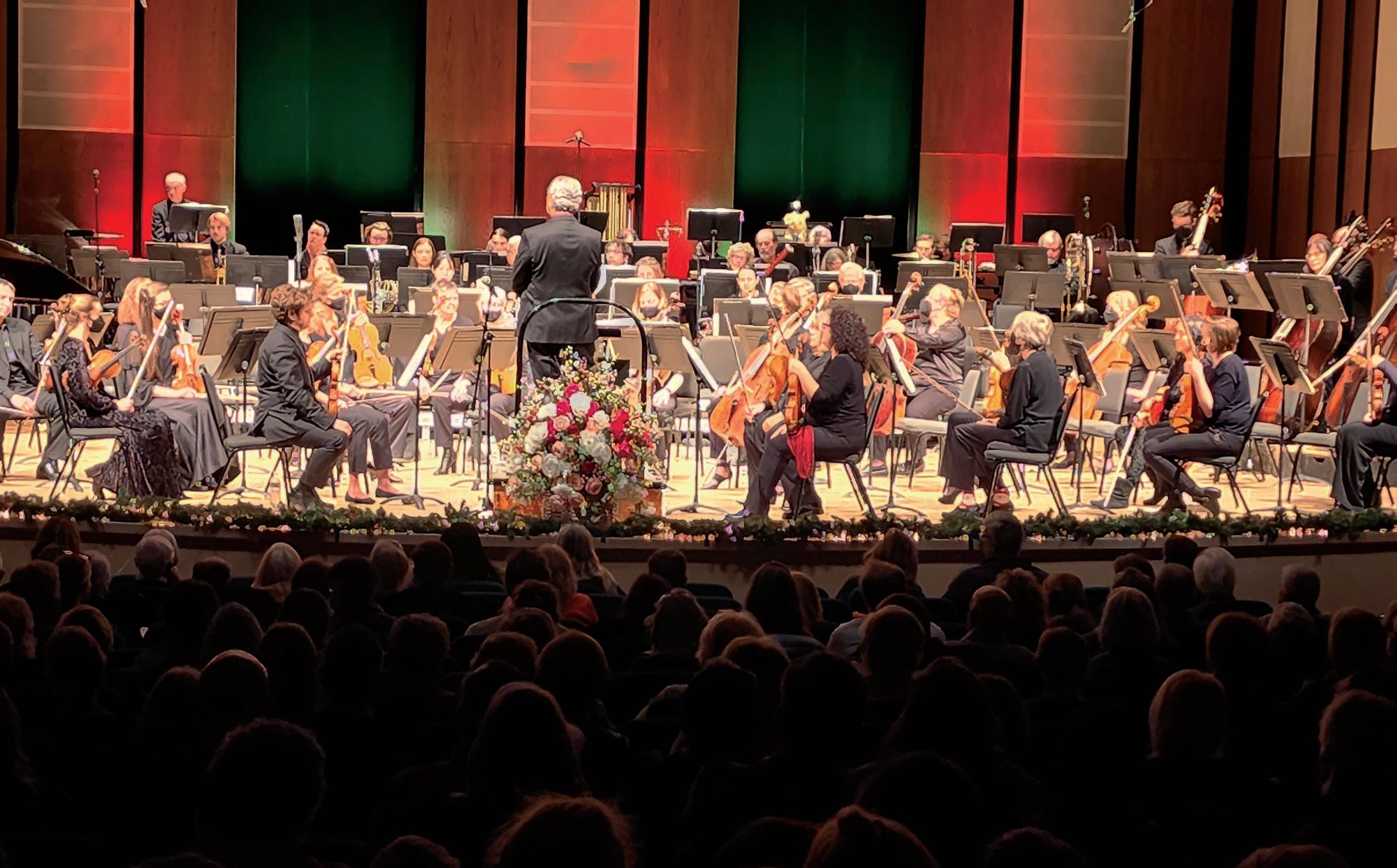
Grammy-winner Jason Vieaux, “among the elite of today’s classical guitarists” (Gramophone), is described by NPR as “perhaps the most precise and soulful classical guitarist of his generation.”
In appearances from New York’s Lincoln Center to Amsterdam’s Concertgebouw and the Seoul Arts Center, Jason Vieaux has cemented his reputation as an artist of brilliance and uncompromised mastery. Cited for his “eloquent and vibrant performances” on disc (Gramophone Magazine) he is hailed as “virtuosic, flamboyant, dashing and, sometimes ineffably lyrical” (New York Times) on stage.
Sought-after for his extensive concerto repertoire, Vieaux has performed with a long list of orchestras including Cleveland, Toronto, St. Louis, Houston, and Columbus, and has made premiere recordings with the Nashville Symphony (Leshnoff Concerto) and the Norrköping Symphony (Beal Six Sixteen). He has worked with renowned conductors including Giancarlo Guerrero, Jahja Ling, Gerard Schwarz, and David Robertson. Vieaux’s passion for new music has fostered premieres from Jeff Beal, Avner Dorman, Vivian Fung, Pierre Jalbert, Jonathan Leshnoff, David Ludwig, Mark Mancina, and Dan Visconti, among many others.
Vieaux’s extensive discography includes his “Bach Volume 2: Works for Violin” released on Azica in 2022 to rave reviews for his “eloquent and vibrant performances” (Gramophone). Additional 2022 releases include “Shining Night,” featuring his duo with acclaimed violinist Anne Akiko Meyers (Avie Records) and Michael Fine’s “Concierto del Luna” with flutist Alexa Still (Sony Classical), both enjoying strong critical acclaim. Vieaux recorded Pat Metheny’s “Four Paths of Light,” a solo work dedicated to him by Pat, for Metheny’s 2021 album “Road to the Sun.” Jason Vieaux won the 2014 Best Instrumental Classical Solo Grammy Award for “Play.” The Huffington Post declared that “Play” is “part of the revitalized interest in the classical guitar.”
“Menlo, Round Top, and the Eastern Music Festival. Overseas performance venues include Amsterdam’s Concertgebouw, Seoul Arts Center, Shanghai Concert Hall, Sala Sao Paolo, and Teatro Colon in Buenos Aires.
Vieaux enjoys ongoing performing and recording collaborations with the Escher String Quartet, mezzosoprano Sasha Cooke, violinist Anne Akiko Meyers, harpist Yolanda Kondonassis, accordion/bandoneon virtuoso Julien Labro, and saxophone virtuoso Timothy McAllister.
In 2011, Vieaux co-founded the guitar department at the Curtis Institute of Music (with David Starobin). He has taught at the Cleveland Institute of Music for 25 years. His online Guitar School for Artistworks Inc. has hundreds of subscribers from all over the world. He plays a guitar by Gernot Wagner, 2013, made in Frankfurt.
A busy touring performer, Vieaux enjoys repeated invitations from distinguished series, including San Francisco Performances, Chamber Music Society of Lincoln Center, Philadelphia Chamber Music Society, and the 92nd Street Y, among others. Festival engagements include Ravinia, Caramoor, Domaine-Forget, Music@



Guillermo Figueroa, Music Director The Santa Fe Symphony Orchestra
Philippe Quint, Violin
In describing Charlie Chaplin’s musical style as “almost Mozartian in its grace and charm,” Philippe Quint states “this a performance that will speak directly to your heart.”

Music by Chaplin, Brahms, Debussy, Stravinsky, and Gershwin
Did you know that Charlie Chaplin, one of the greatest silent movie actors and most iconic figures of the early film industry, was also a talented composer? To celebrate his 134th birthday (he was born on April 16, 1889), we present Philippe Quint’s critically acclaimed multimedia program. Inspired by the violinist’s successful 2019 album Chaplin’s Smile (Warner Classics), the program has appeared throughout the U.S., as well as the U.K., Germany, Poland, Russia, Israel, Romania, Switzerland, and Norway.
Quint’s unique arrangements of songs from Chaplin’s most celebrated films (Modern Times, City Lights, Monsieur Verdoux, The Kid, Limelight, and A King in New York) are interspersed with rare footage of the actor, along with still images and video clips from his films. The program also features music by composers who influenced Chaplin’s musical style: Brahms, Debussy, Stravinsky, and Gershwin.
“I think it’s amazing that my grandfather Charlie Chaplin is still around and loved by so many,” Kiera Chaplin, his granddaughter, told Forbes magazine, “and that many years after his first movie was made, he still surprises people. Philippe Quint’s new multimedia program Charlie Chaplin’s Smile is allowing him to be discovered by a whole new audience as a talented composer, a side of him many people did not know.”
―Program Note by Philippe Quint

Sunday, January 14 4:00 PM
CHARLIE CHAPLIN
Weeping Willows
CLAUDE DEBUSSY
Claire de Lune
CHARLIE CHAPLIN
City Lights Suite
IGOR STRAVINSKY
Tango 1940
CHARLIE CHAPLIN
Terry Theme for Limelight
CHARLIE CHAPLIN
Tango Bitterness
GEORGE GERSHWIN
Promenade Walking the Dog
JOHANNES BRAHMS
Hungarian Dance No. 5
CHARLIE CHAPLIN
Kid Fantasy
CHARLIE CHAPLIN
Smile, Theme from "Modern Times"
CONCERT SPONSORS-IN-PART
MEGAN
REACH
One of the most versatile and imaginative artists on the concert stage today, multiple Grammy Award-nominated American violinist Philippe Quint is internationally recognized for his unique approach to classical core repertoire, championing new music, rediscovering neglected works and creating a new format of docuconcert experience: multimedia journeys about lives of Astor Piazzolla and Charlie Chaplin.
“Truly phenomenal” is how BBC Music Magazine recently described him, also adding that “Quint’s tonal opulence, generously inflected with subtle portamentos, sounds like a throwback to the glory days of Fritz Kreisler.”
Philippe Quint is constantly in demand and regularly appears with major orchestras and conductors worldwide at venues ranging from the Gewandhaus in Leipzig to Carnegie Hall in New York, while making frequent guest appearances at the most prestigious festivals including Verbier, Aspen, Colmar, Hollywood Bowl and Dresden Festspiele.
Quint’s award winning 17 commercial releases discography includes a recent debut on the Warner Classics label, a CD titled Chaplin’s Smile, that features 13 original arrangements of songs by Charlie Chaplin. The disc received worldwide acclaim, multiple Editor’s Choices from all major radio stations and such publications as Forbes, Gramophone, Limelight, Strad, and Strings. The album also inspired Philippe to create and produce his first docu-concert experience—a multimedia journey with orchestra and in recital: Philippe Quint in Charlie Chaplin’s Smile, that premiered worldwide to critical acclaim. His second docu-concert multimedia journey Astor Piazzolla @100: Between Angels and Demons has also received rave reviews and will be seen premiering this season throughout the United States in its recital and Quintet versions featuring a newly commissioned ballet with members of the Joffrey Ballet.
Quint has won worldwide acclaim playing with the world’s leading orchestras and conductors. Quint’s appearances in recent seasons have taken him to the London Philharmonic, Los Angeles Philharmonic, Chicago Symphony, Baltimore Symphony, Seattle Symphony, Detroit Symphony, Indianapolis Symphony, Houston Symphony, New Jersey Symphony, Minnesota
Is it coincidence or fate that Philippe Quint returns this season to play with us on his 1708 "Ruby"Antonio Stradivari violin during our Ruby Anniversary Season? Ruby is on loan to him through the generous efforts of The Stradivari Society®.
“Most of the Stradivari violins have names that come from their owners or violinists that played on them. This one doesn't. This one was named after its color, ruby.
And the funny thing is that you would think if it's "Ruby," it needs to be red. But over the centuries, the varnish is no longer red. It's just becoming a different color on its own, despite the fact that it's in mint condition and well-maintained. But there are still parts of the instrument where you can see how intensely burgundy it was.”
—Philippe Quint

Orchestra, Bournemouth Symphony, Weimar Staatskapelle, Orchestre National du Capitole de Toulouse, Royal Liverpool Philharmonic, Bilbao Orkestra Sinfonikoa, China National Symphony, Orpheus Chamber Orchestra, Berlin Komische Oper Orchestra, and Leipzig’s MDR. He has performed under the batons of such renowned conductors such as the late Kurt Masur, Edo De Waart, Andrew Litton, Tugan Sokhiev, Ludovic Morlot, James Gaffigan, Carl St. Clair, Michael Stern, Vladimir Spivakov, Cristian Macelaru, Kristian Jarvi, Krzysztof Urbanski, Jorge Mester, Jahja Ling, Krzysztof Urbanski, Carlos Miguel Prieto, Tugan Sokhiev, Tito Munoz, Steven Sloane and Bramwell Tovey.
Winner of the “Ambassador of Arts” presented to him by Brownstone and Gateway Organizations at the United Nations, Quint is the first classical artist to star in the lead role of a major independent film, Downtown Express, co-starring Nellie McKay from producer Michael Hausmann (Gangs of New York, Brokeback Mountain and Amadeus) and multi-Emmy winning director David Grubin. This 2012 film premiered in New York and Los Angeles as well as at a number of national and international film festivals including Woodstock, New York, Houston (Opening Night), Mons (Belguim), Cuba, Vermont, and Florida.
An active chamber musician, Quint has appeared at the Mostly Mozart, Verbier, Luzern, Caramoor, Colmar, Ravinia, Aspen, Rome, Moritzburg, La Jolla, Lincoln Center and Chautauqua festivals in addition to recitals and chamber performances at the Kravis Center, UC Davis Presents, National Gallery in Washington and San Francisco Performances with Composer/Pianist Lera Auerbach.
Quint’s live performances and interviews have been broadcast on television by CBS, CNN, ABC, BBC World News, NBC, Reuters, and Bloomberg TV, as well as by radio stations nationwide including NPR, WNYC and WQXR. His recordings have received multiple “Editor’s Choice” selections in Gramophone, The Strad, Strings, and the Daily Telegraph. His remarkable degree of
Sunday, January 14—4:00 PM
lyricism, poetry and impeccable virtuosity has gripped the eyes and ears of audiences in Asia, Australia, Latin America, Africa, Europe and the U.S. with what The Times (London) describes as his “bravura technique, and unflagging energy.”
Quint’s formidable award-winning discography includes a large variety of rediscovered treasures along with popular works from standard repertoire. His AvantiClassics label recordings include Mendelssohn and Bruch Violin Concertos paired with Beethoven’s Romances with the Orquesta Sinfónica de Minería led by Carlos Miguel Prieto, original arrangements of Bach’s works by composer/pianist Matt Herskowitz titled “Bach XXI”, “Opera Breve” CD with pianist Lily Maisky, Glazunov and Khachaturian Violin Concertos with Bochumer Sinfoniker and Steven Sloane and Tchaikovsky Violin Concerto with the Sofia Philharmonic led by conductor Martin Panteleev, paired with Anton Arensky’s String Quartet No. 2, op. 35.
Other critically acclaimed albums are on the Naxos label and include the world premiere recording of John Corigliano's Red Violin Caprices, Korngold’s Violin Concerto (Prieto/Mineria), William Schuman’s Violin Concerto, Ned Rorem’s Violin Concerto, Miklos Rozsa’s Complete Works for Violin and Piano with pianist William Wolfram, Bernstein’s Serenade (Alsop/ Bournemouth) and a unique compilation of works by Paganini arranged by Fritz Kreisler, which BBC Music Magazine called “truly phenomenal.”
Making his home in New York since 1991, Quint studied at the Special Music School for the Gifted with the famed violinist Andrei Korsakov, making his orchestral debut at the age of nine. He earned both Bachelor's and Master's degrees from the Juilliard School. His distinguished pedagogues and mentors included Dorothy Delay, Cho-Liang Lin, Masao Kawasaki, Isaac Stern, Itzhak Perlman, Arnold Steinhardt and Felix Galimir.

Rustic-Sleek Decor
Tranquil and Inviting
Inventive Menu

INN AND SPA AT LORETTO
211 Old Santa Fe Trail, Santa Fe, NM (505) 984-7915 HotelLoretto.com
Reservations are available through OpenTable



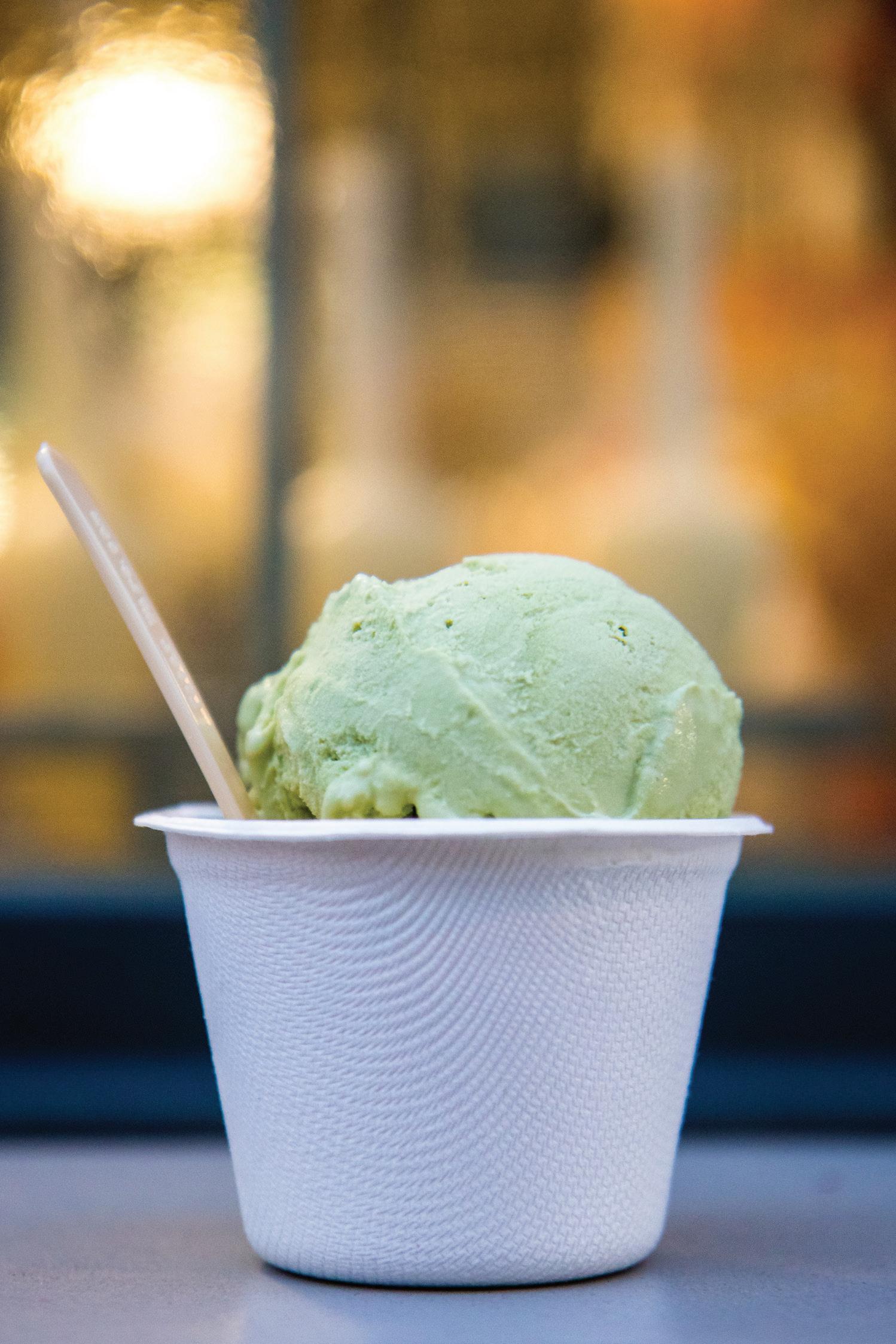
“

He made it seem … as if this were the only possible way to play the music.”
— The New York Times
Guillermo Figueroa, Music Director
The Santa Fe Symphony Orchestra
The Santa Fe Symphony Chorus
Alexi Kenney, Violin

Vitality
GALA FLAGELLO
Born 1994, Westwood, NJ
Vitality (2022) was written for the Aspen Conducting Academy 2022 orchestral readings and was inspired by a quote by Martha Graham: “There is a vitality, a life force, a quickening, that is translated through you into action and because there is only one of you in all time, this expression is unique. And if you block it, it will never exist through any other medium and will be lost.”
Graham begins in celebration of discovery and hope (the what), then reflects upon the process (the how), and closes with a warning (the why). The piece loosely follows this structure, musically exploring the prickly and potent glimmers of one’s life force alongside the uncertainty of selfexpression and vulnerability.
Vitality was written in memory of my friend and fellow horn player Marina Krol Hodge (1994–2022) and my father-in-law Steve Williams (1958–2022), both of whom left this world too soon but were the very embodiment of unique expression. Their bright spirits are present in the horn soli that appear throughout the work. Thank you to the Aspen Music Festival and School for breathing life into Vitality.
—Program Note by Gala Flagello
Violin Concerto, op.14
SAMUEL BARBER
Born 1910, West Chester, Pennsylvania Died 1981, Mount Kisco, New York
Samuel Barber began composing his Violin Concerto during the summer of 1939 while living in a small village in Switzerland. He moved to Paris later that summer and then, as war broke out, returned to the United States, where he completed the concerto. That completion, however, brought problems.
The concerto had been commissioned by the wealthy American businessman Samuel Fels, who intended it for the use of a young violinist he was promoting. Fels was dissatisfied with the last movement and asked for changes; Barber refused. This awkward situation was resolved when the violinist renounced his right to the first performance, and Barber was free to find a new
Sunday, February 18—4:00 pm
GALA FLAGELLO
Vitality for Orchestra
SAMUEL BARBER
Violin Concerto, op.14
Allegro Andante
Presto in moto perpetuo
Alexi Kenney, Violin
LEONARD BERNSTEIN
Chichester Psalms
Psalm 108 (Verse 2)
Psalm 100 (Complete)
Psalm 23 (Complete)
Psalm 2 (Verses 1 – 4)
Psalm 131 (Complete)
Psalm 133 (Verse 1)
The Symphony Chorus
AARON COPLAND
“Four Dance Episodes” from Rodeo
Buckaroo Holiday: Allegro con spirit
Corral Nocturne: Moderato
Saturday Night Waltz: Slow Waltz
Hoe-Down: Allegro
CONCERT UNDERWRITER
CONCERT SPONSORS-IN-PART
REACH FOR THE STARS
PHIL MARTIN
CHORUS SPONSORS
soloist. Albert Spalding gave the premiere on February 7, 1941, with the Philadelphia Orchestra conducted by Eugene Ormandy.
Eighty years after its composition, Barber’s Violin Concerto has become the most popular violin concerto by an American composer. The source of this popularity is no mystery: The work shows off Barber’s considerable melodic gift, particularly over the first two movements, while the finale is a breathless virtuoso piece. The concerto has some unusual features, particularly in its scoring. Barber writes for Mozart’s orchestra (pairs of winds, plus timpani and strings) as well as two unusual instruments: a “military” drum, used only in the finale, and a piano, used here as a chordal instrument. The choice of piano can seem a curious one, and Barber’s decision to arpeggiate its chords gives the instrument a continuo-like plangency, an unusual sound in the concerto’s generally romantic sonority.
While the opening movement is marked Allegro , its pace feels somewhat restrained, so that the concerto seems to open with two slow movements, followed by a fast finale. The opening movement is notable for its continuous lyricism. Solo violin has the long opening melody, and the triplet that recurs during this theme will figure importantly throughout the development. The coda recalls the two main themes, and the movement concludes quietly on the triplet rhythms that have shaped so much of it.
The Andante is very much in the manner of the opening movement. Over muted strings, solo oboe sings the long main theme; the violin’s entrance is delayed, and Barber marks its appearance senza affretare: “without hurrying.” The music rises to an expansive, soaring climax before the quiet close.
The finale— Presto in moto perpetuo —brings a sharp change of character. Gone is the lyricism of the first two movements, and in its place comes a gritty, acerbic quality. Except for two brief interludes, the soloist is playing constantly, and the part is full of blistering triplets, awkward string-crossings, and endless accidentals. The effect is of a hard-driving perpetual motion. In the coda, the pulse of triplets suddenly gives
way to racing sixteenths, and Barber’s Violin Concerto concludes as the soloist rips upward to the very top of the violin’s range.
―Program Note by Eric Bromberger
Chichester Psalms
LEONARD BERNSTEIN
Born 1918, Lawrence, MA
Died 1990, New York City
During the 1964-65 season, Leonard Bernstein took a muchneeded sabbatical from his duties as Music Director of the New York Philharmonic, and he devoted much of that year to composition. He had received a commission from the Dean of the Cathedral of Chichester, the Very Reverend Walter Hussey, for a piece to be performed at a music festival during the summer of 1965 that would feature the combined choruses of the Chichester, Winchester, and Salisbury Cathedrals. The work was to be for chorus and orchestra, and the commission specified three trumpets, three trombones, two harps, percussion, and strings. This combination suggests music that is festive, dramatic, and lyric, and Chichester Psalms fits that description perfectly.
Bernstein chose to set three complete psalms and parts of others, and the score is full of the trademarks of his music: unabashedly romantic melodies, jazzy and bouncy rhythms, the sound of varied percussion, and brilliant writing for brass. The text is in Hebrew. Bernstein completed the Psalms in the spring of 1965 and led the premiere with the New York Philharmonic on July 15; the first performance in Chichester followed on July 31. Half a century after its premiere, this work remains one of Bernstein’s most frequently performed scores.
Chichester Psalms is also one of Bernstein’s most tightly focused scores. Despite the wide range of expression in this music―from the dramatic beginning to the peaceful close―the entire score is built on a simple five-note motif that recurs in various guises throughout the work: in the surging rhythms and smashing conclusion of the first movement, in the introduction to the third, and at many other points.
The music explodes to life on a biting dissonance as the chorus sounds the “Awake” from Psalm 108, and this movement embodies the spirit of the opening line of Psalm 100: “Make a joyful noise unto the Lord of all ye lands.” Built on a tricky 7/4 meter, the music bounces along energetically, full of the affirmation of that psalm.
The second movement originally featured a boy alto, who sang the complete Psalm 23. The atmosphere of acceptance that marks this text and music is ripped apart by an eruption from the chorus: “Why do the nations rage?” But the voice of the boy completes the 23rd Psalm on a note of faith. The final movement opens with an intense introduction for strings, which are then joined by the chorus in a peaceful setting of Psalm 131. This leads to the closing section on verses from Psalm 133, sung by the a capella choir. The piece concludes on a note of affirmation and peace, a vision of the unity of all humankind, and as choir and strings hold the long final Amen, high above them the solo trumpet sings the five-note motif one final time.
―Program Note by Eric Bromberger
AARON COPLAND
Born 1900, Brooklyn
Died 1990, North Tarrytown, NY
In 1942, the Ballet Russe de Monte Carlo commissioned a ballet from Agnes de Mille. The young American dancer drew up a detailed scenario set on a ranch in the West, and she knew the composer she wanted— but Aaron Copland was uninterested. He had just experienced success with a “cowboy” ballet (Billy the Kid in 1938) and did not want to repeat himself. But as de Mille talked, Copland saw new possibilities in her scenario, and he accepted the commission. Copland wrote the music between May and September 1942, barely getting it done in time for the premiere at the Metropolitan Opera House on October 16, 1942. The evening was a phenomenal success: de Mille was called back for 22 curtain calls that night, and the ballet was performed 79 times during the 1942-43 season.
In Rodeo , set on a cattle ranch in the American Southwest on a Saturday afternoon and evening, none of the characters has a name—each is a type. The principal figure is the Cowgirl (the part originally danced by de Mille), a tomboy anxious to attract male attention. She tries to compete for the affections of the Head Wrangler and the Roper through her cowboy skills, but the men ignore her in favor of the city girls, who arrive wearing pretty dresses. Disconsolate (and furious), the Cowgirl storms off and returns to the Saturday night dance in a beautiful dress. Only at this point does she attract the men, who now flock to her. However grating such a story may be to present-day
feminist sensibilities, the ballet is effective on stage, particularly for the vitality of Copland’s dances. As he did with Billy the Kid , Copland turned to folk music for most of the Rodeo material, adapting cowboy songs, fiddle tunes, railroad songs, and even a Scottish dance tune. The suite of four dance movements he drew from Rodeo early in 1943 has become one of his most popular symphonic scores, and in fact the Four Dance Episodes from Rodeo constitute almost the entire ballet: Copland cut only about five minutes of music from it when he arranged this suite.
Longest of the movements, Buckaroo Holiday explodes to life; this is the ballet’s opening, and after the initial energy the music subsides as the curtain comes up on strolling couples. Copland based this movement on the cowboy song “If He’d Be a Buckaroo by Trade” and the railroad song “Sis Joe.” The dance outlines much of the opening action of the ballet: the Cowgirl’s awkward attempt to mount her horse, the brilliant entrance of the cowboys, the sudden stop at the moment of the Cowgirl’s humiliation. Copland rounds it all off with a thunderous reprise of the cowboy music.
Corral Nocturne depicts the lonely musings of the Cowgirl as the sun sets. This movement, much of it set in 5/4, contains no folk material. The concluding two movements come from the dance on the evening of the rodeo. Saturday Night Waltz opens with the sound of open strings as the players tune up; then the dances begin as solo oboe sings a variant of the cowboy song “Goodbye, Old Paint.”
Copland based Hoe-Down on two principal themes: the fiddle-tune “Bonyparte” and a variant of the old Scottish dance “McLeod’s Reel.” This movement brings the climax and conclusion of the ballet: The square dance is interrupted by the appearance of the Cowgirl in her dress, the men compete for her, and the tempo gradually slows to the quiet chord that marks the moment when the Head Wrangler kisses the Cowgirl. Instantly, the music explodes, powering ahead on a shaft of frantic energy that drives Rodeo to its close on three great stamping chords.
—Program Note by Eric Bromberger
The recipient of a 2016 Avery Fisher Career Grant and a 2020 Borletti-Buitoni Trust Award, violinist Alexi Kenney is building a career that defies categorization, following his interests, intuition and heart. He is equally at home creating experimental programs and commissioning new works, soloing with major orchestras in the U.S. and abroad, and collaborating with some of the most celebrated musicians of our time.
Alexi has performed as a soloist with orchestras such as the Detroit Symphony, St. Paul Chamber Orchestra, Indianapolis Symphony, Sarasota Orchestra, Orchestre de Chambre de Lausanne, and in a play-conduct role as guest leader of both the Mahler Chamber Orchestra and the Pittsburgh Symphony. He has played recitals at Wigmore Hall, in Carnegie Hall’s “Distinctive Debuts” series, at Lincoln Center’s Mostly Mozart Festival, the Philadelphia Chamber Music Society, Phillips Collection, Mecklenberg-Vorpommern Festival and the Isabella Stewart Gardner Museum. Winner of the 2013 Concert Artists Guild Competition and laureate of the 2012 Menuhin Competition, Alexi has been profiled by Musical America, Strings magazine and The New York Times, and has written for The Strad.
In April 2021, Alexi released his first recording, Paul


Wiancko’s X Suite for Solo Violin, accompanied by a visual album that pairs each of the seven movements with seven contemporary sculptures, filmed on location at the Donum Estate in Sonoma, California.
Chamber music continues to be a major focus of Alexi’s life. He has performed at festivals including Marlboro, La Jolla, Bridgehampton, Caramoor, ChamberFest Cleveland, Festival Napa Valley, Kronberg, the Lake Champlain Chamber Music Festival, Music@Menlo, Open Chamber Music at Prussia Cove, Ravinia and Yellow Barn. He is a member of The Bowers Program at the Chamber Music Society of Lincoln Center (formerly CMS 2).
Born in Palo Alto, California in 1994, Alexi is a graduate of the New England Conservatory in Boston, where he received his Artist Diploma and BM under the tutelage of Donald Weilerstein and Miriam Fried. Previous teachers include Wei He, Jenny Rudin and Natasha Fong. He plays a violin made in London by Stefan-Peter Greiner in 2009.
Outside of music, Alexi enjoys hojicha, Bauhaus interiors, baking for friends (his specialty is lumberjack cake), and walking for miles on end in whichever city he finds himself, listening to podcasts and Bach on repeat.
“I vividly remember my first visit to The Santa Fe Symphony back in 2015. I was just beginning my professional performing life and was asked to play the Sibelius Violin Concerto with The Symphony. I was nervous entering the first rehearsal, but I remember immediately being put at ease by the most genuine smiles and warmth from the group. The joy, passion, commitment, and positive energy of this group is something very special, and as I’ve been fortunate to return for several years now, I love reconnecting with my friends in the orchestra and in the community. The Santa Fe Symphony will always hold a dear place in my heart, and I’m so looking forward to celebrating their 40th season with them!” —
Alexi Kenney, Violin
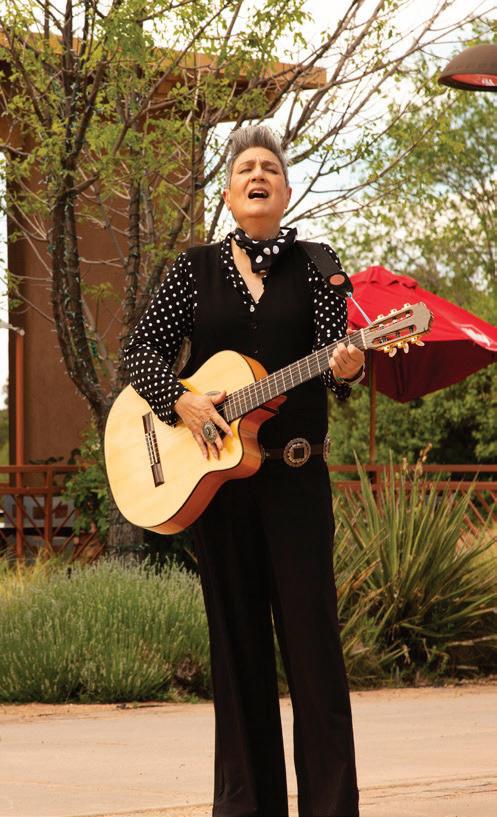

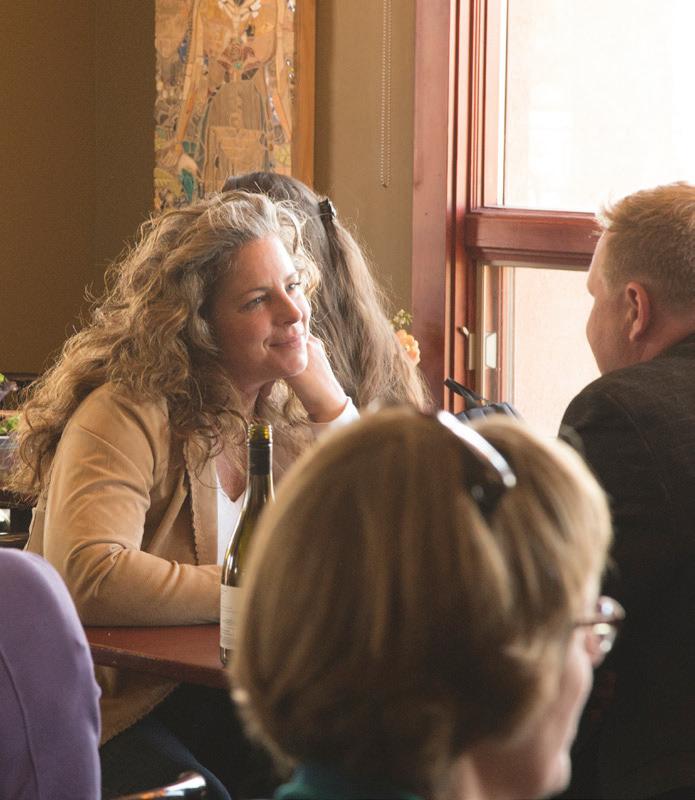







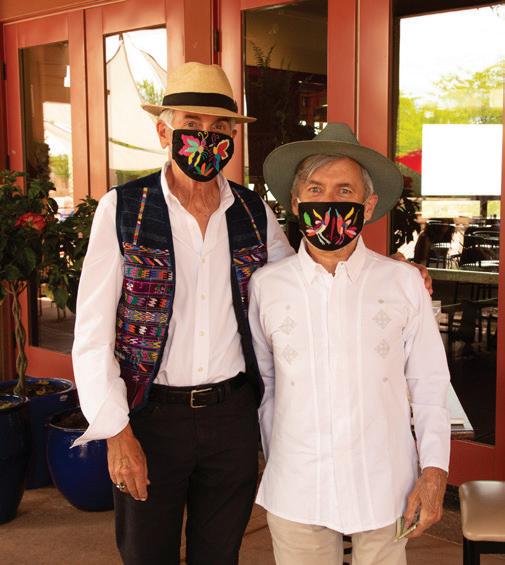




Guillermo Figueroa, Music Director
The Santa Fe Symphony Orchestra
Kimberly Fredenburgh, Viola

GIOACHINO ROSSINI
Born 1792, Pesaro, Italy
Died 1868, Paris
L’italiana in Algeri (The Italian Girl in Algiers) was one of Rossini’s first great successes. He composed it in just 27 days in the spring of 1813, when he was only 21, and the opera was soon enjoying simultaneous runs in Venice, Verona, Brescia, Treviso, and other cities. The opera combines the basic framework of an opera buffa with certain elements of the opera seria . It tells the story of the oafish Mustafa Bey of Algiers, who grows tired of his wife, Elvira, and insists on marrying the beautiful young Italian girl Isabella. The resourceful Isabella, however, has ideas of her own— she outwits Mustafa and escapes with her lover, Lindoro. Recognizing what has happened, Mustafa, now much wiser, return to his wife. Listeners will recognize parallels with Mozart operas, particularly The Marriage of Figaro and The Abduction from the Seraglio , but Rossini treats these subjects with his own sparkling style and comic sense. The opera proved an instant success, and has held the stage ever since.
When pressed for time, Rossini often recycled earlier music, but he composed this entire opera afresh, including the overture, which has enjoyed a successful life in the concert hall. Quiet pizzicato strokes open the Andante introduction, and the music leaps ahead at the Allegro , where the woodwinds’ chattering theme is punctuated by great chords from the full orchestra. The orchestra is in sonata form, and its second subject is a long, arching idea for solo oboe. (Rossini would later use this theme as the basis for a replacement aria when the opera was produced several years later.) A brief development leads to a reprise of all the overture’s themes, which mark this music distinctly as the work of Rossini: long crescendos, a prominent part for piccolo, and sparkling energy. The overture is a perfect prelude to the complexities and fun to follow.
Program Note by Eric Bromberger
S unday, M arch 17—4:00 pm
GIOACHINO ROSSINI
L’Italiana in Algeri Overture
FELIX MENDELSSOHN
Symphony No. 4 in A Major, op.90 “Italian”
Allegro vivace
Andante con moto
Con moto moderato
Saltarello: Presto
HECTOR BERLIOZ
Harold in Italy, Symphony with Viola obligato, op.16
Harold in the Mountains
March of the Pilgrims
Serenade of the Abruzzi mountaineer to his mistress
Orgy of the Brigands
Kimberly Fredenburgh, Viola

FULL CONCERT SPONSOR REACH FOR THE STARS
Born 1809, Hamburg
Died 1847, Leipzig
Mendelssohn’s parents encouraged him to travel, and as a very young man he made a solo nine-month tour of Italy in 1830-31. It was a trip that brought pleasures beyond his dreams. He wrote: “Italy at last. And what I have all my life considered as the greatest possible felicity is now begun, and I am basking in it.”
While in Rome in October 1830, Mendelssohn began a symphony inspired by Italy and worked on it over the next several years, finishing it in early 1833. Although Mendelssohn loved Italy, he did not incorporate Italian themes into the symphony. This is the music of a very happy young German composer who celebrates Italy in his own musical language. Mendelssohn conducted the premiere in London on May 13, 1833 to great acclaim, but he was unhappy with the score and thoroughly revised it. He remained dissatisfied and planned to revise the final movement, but died before he could do so. The symphony was published in its second version four years after his death.
From its blazing beginning to its exciting close, the Italian Symphony is a marvel of color and energy, and it has one of the most effective openings in music. Over bubbling woodwinds, violins sing the surging main idea, and the high spirits of this opening establish a rocket-like momentum that will drive the entire movement. Two beautifully contrasted subordinate themes follow in turn: an amiable clarinet duet and a fugato, full of rhythmic snap that the second violins introduce at the start of the development. This movement overflows with energy; Mendelssohn reminds the orchestra to play staccato seven different times, and the music drives to a close as exciting as its opening.
Commentators have been unanimous in hearing a religious procession in the Andante con moto , but beyond that they differ sharply. One hears an old Czech pilgrim song, another a religious procession in Naples. In Rome, Mendelssohn saw the installation of Pope Gregory XVI; perhaps this movement was inspired by that ceremony. Outwardly, the third movement has the minuet-and-trio form of the classical symphony, but here the outer sections
flow elegantly on long and seamless phrases, while the trio section features fairyland horn calls (prefiguring his incidental music for A Midsummer Night’s Dream .)
Mendelssohn’s one nod to native Italian music in this work comes in the final movement, which is a saltarello , an ancient Italian dance based on triplet rhythms and full of vigorous leaps. Mendelssohn uses three energetic themes in this movement (the sinuous third, which slithers between major and minor tonalities, is a tarantella), and the music dances happily to its fiery close, remaining in fierce a minor rather than returning to the A Major key of the first movement. So perfect a conclusion is this finale that it is difficult to imagine what changes Mendelssohn had planned during its revision and how it could possibly be improved.
—Program Note by Eric Bromberger
Harold in Italy, op.16
HECTOR BERLIOZ
Born 1803, La Côte-St. André, Grenoble Died 1869, Paris
Early in 1834, Berlioz was approached by the great violinist Niccolò Paganini. Paganini had recently acquired a Stradivarius viola, and he wanted Berlioz to write a work for viola and orchestra. But Berlioz knew nothing about the viola and suggested that Paganini should write the piece. Paganini insisted, and Berlioz, who was desperate for success and income, accepted the commission. When he showed Paganini a draft of the first movement, Paganini objected to his entire conception: “That’s not it at all! I am silent too long in that; I must be playing the whole time.” So the two men went their separate ways: Paganini went to the Riviera where he tried to recover from the throat cancer that would eventually kill him, and Berlioz went on to complete the piece on his own.
If Paganini was one of the shaping influences on this music, another was Italy. In 1830, Berlioz had won the Prix de Rome, which involved an extended stay in that city. Berlioz fell in love with Italy (but not Rome, which he hated), and his accounts of walking tours through the Italian countryside are some of the best parts of his Memoirs. A third influence was Byron’s poem "Childe Harold’s Pilgrimage", which had been published in four cantos between 1812
and 1818. Childe Harold was the first appearance of the “Byronic hero”: the outsider; the rebel against conventional morality; the wanderer in search of meaning in a world of hypocrisy, cant, and materialism.
Berlioz described Harold in Italy as “a symphony in four parts with a principal viola” and went on to outline his method: “I conceived the idea of writing a series of scenes for the orchestra, in which the viola should find itself involved, like a person more or less in the action, always preserving his own individuality. By fitting the viola into my poetical memories of my peregrinations in the Abruzzi, I wanted to make the instrument into a sort of melancholy dreamer, in the style of Byron’s Childe Harold.” Hence the title of the symphony. The long first movement, Harold in the Mountains (scenes of sadness, of happiness, and of joy) takes the hero through the variety of moods suggested in its title. Berlioz transforms the principal theme into a slow fugue introduced by the double basses. In March of the Pilgrims , a slow introduction rings with the sound of distant bells. The music consists of two parts: the pilgrims’ hymn, sung by the first violins, and their prayers, announced by muttering woodwinds and second violins.
Violist Kimberly Fredenburgh, originally from New York, is Professor of Viola and serves as Head of the String area at the University of New Mexico. She has been featured as a soloist and chamber musician across the United States, Puerto Rico, South Africa, Brazil, Ecuador, Argentina, Mexico, Canada, Portugal, Spain, Germany, Italy and Monaco. She is the Principal Violist of The Santa Fe Symphony and Santa Fe Pro Musica Chamber Orchestra, and is Assistant Principal of the New Mexico Philharmonic.
Fredenburgh has performed many seasons with the Santa Fe Chamber Music Festival, Santa Fe Opera and Santa Fe Desert Chorale, and is a regular performer on the Chatter Chamber series. She has served on the faculty at Arizona State University while also performing as Associate Principal of the Phoenix Symphony for seven years. She was a Principal Violist in the New World Symphony under Michael Tilson Thomas. She has delivered pedagogical papers and performed at several national string conferences and international competitions. Her interest in contemporary music has resulted in the creation of many new works for her instrument.
Dotted rhythms launch the third movement, Serenade of the Abruzzi mountaineer to his mistress . Soon the English horn gives us the sound of the mountaineer’s serenade, with the solo viola heard in counterpoint. The final movement is Berlioz’s portrait of the revelries of a gang of bandits in their mountain lair as they dance and carouse around a fire. Marked Allegro frenetico , this movement explodes to life and then plunges into some of Berlioz’s most orgiastic music. But then the viola vanishes and is silent for the rest of the movement, (except for a brief recall of the pilgrims’ march near the end), until the piece drives to a white-hot close.
Harold in Italy premiered in Paris in November 1834. Four years later, Berlioz, to his utter astonishment, received a gift of 20,000 francs from Paganini. The virtuoso never played Harold , but he admired the music and wanted to reward Berlioz. His opulent gift set the composer free: Berlioz was able to give up newspaper work and devote himself to composition. The funds made it possible for him to compose Romeo and Juliet , one of his greatest works.
—Program Note by Eric Bromberger

“
“American-Brazilian cellist, Gabriel Martins, has been praised by critics and audiences for his sophisticated musicality and nuanced palette of colors.”
—The Violin Channel

Guillermo Figueroa, Music Director
The Santa Fe Symphony Orchestra
Gabriel Martins, Cello
2020 Sphinx Competition
Robert Frederick Smith Prize-winner
Sunday, April 21 4:00 pm program notes
Chokfi’ (Rabbit)
Sarcasm for String, Orchestra and Percussion JEROD TATE
Born 1968, Norman, Oklahoma
Chokfi’ (choke-fee) is the Chickasaw word for rabbit, who is an important trickster legend within Southeast American Indian cultures.
Inspired by a commission for the Oklahoma Youth Orchestra, I decided to create a character sketch that would be both fun and challenging for the kids. Different string and percussion techniques and colors represent the complicated and diabolical personality of this rabbit person. Chokfi’ premiered in May 2018.
In honor of my Muscogee Creek friends, I have incorporated a popular tribal church hymn as the melodic and musical base.
—Program Note by Jerod Tate
Suite No. 2 in F Major from the Water Music, HWV 349
GEORGE FRIDERIC HANDEL
Born 1685, Halle, Germany Died 1759, London
In 1714, Georg Ludwig, the Elector of Hanover, became King George I of England. He quickly learned that one of the forms of opulent recreation in London was a boating trip on the Thames, and that these excursions were sometimes accompanied by music. In the first years of his tenure, King George made several such trips, and they were grand occasions indeed. One of the most famous took place on July 15, 1717, and two days later the London Courant ran a lengthy description of the festivities:
“On Wednesday Evening, at about 8, the King took Water at Whitehall in an open Barge … and went up the River towards Chelsea … A City Company’s Barge was employ’d for the Musick, wherein were 50 instruments of all sorts, who play’d all the way from Lambeth (while the Barges drove with the Tide without rowing, as far as Chelsea) the finest Symphonies, compos’d express for this Occasion, by Mr. Hendel; which his Majesty liked so well, that he caus’d it to be plaid over three times in going and returning. At Eleven his Majesty went a-shore at Chelsea, where a Supper was prepar’d, and there was another very fine Consort of Musick, which lasted till 2; after which, his Majesty came again into his Barge, and return’d the same way, the Musick continuing to play till he landed.”
Handel’s original manuscript to the Water Music has disappeared, but numerous copies and arrangements have survived. The music has been divided into three separate suites of varying instrumentation: D Major, F Major and G Major. This concert offers the Suite No. 2 in F Major.
JEROD TATE
Chokfi’ (Rabbit)—Sarcasm for String Orchestra and Percussion
GEORGE FRIDERIC HANDEL
Water Music Suite in F Major
Overture (Allegro) Hornpipe Minuet Lentement Bourrée
PYOTR TCHAIKOVSKY
Variations on a Rococo Theme
Gabriel Martins, Cello
STELLA SUNG
Oceana
WildEarth Guardians joins us in second of a threeyear co-presentation celebrating the wonders of planet Earth. This brilliant performance features rising star Gabriel Martins, as part of an ongoing partnership with the Sphinx Organization. Sphinx is dedicated to transforming lives through the power of diversity in the arts, honoring the outstanding achievements of young Black and Latinx classical string players.
CONCERT CO-PRESENTER

CONCERT SPONSOR-IN-PART
In Memory of Mort Morrison

The Allegro gets the suite off to a festive start on the sound of ringing brass and racing violins. The longest of the movements, the Hornpipe is also one of the most famous, with its opening brass fanfares and spirited writing for strings in the central episode. The Minuet, brief and propulsive, is followed by a Lentement with a particularly solemn central section. The suite is rounded off by a lively Bourrée whose main theme is nicely varied as it proceeds.
Variations on a Rococo Theme, op.33
PETER ILYCH TCHAIKOVSKYBorn 1840, Votkinsk
Died 1893, St. Petersburg
It is hard to believe that Tchaikovsky wrote this lovely, elegant, chaste music immediately after completing his overwrought Francesca da Rimini and immediately before his white-hot Fourth Symphony. That sequence alone should alert us to the fact that there were many sides to this often-tormented composer. If we automatically identify Tchaikovsky with colorful and emotional music, we need to remember that he was also drawn to the formal clarity of 18th-century music and loved Mozart above all other composers. One of the finest examples of this attraction is his Variations on a Rococo Theme, composed in December 1876, shortly after Tchaikovsky returned to Moscow after attending the first performance of Wagner’s Ring at Bayreuth.
This was a very difficult time for Tchaikovsky. He was on the verge of entering into a disastrous marriage with one of his students, hoping that such a union would “cure” him of his homosexuality. Writing this music may have offered him an escape from that personal turmoil into the clarity and order of another era. The immediate impulse to write it came in a commission from the cellist and composer Wilhelm Fitzenhagen. Trained in Germany, Fitzenhagen had in 1870 become professor at the Imperial Conservatory in Moscow, where Tchaikovsky also taught, and the two men had become good friends. When Fitzenhagen asked Tchaikovsky to write a piece for cello and orchestra for him, the composer responded with a set of variations based on what he called a “rococo” theme and scored for what was essentially Mozart’s orchestra (pairs of woodwinds and horns, plus strings).
A brief orchestral introduction with a light and clear sound gives way to the entrance of the solo cello, which sings the “rococo” theme (marked espressivo on its first appearance) and falls into two eight-bar phrases. Seven variations follow. These are nicely contrasted: some are lyric, some athletic. Some emphasize the cello, while others vigorously toss the theme between soloist and orchestra. Tchaikovsky varies key and meter throughout the set, and he ingeniously turns the final variation into an
exciting coda. Yet the key word throughout is “restraint,” and this gentle score seems to come from a different planet altogether from the Fourth Symphony, which would shortly follow.
Tchaikovsky worked closely with Fitzenhagen while composing this piece, but Fitzenhagen apparently regarded the manuscript as only a starting point, and he drastically revised the score. He reduced Tchaikovsky’s original eight variations to seven, altered the order of the variations, and rewrote some of the cello part. By the time of the premiere, which took place in Moscow in December 1877, Tchaikovsky had abandoned his wife and fled to Switzerland to restore his mental balance. He had no idea that these changes had been made, and by the time he returned to Moscow in 1879, the music had been published in Fitzenhagen’s revision. At this point it was virtually impossible for him to redo these changes. The result is that the Rococo Variations are performed today in Fitzenhagen’s revised version rather than in the version Tchaikovsky wrote.
―Program Note by Eric Bromberger
Oceana
STELLA SUNG
Born 1959, Gainesville, Florida
In the spring of 2016, Maestro Christopher Wilkins (Music Director of the Akron Symphony and Boston Landmarks Orchestra) and I attended a lecture at the New England Aquarium given by marine biologists Scott Kraus (Senior Science Advisor, NEA) and Christopher Clark (senior scientist, Cornell University), in which we learned about the problems of ocean noise pollution caused by seismic testing and the air guns used for this process, large ships and ocean vessels, and other man-made noises. The effects of these noises can be devastating for all marine species from fish to plankton, but particularly for those that depend upon sound waves for their communication, finding food sources, and navigation. With this knowledge in mind, I decided that my composition, Oceana, would have a focal point of reminding us of how important the ecosystems of the oceans are for not only marine life but for human life as well. I have also compiled a soundtrack comprised of recordings of marine life animal sounds (various whale, dolphin, seals, and other sounds) that runs throughout the piece.
The work is divided into three basic sections: 1) the beauty, majesty, and mystery of the seas and the life forms that live there, 2) the man-made disturbances of that ecosystem, and 3) the hope that humans can find a balance of living alongside the ocean and marine life so that our co-existence is based upon respect, understanding, and knowledge. Working with underwater filmmaker, photographer, scuba diver and educator Annie Crawley, we have formed a collaborative effort to bring not only the composition to life, but to help bridge a deeper understanding and appreciation for the wonders of the ocean.
Program Note by Stella Sung
Cellist Gabriel Martins (b. 1998) has established himself as one of the world’s most compelling young musicians. His artistry has already been recognized through an extensive list of accolades including the Concert Artists Guild/Young Classical Artists Trust Grand Prize, the Sphinx Competition Gold Medal, the David Popper International Cello Competition Gold Medal, the International Tchaikovsky Competition for Young Musicians Silver Medal, the Schadt String Competition Gold Medal, the Orford Music Award, and the Prague Spring Czech Music Fund Prize. These successes have led to a number of high-profile debuts including Wigmore, Carnegie Hall, Merkin Hall, the 92nd Street Y, the Great Hall of the Moscow Conservatory, Maison Symphonique in Montréal, and the Arkansas, Houston, Indianapolis, Memphis, New Russian State, Omaha, Pacific, Phoenix and São Paulo symphony orchestras. In 2022, The Strad Magazine declared his New York City recital debut to be “flawlessly played…a deeply moving experience,” and Classic FM named him one of its “30 under 30” Rising Stars.
Lauded for his “rich, warm” and “mesmerizing” sound, Martins carries a concerto repertoire spanning every
major work. In recital, his performances of the Bach Cello Suites have garnered particular recognition. Martins has been broadcast on NPR, WQXR, KUSC, WFMT, and more. His festival appearances include Aspen, Bard, Brevard, Chamberfest Cleveland, Four Seasons, Ravinia, and Yellow Barn.
Born of American and Brazilian heritage, Martins grew up in Bloomington, Indiana. He began playing the cello when he was five, studying with Susan Moses at the Indiana University String Academy. He went on to receive his B.M. as a Presidential Scholar at the USC Thornton School of Music with Ralph Kirshbaum. In his freshman year at USC, he won the school’s concerto competition as well as its Bach competition. He received his Masters in Music at the New England Conservatory of Music with Laurence Lesser.
Martins lives in South Carolina with his partner, violinist Geneva Lewis. In addition to performing, he also composes, arranges, and teaches. He plays a composite Francesco Ruggieri cello made in Cremona, c. 1690, and a François Nicolas Voirin bow made in Paris, c. 1880. He is represented worldwide by Opus 3 Artist Management.


“The earth has its music for those who will listen.”GEORGE SANTAYANA

For the past 34 years, when the earth has cried out for protection, WildEarth Guardians has heeded her call. We work relentlessly to ensure the songs of nature’s wildest places and creatures will never fade.
Guillermo Figueroa, Music Director
The Santa Fe Symphony Orchestra
The Santa Fe Symphony Chorus
Teresa Perrotta, Soprano
Katherine DeYoung, Mezzo-Soprano
Anthony Leon, Tenor
Griffen Hogan Tracy, Bass
WITH SPECIAL GUEST:
Ana María Martínez, Soprano

All evening long she [Ana María Martínez] sang with total control, employing even vocal color throughout her enormous range. Her ability to vary her sound from dramatic fortissimo to the most beautiful thin thread of silver was impressive ... ”
—Broadway World “
Nuits d’été, op.7
HECTOR BERLIOZ
Born 1803, Grenoble Died 1869, Paris
By the time Berlioz began composing Nuits d’été (Summer Nights), he had become embittered by his failure to establish himself as a composer and musical force in Paris. Over the previous decade, he had created a series of largescale works that are today a central part of the repertory: Symphonie Fantastique, Harold in Italy, the Requiem, the opera Benvenuto Cellini, and Roméo et Juliette. But Parisian audiences and tastes remained hostile to the composer, and Berlioz had been forced to support himself as a music critic. Perhaps exhausted by this struggle, he turned away from large compositions, and in the summer of 1840 he began to compose songs on texts by the French novelist and poet Théophile Gautier.
Berlioz had met Gautier (1811–1872) when the two were both still very young men. He chose six poems from the poet’s La comédie de la mort (1838), and the songs were published in 1841. By the mid-1850s, he had orchestrated them all, in the process creating the first set of orchestral songs. However, Berlioz heard only two of the songs in their orchestral version.
The songs all touch upon some aspect of love, but Nuits d’été does not form a true song cycle; there is neither unity nor a progression across the span of the songs, and individual songs from the set are sometimes sung separately.
Berlioz was a master of the orchestra, and he used that rich palette of color to intensify the atmosphere and meaning of these songs. The set includes a villanelle, which is a rustic or rural song, and the springtime atmosphere of this opening song is underlined by its harmonic freshness. Le spectre de la rose, with its striking subject (the flower that celebrates the occasion of its own death), has become one of the best-known of the set; Berlioz expanded the introduction when he arranged it for orchestra. The next three songs are dark, and they all might take their cue from the subtitle of the first: Lamento . These pieces remind us that death, separation, and pain are all part of love. Absence was the first of these to be orchestrated; Berlioz made the arrangement in 1843 for his companion during these years, the soprano Maria Recio. The atmosphere changes completely in the final song, L’ile inconnue. It is charged with romantic expectancy; the rocking rhythms mirror the motion of the boat as it sails toward a land of infinite possibility, and over the final pages the piano’s steady murmur of sixteenths echoes the sound of the wind that propels the poet toward an unknown fulfillment.
—Program Note by Eric
Bromberger
Sunday, May 19—4:00 pm
HECTOR BERLIOZ
Nuits d’été, op.7
Villanelle
Le spectre de la rose
Sur les lagunes
Absence
Au cimetière
L'ile inconnue
Ana María Martínez, Soprano
LUDWIG VAN BEETHOVEN
Symphony No. 9 in D Minor, op.125
Allegro ma non troppo
Molto vivace
Adagio molto e cantabile
Presto—Allegro assai—Allegro assai viva
The Santa Fe Symphony Orchestra
The Santa Fe Symphony Chorus
Teresa Perrotta, Soprano
Katherine DeYoung, Mezzo-Soprano
Anthony Leon, Tenor
Griffen Hogan Tracy, Bass

Symphony No. 9 in D Minor, op.125
LUDWIG VAN BEETHOVENBorn 1770, Bonn
Died 1827, Vienna
Beethoven’s Ninth is at once his grandest symphony and his most challenging, and its challenges have been both moral and musical. The unprecedented grandeur of Beethoven’s music, the first use of voices in a symphony, and in particular the setting of Schiller’s “An die Freude” have made the work one of the great statements of romantic faith in humankind, a utopian vision of the universal bond of all people. The Ninth seems so perfectly conceived that it comes as a surprise to learn that it took shape very slowly over a span of 30 years, and Beethoven’s conception of the music changed often during that process. He first planned to compose a setting of Schiller’s “An die Freude” as early as 1792, when he was just 22 (Schiller had written that ode seven years earlier). Although he set that intention aside, the idea remained with him and was not mentioned again until 20 years later, when Beethoven noted such a plan in his sketchbooks. An invitation from the London Philharmonic in 1817 to write two symphonies finally prodded the composer to action (although the London visit never took place). The Ninth was completed in early 1823.
At this point in his career, Beethoven had formulated what we know as his “late style,” which includes an inward and lyrical expressiveness and a new interest in variation-form and contrapuntal writing. While the Ninth Symphony incorporates these features, Beethoven reverted partly to his heroic style, that powerful approach built on conflict and triumphant resolution that had animated such works as the Third, Fifth, and Seventh Symphonies. The first performance of the Ninth took place in Vienna on May 7, 1824, when Beethoven was 53. He had been deaf for years, but he sat on stage with the orchestra and tried to assist in the direction of the music. This occasion produced one
of the classic Beethoven anecdotes. Unaware that the piece had ended, Beethoven continued to beat time and had to be turned around to be shown the applause that he could not hear; the realization that the music they had just heard had been written by a deaf man overwhelmed the audience.
The opening of the Allegro ma non troppo, quiet and harmonically uncertain, creates a sense of mystery and vast space. The ending opens with ominous fanfares over quiet tremolo strings, and out of this darkness the main theme rises up one final time and is stamped out to close the movement. The second movement, marked Molto vivace, is a scherzo built on a five-part fugue. The displaced attacks in the first phrase, which delighted the audience at the premiere, still retain their capacity to surprise; Beethoven breaks the rush of the fugue with a rustic trio for woodwinds and a flowing countermelody for strings. The third movement, Adagio molto e cantabile, is in straightforward theme-and-variation form with contrasting interludes.
After the serenity of the third movement, the orchestra erupts with a dissonant blast for the famous finale. Schiller’s text exalts the fellowship of mankind and man’s recognition of his place in a universe presided over by a just and omnipotent god. Musically, the movement is a series of variations on the opening theme, the music of each stanza varied to fit its text.
In a world that daily belies the utopian message of the Ninth Symphony, it may seem strange that this music continues to work its hold on our imagination. It is difficult for us to take the symphony’s vision of brotherhood seriously when each morning’s headlines show us again the horrors of which man is capable. Perhaps the secret of its continuing appeal is that for the hour it takes us to hear the work, the music reminds us not of what we too often are, but of what, at our best, we might be.
―Program Note by Eric BrombergerSunday, May 19—4:00 pm

Grammy® Award-winner Ana María Martínez is considered to be one of the foremost sopranos of her time, with an international career that spans the world’s most important opera houses and concert halls. A winner of the 15th Annual Opera News Awards, her repertoire encompasses opera’s most intriguing and diverse leading ladies, and she engages her audiences season after season with signature roles, spellbinding debuts, and a myriad of captivating recordings.
In 2019 Ms. Martínez joined Houston Grand Opera as their first-ever Artistic Advisor, and following a two year appointment as Artist-in-Residence at The Shepherd School of Music at Rice University, in July 2021 she became a Professor in their Department of Voice. She is honored to have been a 2021 recipient of Houston Mayor Sylvester Turner’s Hispanic Heritage Award in the Arts. Ms. Martínez continues to explore all aspects of her career, both on and off stage, highlighted by such diverse opportunities as voicing the role of opera singer Alessandra in season three of Amazon’s Mozart in the Jungle, performing in tribute to operatic legend Justino Díaz at the 44th Annual Kennedy Center Honors (CBS), to proudly representing her birthplace of Puerto Rico as an honoree and performer in the 62nd Annual Puerto Rican Day Parade in New York City.
She is steadfastly committed to being a leader in the industry, an advocate and educator to the next generation of musicians, and all the while maintaining a robust performance schedule.
When you see her on stage, you feel that she is a true star …”
—Revista Mujer
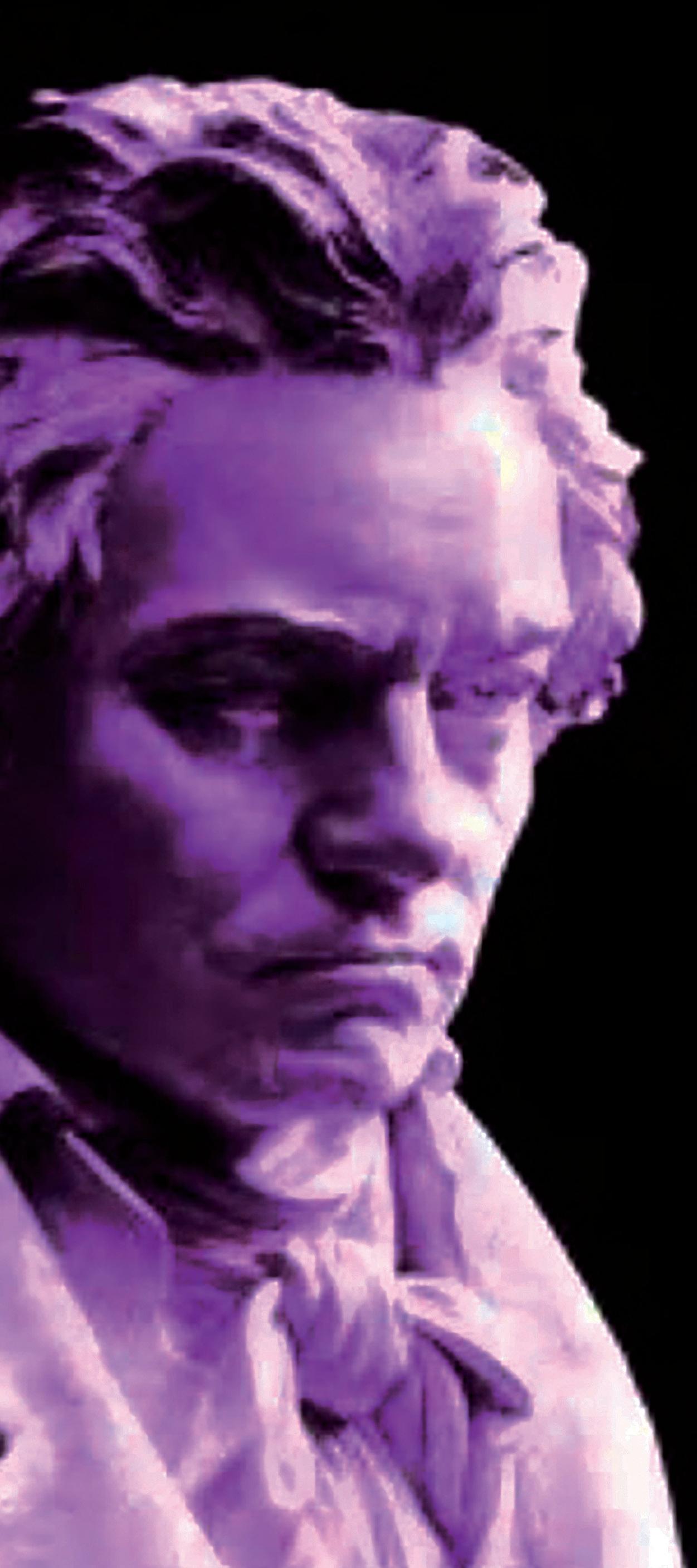




Sunday, May 19—4:00 pm
Soprano Teresa Perrotta is a 2023 Grand Finals Winner of The Metropolitan Opera’s Eric and Dominique Laffont Competition and a first-year Cafritz Young Artist at Washington National Opera. In the 2022–2023 season, she made her Kennedy Center debut as Fünfte Magd in Elektra, followed by Musetta in La bohème. Additional debuts include Alice Ford in Falstaff with Maryland Lyric Opera, and Anna in Nabucco with Washington Concert Opera. In the summer of 2023, she returned to The Glimmerglass Festival to make her mainstage debut as Mimì in La bohème. In summer 2021, Teresa was a Santa Fe Opera Apprentice Artist, where she performed as Helena in A Midsummer Night’s Dream under the baton of Harry Bicket. She also performed scenes in concert as Nedda in I Pagliacci, Marguerite in Faust, and the title role in Susannah, as well as winning the Katharine Mayer Award.
Mezzo-soprano Katherine DeYoung, originally from Traverse City, Michigan, is currently a third-year Ensemble Member of The Patrick G. and Shirley W. Ryan Opera Center at the Lyric Opera of Chicago. In the 2022–2023 season, she sang Giovanna in Ernani and Mercédès in Carmen. She also covered Ragonde in Le Comte Ory, Hänsel in Hänsel und Gretel, and Soloist in Proximity. She was the mezzo-soprano soloist in Verdi’s Messa da Requiem at Michigan State University. In the Lyric’s 2021–22 Season, she performed as the Second Lady in The Magic Flute, and sang in the Rising Stars Concert and in The Magic Victrola. She was a 2019 Sullivan Award Winner from The William Matheus Sullivan Foundation, a 2021 Richard F. Gold Career Grant recipient from the Shoshana Foundation, the 2022 Eileen Deneen Scholarship Award Winner from The American Opera Society of Chicago, and a 2020 semifinalist in the Metropolitan Opera’s Laffont Competition.
An American-born, Cuban and Colombian tenor, Anthony León is a young up-and-comer who is quickly developing an international performing career. During the 2022–2023 season he was a member of the Domingo-Colburn-Stein Young Artist Program at the Los Angeles Opera. His recent engagements there included singing Pelléas in Impressions de Pelléas, Don Curzio in Le nozze di Figaro, Male Chorus in The Rape of Lucretia, Spoletta in Tosca, and Normanno in Lucia di Lammermoor. He returned to the LA Opera to open the 2023–2024 season, performing the role of Don Ottavio in Don Giovanni. Other recent performances include Remendado in Carmen at Santa Fe Opera, Ernesto in Don Pasquale at the New England Conservatory, and the roles of Giove and Amphinome in Monteverdi’s Il ritorno d’Ulisse in patria with the ensemble I Gemelli. On tour, he performed at Théâtre des Champs-Elysées in Paris; Arsenal Theater in Metz, France; and Victoria Hall in Geneva. A recorded album is in the works and was set to be released by the end of 2023.
Praised by Parterre Box for his “glorious outpouring of tone”, Colorado bass Griffen Hogan Tracy debuted with the Santa Fe Opera as an Apprentice Artist for the 2022 season, covering the role of Manuel Toulon in Huang Ro’s new opera M. Butterfly. He was featured in the Apprentice Scenes program as Phillipe II Don Carlos. A recent graduate of the acclaimed Academy of Vocal Arts in Philadelphia, he performed Prince Gremin in Eugene Onegin, Colline in La Boheme, Sam in Un ballo in maschera (C-19), Antonio in Le nozze di Figaro, and Viktor Ullmanns’s in Liederbuch des Hafis. In the 2022–2023 season, he performed in A&E Atlanta’s premiere of Our Sacred World by Amy Leventhal, and debuted with Amarillo Opera as Sparafucile in Rigoletto and Cincinnati Opera as Raimondo in Lucia di Lammermoor.
Learn more about this season's Messiah soloists at santafesymphony.org/beethoven/soloists.
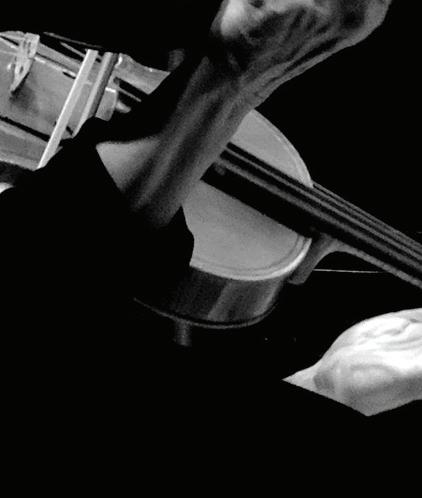
The SFS Strata series was conceived of in 2019, evoking the layers of musical conversation seen in chamber music. We are proud to highlight diverse venues and repertoire as an integral part of these concerts during the 2023–2024 Season. Don't miss these one-of-a-kind musical experiences! SFS Strata concerts are non-subscription events.
The Santa Fe Symphony’s acclaimed chamber music series continues with this innovative presentation at the House of Eternal Return at Meow Wolf Santa Fe! Stay tuned for program details. This stimulating chamber music performance is not to be missed.
MANY THANKS TO CONCERT SPONSORS-IN-PART


Visit santafesymphony.org/strata-meow-wolf for more details.


SFS Strata II | Thursday, May 16, 2024—7:00 pm
New Mexico Museum of Art
Join us for a once-in-a-lifetime SFS Strata chamber concert during our final weekend of the 40th Anniversary Season! Presenting Grammy® Award-winners Ana María Martínez, one of the foremost sopranos of her time, and pianist Craig Terry, with Music Director Guillermo Figueroa on violin and The Santa Fe Symphony String Quartet. Stay tuned! The repertoire for this special celebratory concert will be announced soon.
Ana María Martínez, Soprano Craig Terry, Piano Guillermo Figueroa, Violin
The Santa Fe Symphony String Quartet


Visit santafesymphony.org/strata-nmmoa for more details.




Our musical community—and our family of donors and audience members—have made it possible for us to thrive for 40 amazing years. Thank you for being part of our incredible history!
Visit santafesymphony.org/40stories for a complete listing of Symphony Stories.
Charles MacKay, Santa Fe Opera, Former Executive Directror
“The performing arts abound with stories of last minute, behind-the-scenes heroism the audience rarely knows about. The day in 2009 when I was the newly minted General Director of the Santa Fe Opera, I got a call from The Symphony Founder and Executive Director Gregory Heltman. He asked me if I knew a Verdi soprano who could step in to sing the Requiem the following night. After several days of rehearsal, the distinguished singer Kallen Esperian had come down with laryngitis and canceled Friday at noon, with performances scheduled for Saturday and Sunday. I had known Kallen since my first season as General Director of Opera Theatre of Saint Louis. Verdi sopranos don’t grow on trees! I called my longtime colleague and friend Christine Brewer—one of the world’s leading sopranos—on the unlikely chance she might be available to step in. She had recently recorded the Verdi Requiem with Sir Colin Davis and the London Symphony Orchestra. I asked her if she could get on a plane to New Mexico later that night or the next morning to sing with the Santa Fe Symphony. She said, “Sure thing!” The next day, weather delays put Christine’s flight on the ground in Albuquerque at 4:40 p.m., instead of the scheduled 1:20 p.m. With the audience in their seats and no soprano in sight at 6:00 p.m., the quick-thinking symphony management offered a spontaneous lecture about the Requiem, then went on to present a local music educator with a well-deserved award. When conductor Stephen Smith led Christine and the other soloists onstage at 6:40 p.m., they all looked calm and radiant. Even though she’d had no rehearsal with the conductor, the other soloists, the chorus, or the orchestra, all the artists onstage and backstage stepped up for a splendid performance.”
Gloria Velasco, Violin II
“It seems like only yesterday when SFS was formed from what was once the Orchestra of Santa Fe, of which I was a charter member when it began. We worked hard to build a cooperative orchestra structure with standards that are maintained to this day. I have been a music educator in Albuquerque for decades and cherish my time with the Albuquerque Youth Symphony, the roots for many of our valued members who perform with us now. I feel so fortunate to have had a lifetime of both performing and teaching.




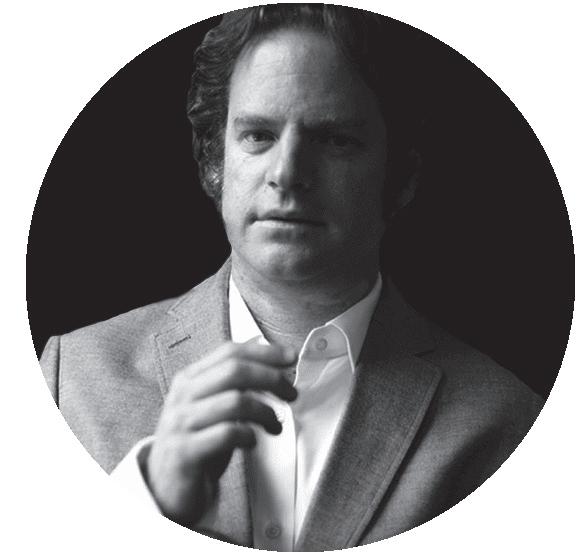
David Felberg, Santa Fe Symphony Concertmaster
“I was just a kid at the dawn of The Santa Fe Symphony and remembered going to concerts at the old Sweeney Center, being inspired by all that I heard there. My father was the concertmaster since its inception and I'm so honored to continue in his position. Here's to another 40 and beyond!”






Daniel Crupi, Former Santa Fe Symphony Executive Director
“The COVID season was a period of huge obstacles and opportunities for The Santa Fe Symphony Orchestra & Chorus. Our biggest challenge was identifying a way to keep our musicians fully employed and continue serving our audience, while keeping everyone safe during the worst of the pandemic. Through extraordinary creativity from our musicians, chorus, staff, and Board—and by leaning on our community partnerships—we were able to put together a compelling 10-concert virtual series that radically expanded patron & donor engagement and garnered an international audience. At times, it felt like we were laying the track as the train was coming—but I believe The Symphony is better for our out-of-the-box thinking!”
Justin Medrano, Board of Directors, Secretary
“Strategic planning provides a structural framework that transforms visions into actionable realities. Through the planning process, we have identified key initiatives, strategies for allocating resources, and envisioned an organizational structure which will ultimately culminate in a 5-year vision for our future. Our strategic plan will serve as a roadmap which will help us to stay competitive, focused, and adaptable to an ever-changing business environment.”As the Santa Fe Symphony continues to grow and inspire our community, I am honored to lead our strategic planning process!”
“You can take adopting a musician to any level. You can just feel a connection to that person and enjoy him at a higher level at your next performance, or you can reach out to him, sitting nearby at a dress rehearsal, or take him/her to lunch and get to know them better. I love heading this program because it's a way to support the Symphony, but rather than just writing a general donation check, you get to validate a specific musician. One of my adoptees has taught me the cello and helped with coaching my amateur conducting efforts.”
Jerod Tate, Performing Artist | Composer
“My name is Jerod Impichchaachaaha' Tate. I am a citizen of the Chickasaw Nation in Oklahoma and I am a professional classical composer. I am dedicated to the development of American Indian classical composition and all of my works reflect North American Indian history, culture and ethos. I am honored and privileged that The Santa Fe Symphony chose to champion my music during the pandemic and I look forward to many years more of continued collaboration. In my work, Chokfi' (Rabbit): Sarcasm for Strings and Percussion, the orchestra expresses the energetic and diabolical nature of our Chickasaw trickster, the rabbit. The opening of the work is a combination of unpredictable and alternating time signatures, paired with a modernized version of a Muskogee hymn, sung to me by my good friend, Curtis Scott. Enjoy! Yakkookay!”


Carole Eitzen & Dr. Harold Eitzen, Patrons
“How Blessed we are to have a World Class Symphony Orchestra & Chorus in Santa Fe, New Mexico. I fell in love with The Symphony 40 years ago and am so proud of how they impact the schools, community, and the entire state. Thank you all for entertaining us with your beautiful music!”
Harriet & Karl Schreiner, Patrons | Former Board Member (K. Schreiner)
“It was an honor to Co-Chair the 2012 Painted Violins Gala, a two-year labor of love! The artists, both local and international, were hand selected for their remarkable, award-winning achievements. The violin was an unusual canvas and the artists accepted the challenge enthusiastically, as they turned 54 basic violins into works of art to support The Symphony. It was inspiring to see the talent and creativity the artists put into their creations. The Gala attendees were the beneficiaries of these beautiful violins, and the proceeds exceeded any fundraiser The Santa Fe Symphony had held to date.
We are proud to have been a part of this significant event in the 40-year history of The Santa Fe Symphony Orchestra & Chorus.”
Ifan Payne, Board of Directors
“With outstanding musicians and Music Director Guillermo Figueroa, their performances showcase precision, interpretation, and technical mastery. Collaborations with renowned artists bring fresh perspectives, while educational programs and outreach initiatives foster cultural vitality. Santa Fe's intimate venues create an immersive concert experience, forging a connection between performers and listeners. The orchestra's commitment to showcasing varied musical styles and genres caters to a broad audience. Through their dedication to excellence and their contributions to the community, The Santa Fe Symphony Orchestra has earned its reputation as an exceptional ensemble.”
Elliott Stern, Former Board Member
“Orchestras that are not involved with their wider community and the organizations that are important to that community cannot benefit from community individuals and resources no matter its musical excellence. Our Symphony has committed to collaborate with these individuals and community organizations and the results, while still preliminary, show that we have benefited in many ways: We’ve saved on administrative costs, improved the range and targeting of our services, brought and received new ideas about delivering our services to more people, found more leaders, strengthened our voice to advocate for our mission, found new funding opportunities, expanded our programs and increased our brand exposure in the community.

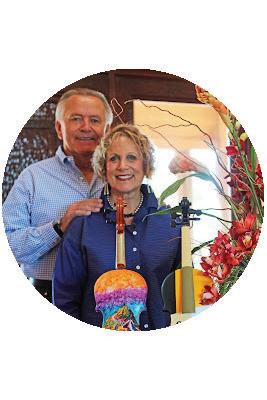

We have taken the first steps to change our Symphony so that all of its members are involved in serving the community as it exists and not as we want it to be. Let’s double down on our commitment to community collaboration in the next years so the musicians and other creative people in our Symphony will contribute their talent and imaginative power to our community. It’s good for Santa Fe and it’s good for our business.”



Christine Brewer, Performing Artist | Soprano





“I was on my way to Santa Fe to sing Alceste with the Opera when I got a call to see if I might be able to jump in to sing the soprano solos in Verdi's Requiem with the Santa Fe Symphony. It's a piece that I've sung often and love to sing, but the call was for THAT night! I remember a quick ride from the airport to the hall and getting dressed quickly and preparing for this monumental piece. There is a kind of energy when stepping in at the last minute that exceeds the normal energy before any performance, so I really can't remember too many details, but I do remember the warmth from the orchestra and the audience and the other soloists. All of that love and warmth made me feel like I could do it! And now I send my warmth and love to the Santa Fe Symphony for their 40th anniversary of making beautiful music! Happy 40th and many more years to come!”
Everett Zlatoff-Mirsky, Board of Directors
“The most memorable concert I ever heard was a re-creation of a concert that was conducted by Igor Stravinsky in Santa Fe's Cathedral Basilica that happened on July 17, 1960. The main feature on the program was Stravinsky’s Symphony of Psalms, a magnificent performance conducted by our Music Director, Maestro Guillermo Figueroa. I also remember a program featuring violinist Nikki Chooi that was memorable for me, because he performed the Chausson Poem for Violin and Orchestra, which was one of my favorite pieces to play in my own career as a concert violinist, and his performance was as fine as any that I’ve ever heard in my life, quite beautiful.”
Zachary Nelson, Performing Artist | Baritone
“My favorite Symphony memory is Emma Scherer's first speech as Executive Director. I'd flown in to Santa Fe during the middle of rehearsals elsewhere and was in town for less than 12 hours, but in that time I got to hear my wife welcome the audience back after the pandemic season. It was a moment I'll never forget!”
Jesse Tatum, Principal Flute
“Strata, the innovative chamber group born within The Symphony in 2019, was created to serve as an ode to the multifaceted layers of music making. This ensemble was created by myself and David Felberg to showcase the richness and diversity of musical expression, intertwining various genres and instruments to create a mesmerizing sonic experience. Comprised of the talented musicians of The Symphony, Strata was created to unite classical virtuosity with contemporary flair, exploring a wide spectrum of musical traditions. Through these performances, Strata elevates the essence of collaboration, connecting with the audience on a deep level, and illuminating the profound beauty hidden within the complex strata of music's boundless universe.”
Judy Rowan and Dick Schacht, Santa Fe Symphony Chorus
“Our favorite choral performance with The Santa Fe Symphony was the Brahms Deutsches Requiem (2019). It is one of the few major classical choral works not named “Messiah” that the Chorus has done in recent years. We love singing such things; and it is one of our favorites. I (Dick) first did it as an undergraduate, with the Boston Symphony; and we both came to love it as we performed it multiple times at the University of Illinois. We were so glad to be able to do it again here, and were proud of how well the performance went. We want more!”

“

Anne Eisfeller, Principal Harp
From its founding, The Santa Fe Symphony has had a special structure and camaraderie. It was formed by musicians as a cooperative, and at the beginning we did everything from programming to publicity to setup. My specialty was rehearsal food. Violinist Elena Sopoci dubbed it "the city's different orchestra" after Santa Fe's "The city different" campaign. Forty years later The Symphony continues to prove that great music can be made through collaboration by all aspects of the organization.

“Composing the Santa Fe 400th Symphony was an honor for me. To create a musical remembrance that honored the original Indigenous inhabitants in Movement 1 (featuring flute and orchestra), the Spanish roots featuring Anna Maria Cardinelli-Padilla on Movement 2 (with flamenco guitar and orchestra), and the City Different featuring New Mexico's Poet Laureate Valerie Martinez (with chorus and orchestra), was a rewarding and exciting challenge. I will never forget it!”
“Thank you for giving me the chance to talk about this! I’ve been on the Programming Committee since 2019, and it always strikes me how creating a season’s programming magically develops. It’s equal parts collaborative brainstorming and fine clay sculpture; beginning with a lot of raw material and concluding with a thing of beauty. It’s a truly democratic process that is unique in our industry. Our chamber series, Strata, is also unique: the participating musicians all decide on the programming. Working about a year or more in advance, the Programming Committee begins by talking to the musicians and getting their ideas for soloists and repertoire, as well as possible guest conductors. We then get recommendations from the other members of the committee: our Music Director, our Executive Director, and our non-musician members of the Board of Directors. All of these ideas come together in a general pool, and the Chair, a musician member of the Board, helps the committee to sort through all of the detailed work, and the group collectively comes up with threads, themes, and ways to showcase our fabulous orchestra. There are always a lot of twists and turns, and finding consensus can take time, but it’s really enjoyable to be a part of something in such a spirit of partnership across the organization.”
“A highlight of my tenure as music director of the Santa Fe Symphony is certainly the two performances of Gershwin's Porgy and Bess in August 2007. A landmark of the repertoire, Porgy and Bess is also a towering work of American music. Fusing the emotional power of opera with elements of popular song and jazz, Gershwin brought to life a purely African American story with memorable characters and a moving love story. We were honored to welcome an outstanding cast of leading singers from around the country who inspired all who were present, giving The Santa Fe Symphony a chance to shine for Santa Fe's summer audiences.”

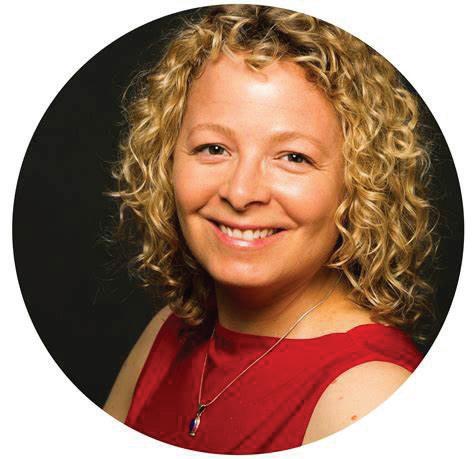




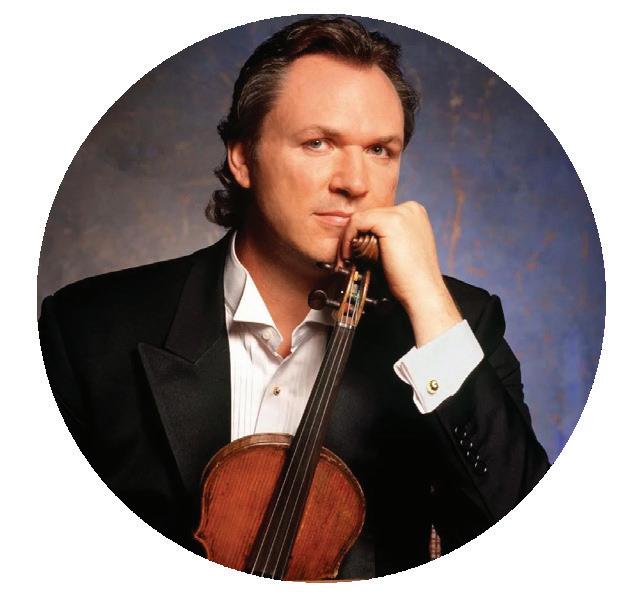


Nestor Torres, Performing Artist | Multiple Grammy® Award-winning Flutist
“Coming to New Mexico and performing with The Santa Fe Symphony is one of the most treasured moments of my artistic career. Bringing my Caribbean heritage to the St. Francis Auditorium with Mariano Morales, and later performing his Concerto with Maestro Figueroa and the Orchestra at the Lensic, was an enriching, transforming experience. I really look forward to coming back and being part of this living treasure, The Santa Fe Symphony, the Crown Jewel of the Southwest. Congratulations on your 40th Anniversary and thank you for your meaningful contribution to the culture of this region.”
Dr. Penelope Penland, Board of Directors, Vice President | Development Chair “First, “I dreamed of annually partnering with other entities who shared our founding year of 1984, leading to the 'Smiles of a Summer Night' Summer Solstice fete with Casa Sena and Goler Fine Imported Shoes, the season opening Musicale at SantaCafé, and the splendid series of Music-Meets-Science original productions of our Voyages of Discovery with the Santa Fe Institute: Darwin & Mendelssohn, Holst’s The Planets, Bach on the Brain, and The Majesty Music & Math. With a DVD of 3M in hand, I approached Franz Joachim, General Manager of New Mexico PBS who was inspired by what he saw, and we proceeded to raise three-quarters of a million dollars to produce the television show which subsequently won a Western Region Emmy® Award. To all of my colleagues at all three institutions, I offer my undying gratitude for your creativity, commitment, and contributions to weaving this most exciting tapestry!”
Mark O'Connor, Performing Artist | Violinist and Composer
“It was an absolute joy to bring my 'An Appalachian Christmas' program to The Santa Fe Symphony in 2019 playing to a sold-out house! It was made all the sweeter knowing that it was The Santa Fe Symphony that commissioned my first orchestral work back in 1993, 'The Fiddle Concerto.' A heartfelt thanks to Santa Fe for all of the years of music, performances, and collaborations! Congratulations on 40 years!”
Elaine Heltman, Principal Oboe
“Music encourages, sometimes demands, connections. Connections through a sonic conduit of emotions that blends one’s own with those around you to realize a composer’s vision. When the stars align, the connection is effortless and flows easily between musicians, to the audience and back, intertwining in the stream of energy. Allowing yourself to step into the flow and connect can be a transcendent experience, only felt at a live music performance. I am grateful to have shared this musical connection with the Santa Fe community, as The Symphony has grown and flourished over the past 40 years.”
“


David Van Winkle, Board of Directors
“My wife (Megan) and I are very much looking forward to the Santa Fe Symphony concert
Charlie Chaplin Smiles with Philippe Quint on January 14. During this concert, our favorite music will be played, Clair de Lune. When I asked my wife to marry me, Clair de Lune was playing on the radio (KHFM). Thus, it has become our favorite. I have even learned how to play it on the piano. The remainder of the concert will be wonderful, but Clair De Lune will have special meaning for us. As a result, we are co-sponsoring this event.”
Mathew Frauwirth, Music Education Committee, Former Chair
At a League of American Orchestras Convention, my wife Meri and I saw a video of “A History of Utah,” performed by the Southern Utah Symphony. This gave us the idea to do a history of Santa Fe, with music performed by children representing the many cultural groups in the city. We had attended a lecture by the New Mexico State historian, who decried the claim that New Mexican culture was based on three groups: Native American, Spanish, and Mexican. He said the culture was an amalgam of many groups—about 50, according to the census.
I brought this idea to The Symphony Board, which approved the project for the 2010–2011 season. We used our volunteer contacts with the Symphony, Santa Fe Children’s Museum, and the Santa Fe Public Schools to assist us in the search for cultural organizations that supported children’s music groups. The contributions that each cultural group provided to the city, as well as the music, could be narrated by children. We filmed and recorded 11 groups over 12 months, with scripts in English and Spanish. The DVDs of the finished project, “We Are The Music,” were distributed to 84 social studies teachers of the third and fourth grades, as well as to all local libraries, the New Mexico Archives, and the PBS online learning channel.”


Elena Sopoci, Former Symphony Violinist
“My favorite Santa Fe Symphony memory was our very first concert, not coincidentally on Labor Day, 1984. The last chord of Beethoven's 2nd was like a cannon and the packed crowd went nuts. I was worried that the balcony in St. Francis Auditorium would collapse from all of the foot stomping and 'Bravos!' What an auspicious beginning!

Stefanie Przybylska, Principal Bassoon | Steering Committee Chair
“Daniel Davis enjoyed attending Santa Fe Symphony concerts for several years before he came up with an idea for a commissioning project involving each orchestra in New Mexico. Inspired by reading about all of the plans to celebrate the state’s upcoming centennial, his idea was for every orchestra in the state to commission a local composer to write a celebratory work to mark the 100th year of statehood in 2012. He wrote to all of the orchestras, hoping to have a body of work by New Mexico composers added to the orchestral repertoire by the time the centennial celebrations were concluded.”




Juan Siddi, Performing Artist | Juan Siddi Arte Flamenco, Artistic Director
“When The Santa Fe Symphony invited me to perform at the Olé Gala in 2019, I was thrilled. It is beautiful how music unites us, all of us, and Santa Fe is very lucky to have an endless flow of music, dance, and art of every kind. So with all of these choices, being asked to bring this centuries-old art-form from my culture to such an incredible group of classic music lovers was a true honor for me. Happy Anniversary, Santa Fe Symphony!”
Gary Lutz, Board of Directors
“As a board member with experience across the Symphony business, what does SFS do well? Where do you see we’ve grown the most during your time on the board? In my years with The Santa Fe Symphony Orchestra & Chorus, I continue to be so impressed with the organization’s ability to adapt to ever-changing circumstances. Whether it’s creating programs to meet the tastes of new audiences, successfully pivoting during covid, or creating collaborations with other artists, the focus is always on how to delight audiences with memorable experiences. None of this would be possible without, first, the devotion and talent of our world-class performers; second, the energy, passion and commitment coming from our staff and leadership; and third, the enduring vision and support from the Board. A magical combination!”


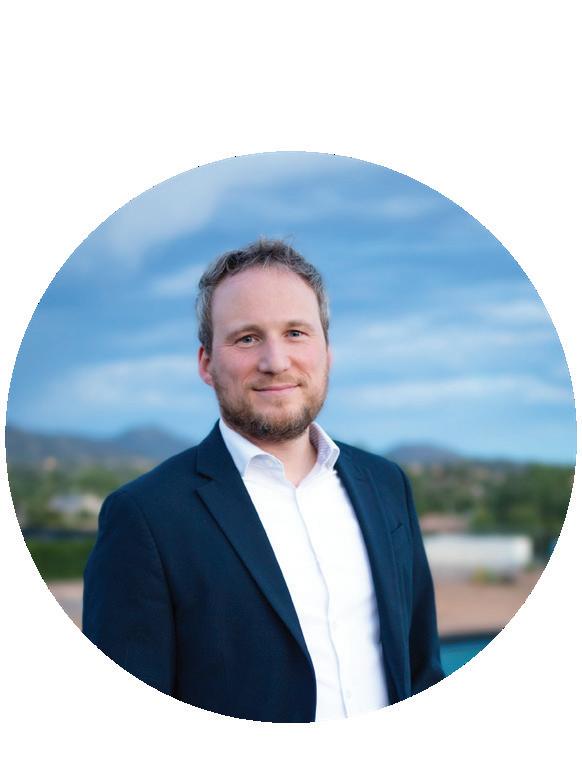
Mary Macukas, Board of Directors | Events Chair — and John Macukas
“For forty years, The Santa Fe Symphony Orchestra & Chorus has been a mainstay of the artistic diversity and beauty of our community. During these decades, The Symphony has enhanced our quality of life, adding to the special character of this community we all love. It has reached across multiple generations; filling the Lensic with exceptional musical performances and inspiring future generations of symphonic music lovers through its diversified programs for children. As we celebrate the past, the future is even brighter for one of Santa Fe’s cultural gems. We look forward to sharing it all with you and continuing to grow with our community.”
William Waag, Associate Artistic Director & Youth Orchestra Conductor
“The Santa Fe Symphony opening its doors to the musicians of the Santa Fe Youth Symphony has transformed our students’ experience. It has not only given us an opportunity to play iconic symphonies and other classics that would otherwise be too far off of our fingertips, but it’s also helped raise the bar for our students’ expectations of themselves and of their peers. Being on stage with professionals playing on both sides has opened up our students’ ears and their understanding of what it takes to play at the next level. It’s an inspiring process that expands the students’ horizons, and all of us at SFYSA are grateful and elated to make music with The Santa Fe Symphony.”







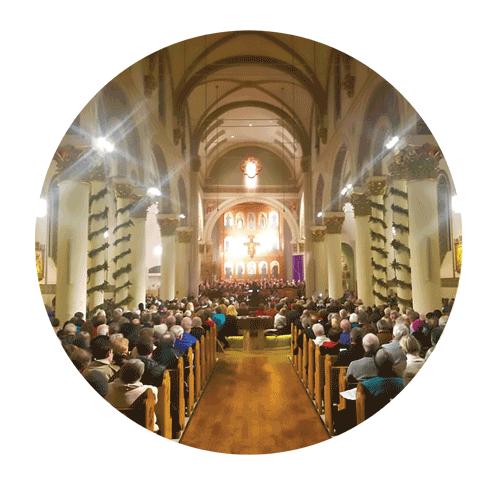
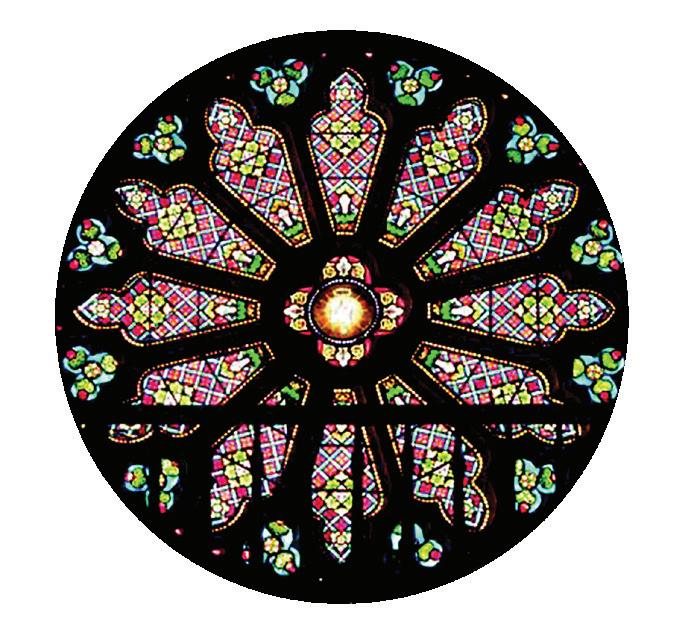
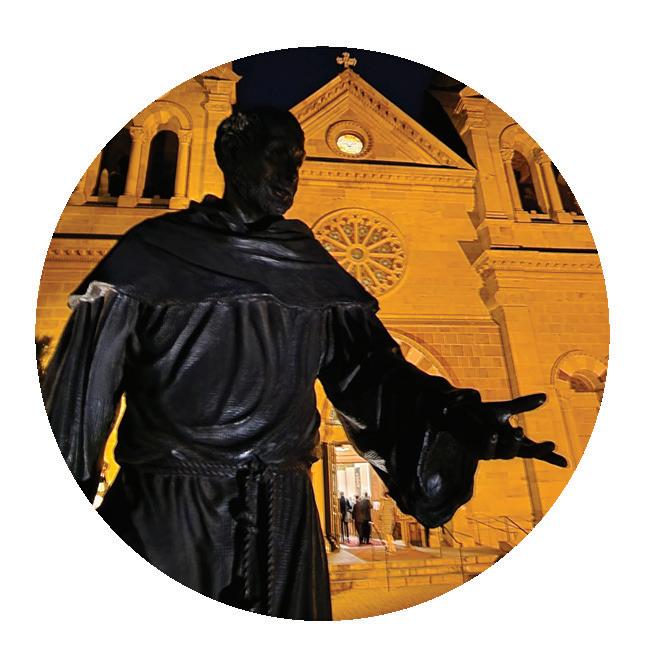
Carmen Flórez-Mansi leads The Santa Fe Symphony Chorus for three spectacular community concerts in 2023–2024! Enjoy beautiful choral music at the iconic Cathedral Basilica of St. Francis of Assisi in downtown Santa Fe—with Paul Roth on collaborative piano. Be sure to bring the entire family! All ages are welcome. Pay what you wish! No tickets are required and all ages are welcome.
Choral Masterworks
October 29, 2023—3:00 PM
Doors open at 2:15 pm.
Gather your friends and family and experience an afternoon of choral favorites sung by the angelic voices of The Symphony Chorus performing Ariel Ramírez' Misa Criolla, Bendita Sabendoria by Villa Lobos, and many more at this popular annual performance.
Carols & Choruses
December 12, 2023—7:00 PM
Doors open at 6:15 pm.
Join us for some of the most beloved Christmas carols of all time including John Rutter’s magnificent Gloria—accompanied by the glorious sounds of The Symphony Brass & Organ. This concert is our gift to the Santa Fe Community during the holiday season.
We Remember
May 21, 2024—3:00 PM
Doors open at 2:15 pm.
Join us as we salute those who served and their families, in honor of Memorial Day, with an inspirational and uplifting program featuring beloved choral favorites such as Stephen Paulus’ Prayers and Remembrances, and more.





By investing in The Foundation for The Santa Fe Symphony, you leave a perpetual, personal legacy, ensuring that our community continues to experience the incredible power of orchestral music for generations to come. Contributing to the Foundation enhances The Symphony’s mission of producing world-class music and music education programs in a permanent way. Over the past 20 years, the Foundation for The Santa Fe Symphony has reached nearly $3 million in total assets. The annual distributions from these invested assets provide almost 10% of The Symphony’s annual operating budget. There is no more powerful gift than one to future generations. Create your own permanent legacy through The Foundation today and help us keep great music alive for another 40 years!
FOUNDATION |
Ann Neuberger Aceves
Robin Smith

Perry C. Andrews, III
Mike Dawson
Eileen R. Mandel
Marion Skubi Investment Advisors Dr. Penelope Penland
The Eddie & Peaches Gilbert
Gregory W. Heltman Founder’s Chair ($1,000,000)
The Dr. Penelope Penland Principal Cello Chair ($150,000)
Lloyd & Virginia Storr Music Library Fund ($50,000)
The Boo Miller Assistant Concertmaster Chair ($200,000)
The Boo Miller Principal Percussion Chair ($150,000)
Forever Mentor Program
John & Marte Murphy ($50,000)
Teresa M. Pierce Outgoing Foundation President Brian McGrath
The Ann Neuberger Aceves Principal Conductor Podium ($500,000)
The Diane & Peter Doniger Principal Harp Chair ($150,000)
The Regan/Doniger Fund and The DeHaan National Orchestra Program for The American Pianists Association Fellow Presentation ($55,000)
The Foundation for The Santa Fe Symphony Orchestra & Chorus is a 501(c)(3) charitable organization. Tax ID No. 85–048786

Thank you for sustaining our legacy!

“When I joined The Foundation for The Santa Fe Symphony’s board of directors in 1998 as the Founding President, we were in our infancy. I was delighted to head a group that would create and grow a sound financial support base for The Symphony. For years, the board, musicians, and staff plotted and dreamed about what The Symphony would look like in 20, 30, 40 years. We are now celebrating that 40th anniversary and are proud to have a strong endowment that provides nearly 10% of our operating funds each year.”

The Foundation was started and sustained by several passionate donors, listed in our annual program book. The initial gift included an extremely rare first-edition book, donated by Gladys and Julius Heldman, the sale of which in 2000 firmly established the Foundation's footing. In the ensuing years, many members of the Foundation and Symphony boards stepped up to fund the endowment, making it into what it is today.
Endowments are a critical part of any symphony’s health. Contributions to the endowment (the Foundation) enable our musicians and leadership to maintain independence, flexibility, vitality, and strength.
The Foundation’s mission is to effectively manage its assets and to preserve, safeguard, and conservatively grow its investments so that it can make regular contributions to The Symphony long into the future.
In the 24 years since the birth of the Foundation, it has grown to nearly $3 million. This is due completely to the generosity and passion of many of our longtime Symphony supporters. Thanks to the Foundation and these generous supporters, The Symphony is able to continue to meet the opportunities and challenges of the future.
Through the many ups and downs of the last forty years, the board members, musicians, and staff have worked tirelessly to bring beautiful music to our audience. The future is uncertain, but it is the Foundation Board’s mission now, and in perpetuity, to meet the needs of our musicians and our audience.
The Foundation offers the chance to support the future of The Symphony—not just today or tomorrow, but for another forty years and beyond. Whether you attend concerts and fundraisers, volunteer your time and talent, and/ or include The Symphony in your estate plan or charitable distributions—you have made The Symphony what it is today. Thank you.
PresidentWe gratefully acknowledge the following individuals and organizations for their generous support of The Foundation for The Santa Fe Symphony Orchestra & Chorus. The following contributors are listed according to their cumulative non-designated giving since The Foundation’s inception in 1998:
The Tchaikovsky Society ($200,000+)
Ann Neuberger Aceves Founding Member
Peaches and Eddie∞ Gilbert Founding Members
Gladys and Julius Heldman ∞ Founding Members
Boo Miller
Roy R. and Marie S. Neuberger ∞ Foundation Founding Members
The Ellington Society ($50,000+)
Melanie Peters Thorne and Edwin Thorne Jr. Foundation Founding Members
Estate of Francis Essig
Claire and Richard Gantos
The Mendelssohn Society ($25,000+)
Helen and Bertram∞ Gabriel Foundation Founding Members
Estate of Mrs. Georges Dapples
The Bernstein Society ($10,000+)
Drs. Gilbert M. Maw and Jenny M. Auger Maw
Estate of Duane “Pete” Myers
Carmen Paradis and Brian McGrath
Carl and Patricia Sheppard
Marion and Joe Skubi
The Gladys and Julius Heldman
Circle of Friends ($50,000)
Helen Gabriel ($5,000+)
Sheryl and Michael DeGenring
Diane and Peter Doniger
Connie Girard-diCarlo and Ambassador David ($2,000+)
Jean and John∞ Cheek
Lee Dirks
Maria and Edward Gale
Dr. James Fries
Cameron Haight
Sue and Dr. Beryl Lovitz ∞
Joyce Nicholson ∞
Genie and Mick Ramsey
Frances E. Richards
($1,000+)
Charmay Allred ∞
Ann Griffith Ash
David and Maggie Brown
Julie and Mike Dawson
Charles Gulick
Marian and Robert Haight
Bertram Heil
Elaine and Gregory and Heltman
Evelyn and David Kloepper
Barbara Lenssen and Keith Anderson
Dr. and Mrs. James McCaffery
Dee and Bill Moore
Ted and Alice Oakley
Tom and Sarah Penland
Lee and Mimi Powell
James Sullivan
Nancy D. and William∞ Zeckendorf
Janet∞ and Everett Zlatoff-Mirsky
Other Foundation Friends
Kathy∞ and Rick Abeles
George Aceves
Martha Albrecht
Ann Alexander and Richard Khanlian∞
Anonymous
Gerald Arnold
Susan Arnold and Ralph Poelling
Florian Art Garcia∞ and Brian F. Dailey
Julie and William Ashbey
Julie and David Ashton
Hank Bahnsen
Ethel and Sam Ballen
Vera Barad and Edward Marks
F. K. Bateman
Linda and Bill Bein
Celia Berlin
Helen and Richard Brandt
Leona Bronstein
Norma and Harold Brown ∞
Norma H. Burch
Raymond Burkard
Elva and Bob Busch
Helen and Julius Cahn
Lisa and David Caldwell
J.Susan Cedar and Gary Lowenthal
Barbara Schmidt Clark and Aaron Clark
Judith Margo Clark
Diane Copland
Diane Shaw Courtney
Zella and Larry Cox
Haley and Hugh Curtin
Edgar Foster Daniels ∞
Josette and Volker De La Harpe ∞
Janet and Joel DeLisa
Dorothy Dorsey
Al Dos Santos
Mary E. Eisenberg
Carole and Hal Eitzen
Helen Eubank
Bernard C. Ewell
Nancy and Thomas Feine
Stephen Flance
Megan and Jeffrey Fries
Elizabeth Glascock
Linda Goff
Charles and Diane Goodman
Julianne Bodnar and John Greenspan∞
Maria and Kurt∞ Haegele
Marianne Hale
Kitty Carlisle Hart ∞
Barbara Hays
Arthur Hemmendinger
Roth and Sarah Herrlinger
Thomas George David Hesslein
Ann and Jerry Hicks
Constance Hillis
C.W. and Gail Hornsby
Ira and Virginia Jackson
Medora and James Jennings
Colleen Jones
Patricia and Alfred Judd
Sara and Jim Killough
Sandra Kirmer
Dr. and Mrs. Joseph C. Kiser
Patricia Klock
Kay Delle Koch
Ronnie Koenig and Marc Feldman
Camille and David Kornreich
Susan Krueger
David and Jody Larson
Lynn F. Lee
Phyllis and Stanford∞ Lehmberg
Ellie Leighton
Ann and Bill∞ LeMay
Miranda and Ralph Levy
Carole Light and Alex Redmountain
Elizabeth Lubetkin Lipton
Martin and Mildred Litke
Harvey Litt
George and Norma Litton
Andrea London
Matthew Roy London
Patricia London
Linda Mack and Wynn Berven
Colleen Mahon-Powers
Paul and Nancy Malmuth
Dr. Marilyn Mason
Thank you for sustaining our
Lynn Matte-Gibbs and Stephen W. Gibbs and John McCusker
Karen McGrath
Andre Michaudon
Audrey Miller
Ann Morgan
Margaret Morgan and David Cohn
Patricia and Richard Morris
Luanne and Steve Moyer
Pat Mueller-Vollmer
Ruth Nelson and Thomas Murphy
Jim Neuberger
Roy S. Neuberger ∞
Betsy S. Nichols
Richard A. Nulman
Bob Nurock
Dolores and Frank Ortiz
Concha Ortiz y Pino de Kleven
Melinne Owen and Paul Giguere
Margaret M. Page and J. Michael Pearce
Janet M. Peacock
John Pedotto
Valerye Plath
William and Ronnie Potter
Joshua Quesada
Harriet Raff
Ann Reifman and Elliot Blum
John Geiger and Ronald Rinker ∞
James M. C. Ritchie
Mara and Charles Robinson
Kathleen and Gerald Rodriguez ∞
Brett Roorbach
Kimberly Roos
Barbara Rosenblum
Hilda Rush
Molly and Tony∞ Russo
Donna Saiz
Dorothy Salant
Mary Anne and Allen Sanborn
Nancy Scheer ∞
Beatrice and M. C. Schultz
Noel Schuurman
Edward Seymour
Donald Shina and Kevin Waidmann
Christine Simpson
Karen Sonn
Karen and Frank Sortino
Harold Steinberg
Emily and Peter Coates Sundt
Georgann and Jeff Taylor
Priscilla and Hunter Temple
Enid and Roy Tidwell
Connie Tirschwell
Patrick Toal
Gene and Sandy Tomlinson
Emma Lou and Don Van Soelen
Kathryn Van der Heiden and Grover Criswell
Roberta Van Welt
Marlene Vrba
Suzanne Watkins
Moira and Bernard Watts
Joy S. Weber
Joan and Truel West
Dorian Wilkes
T.C. and Dora Williams
Barbara Windom and Victor di Suvero
Marilyn and Marvin Winick
Nancy Wirth
Marcia Wolf
Marilyn Worthington
Gilda Zalaznick
Patricia and Nolan∞ Zisman
Foundations, Funds, and Trusts
Anonymous
Dominion Foundation
Donald T. Regan Charitable Foundation
Bar-Levav Family Foundation
Garfield Street Foundation
The Harold Brown and Norma C. Brown Revocable Trust
Lackner Family Endowment Fund
McCune Charitable Foundation, Santa Fe
Sidney and Sadie Cohen Foundation
Thorne Family Fund, Santa Fe Community Foundation
Donations to The Foundation
In Honor of:
Ann Aceves, by Ellie Leighton
My sister, Ann Neuberger Aceves, by Roy S. Neuberger ∞
Ray Besing, by Joyce Nicholson ∞
Elaine and Gregory W. Heltman, by Joyce Nicholson ∞
Marian and Ernest Karlson, by Kathleen Rodriguez and Gerald Rodriguez ∞
Lori Lovato, by Zella and Larry Cox
Joyce Nicholson ∞
Beth and Joel Scott, by Joyce Nicholson ∞
Donations to The Foundation
In Memory of:
Ann Mahon Bradstreet, by Joyce Nicholson ∞
Franz and Amalia Chrobok, by Maria and Kurt∞ Haegele
Ken Coleman, by Michael and Sheryl DeGenring
Ruthe Coleman, by Ann Neuberger Aceves
Michael Melody and Bonnie Binkert
Bertram Gabriel Jr., by Ann Neuberger Aceves
Helen Gabriel
David Grayson, by John and Peggy Polk
Samuel Grossman, by John∞ and Jean Cheek
Chris Gulick, by Charles Gulick
Gladys and Julius Heldman, by Dee and Bill Moore
Gladys Heldman, by Ann Neuberger Aceves
Keith Anderson and Barbara Lenssen
Helen Gabriel
Joyce Nicholson ∞
Harriet Heltman
Sally Joseph, by Harriet Raff
Bennett Marcus, by Enid and Roy Tidwell
Don and Emma Lou Van Soelen
Marielle McKinney, by Edgar Foster Daniels ∞ Lee Dirks
Josette and Volker de la Harpe ∞
Gladys and Julius Heldman ∞
Ira and Virginia Jackson
Miranda and Ralph Levy
Richard A. Nulman
Concha Ortiz y Pino de Kleven
Frank and Delores Ortiz ∞
James M. C. Ritchie
Edward Seymour
Emily and Peter Coates Sundt
Suzanne Watkins
Barbara Windom and Victor di Suvero
Nancy D. and William∞ Zeckendorf
Roy R. Neuberger, by Ann Neuberger Aceves
Jan Arleen Nicholson, by Joyce Nicholson ∞
Ambassador Frank Ortiz, by Ann Neuberger Aceves
Betty Rutledge, by Ann and Bill∞ LeMay
Dona Haynes Schultz, by Charmay Allred ∞
Pat Wismer, by Christine F. Wismer
Emily Zants ∞
Business Donations to The Foundation In Kind
Eun K. Hong, CPA
∞ = deceased
Perry C. Andrews, III
Anonymous
Anonymous, In Memory of Gladys and Julius Heldman
Ann Neuberger Aceves
Gregg Antonsen
Stephen and Amanda Apodaca
David and Maggie Brown
Raymond and Mary Ann Burkard
Marilyn Casabonne
Jean Kay Cox
Daniel Crane
Hugh and Haley Curtin
Helen C. Gabriel
Fred and Shelley Glantz
Susan Goldstein and Steven J. Goldstein, MD
Elaine and Gregory W. Heltman
Eileen R. Mandel
Drs. Gilbert M. Maw and Jenny M. Auger Maw
Carmen Paradis and Brian McGrath
Dr. Penelope Penland
Genie Ramsey
Britt Ravnan and Michael Ebinger
Laurie Rossi
Vera Russo
Donald Shina, MD and Kevin Waidmann
Marion Skubi
Ken Stilwell
Hunter and Priscilla Temple
Melanie Peters Thorne and Edwin Thorne Jr.
Elizabeth VanArsdel
David and Megan Van Winkle
Gretchen Witti
Nancy Zeckendorf
The Santa Fe Symphony would like to acknowledge the following members of the Ovation Society who have passed on. We are eternally grateful for their generosity.
Charmay Allred
Dr. Harold & Norma Brown
Mrs. George Dapples
Francis Essig
Allen Mason
Joyce M. Nicholson


Anthony Russo
Patricia Sheppard
Bernice E. Weiss
Margaret “Mickey” F. Inbody
Emily Zants
Janet Zlatoff-Mirsky


High Desert Architecture is here to transform your vision into a breathtaking reality. Whether it’s your dream home, an innovative commercial space, or an awe-inspiring public structure, we bring your imagination to life.
At our company, we have an in-house realtor dedicated to assisting you in locating and acquiring the ideal lot. With our expertise as builders and land specialists, we guide our clients away from the potentially costly mistake of investing in a seemingly excellent lot without considering crucial factors beyond the surface appearance.
Our design process starts with our team of award-winning architects who take the time to understand you and your distinct requirements. We believe in creating homes that perfectly match your way of life and reflect your individual aesthetic. By combining our expertise with your personal input, we create residences that bring your dreams to life.
As general contractors, your architect-builder plays a pivotal role in managing every aspect of your construction project. Their comprehensive understanding of the design is the driving force behind the successful execution of the build from inception to completion.






There are many ways to support your Santa Fe Symphony Orchestra & Chorus!
Individual Memberships are available at a variety of levels, each with its own special benefits acknowledging your unrestricted annual gift in support of The Symphony’s general operations and programming. Memberships run for 12 months from the date of your contribution. All contributions are acknowledged in the Program Book. You may choose to decline all non-deductible benefits. For a full list of membership benefits, please visit santafesymphony.org/support/donate/.
The Santa Fe community supports The Symphony in a variety of ways. One unique and rewarding option is to underwrite or sponsor an individual concert. Individuals and businesses can directly support a Symphony or Chorus concert through sponsorship, with a variety of ticket, marketing, and other benefits. Sponsors may also dedicate a Symphony concert to honor or memorialize a loved one, or celebrate a friend, family member, or special occasion.
The Symphony brings world-renowned soloists to Santa Fe. You have an opportunity to directly support the cost of bringing these artists to the stage through our Reach for the Stars program. If you enjoy violin virtuosos and piano prodigies, or if you simply want to get to know the guest artists better, consider Reach for the Stars. Our guest artists and conductors attend our post-concert Artist Receptions at Galerie Züger, mingling with musicians and donors. Donor benefits at this level include an invitation to all Artist Receptions and more.
Curious to learn more about the musicians you see on stage? Adopt a musician and honor our individual orchestral and choral musicians! When you adopt a musician, you will get to know them better while helping us maintain high standards of professional support for artists of The Santa Fe Symphony Orchestra & Chorus. Adoptions are for one year and subject to availability. Visit santafesymphony.org/adopt for more information.
A gift to The Foundation of The Santa Fe Symphony is one of the most lasting and powerful resources a donor can offer, ensuring a sustained source of revenue for The Orchestra into the future. There are many ways to donate, including direct gifts, annual pledges, gifts of stock, and IRA distributions.

We need YOUR help to continue bringing great music to life.®

The Symphony welcomes honorarium and memoriam gifts, made in celebration of a friend or family member, to commemorate an occasion or to remember a loved one. By giving a memoriam or honorarium gift, you will be celebrating them all season long and making it possible for The Symphony musicians to bring beautiful music to the stage, time after time. Tribute gifts are acknowledged in the Season Program Book and a card will be mailed to the honoree at your request, informing them of your gift.
The Santa Fe Symphony Orchestra & Chorus is always seeking local businesses to partner with us! Benefits include a variety of marketing opportunities. Full Concert Underwriters, Full Sponsors, and Sponsorsin-Part allow us to bring live classical music to The Lensic stage and other venues across Santa Fe. Whether you are an independent entrepreneur or a thriving corporation, there are multiple sponsorship opportunities to highlight your business to our discerning audience of classical music lovers.
Everyone knows that children are the future, and the same is true for the future of symphony orchestras throughout the world! The Santa Fe Symphony has several educational programs that reach thousands of children in the Santa Fe area. If you share our passion for music education, consider designating your gift to our music education programs. Learn more on pages 138-139.
DONATE TODAY.
When you give to The Santa Fe Symphony Orchestra & Chorus, you help foster extraordinary artistic talent, right here in our community, and inspire our youngest and most in need. Ticket sales cover just 25% of our operating costs—for the rest, we rely on generous donors like you.
Your may designate your gift to several different aspects of The Santa Fe Symphony's giving programs—directly towards whatever sparks your interest! Make a tax-deductible contribution today at santafesymphony.org/donate, or by contacting Development Officer, Laura Witte, at 505.552.3916 or lwitte@santafesymphony.org.
You may also mail your gift to:
The Santa Fe Symphony Orchestra & Chorus, PO Box 9692, Santa Fe, NM 87504–9692
Each year, as a thank-you to our generous donors, The Symphony hosts Musicales—intimate gatherings in private homes, galleries, and exciting venues across Santa Fe. Donors in our Circle levels are invited to attend these gatherings throughout the year. Guests enjoy hors d'oeuvres and fine wine, followed by a performance by Symphony musicians, renowned guest artists, and even, on occasion, our Music Director!
We are so grateful to our family of Symphony donors, friends, artists, and especially Musicale-lovers who host these gatherings each season.
Become a part of our Circles today by supporting The Symphony! Contact Development Officer, Laura Witte, at 505.552.3916 or lwitte@santafesymphony.org

Let's connect! Symphony Supporters have the most fun.

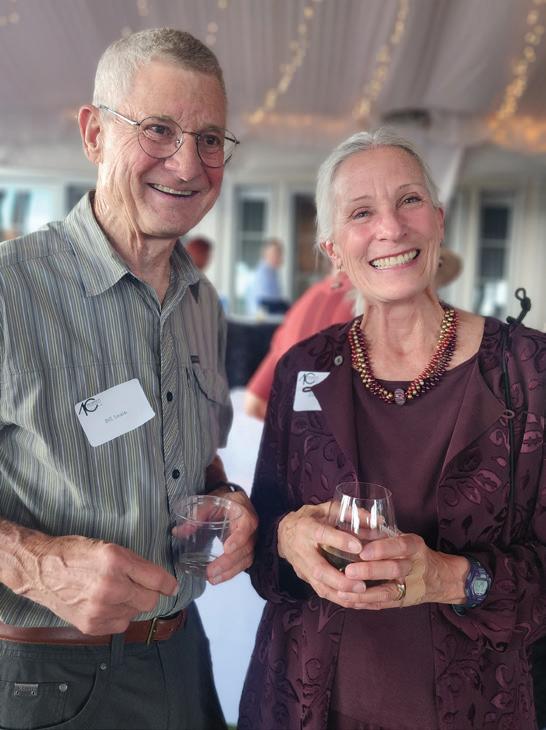






When you give to The Santa Fe Symphony Orchestra & Chorus, you help foster extraordinary artistic talent, unite our community, and support accessible arts for youth and families. Ticket sales cover just 25% of our operating costs—for the rest, we rely on generous donors like you. There are many ways to support YOUR Santa Fe Symphony. No matter what form your support takes, know that you are helping us bring music to thousands and impacting hundreds of students, seniors, and families through great music. Please contact Development Officer, Laura Witte, at 505.552.3916 or email her at lwitte@santafesymphony.org if you have questions about the following ways to give.
Make your donation quickly and easily via credit at: boxoffice.santafesymphony.org/support/donate/.
Please make checks payable to The Santa Fe Symphony Orchestra & Chorus. Mailing Address: PO Box 9692, Santa Fe, NM 87504.
Commit to a recurring monthly donation, spreading the impact of your overall giving and supporting The Santa Fe Symphony Orchestra & Chorus all year long. Please contact us to set up a recurring monthly pledge of any amount.
Patrons may add a contribution when making a subscription or single ticket purchase—online or via telephone.
If you are 73 or older, you may avoid paying tax on your Required Minimum Distribution (RMD) when you convert it to a Qualified Charitable Donation (QCD)! Please forward The Santa Fe Symphony’s address and Tax ID# to your IRA Custodian and let them know to include your name when they distribute the contribution so we may recognize you properly.
The Symphony accepts gifts of stock. For detailed instructions on how to transfer appreciated securities to the Symphony, please contact Development Officer Laura Witte. Brokerage firms do not always release the names of their clients, so let us know about your intent to make a gift so that we can identify your generous gift and issue a tax receipt!
Many companies will match gifts of current and/or retired employees, doubling or even tripling your impact. Check with your Personnel, Benefits, or Human Resources Department to find out if your employer will match your gift. Employers like Los Alamos National Labs offer matching gift opportunities as an employee benefit.
Smith's Inspiring Donations is a program that allows you to give back. They will donate 0.5% of your total order to the nonprofit of your choice, every time you shop with your rewards card. Visit your local Smith’s to get started today.
An increasingly popular way to make a gift, one with significant tax advantages, is a donor advised fund (DAF). A DAF is like a personalized, charitable savings account. You can contribute cash, stocks, real estate or other assets to a public charity like Schwab Charitable, Fidelity Charitable, or the Santa Fe Community Foundation. You may invest these funds for tax-free growth and recommend grants to nonprofits like The Santa Fe Symphony Orchestra & Chorus over time.
Including The Santa Fe Symphony in your long-term financial plans secures both your legacy and a legacy of musical experiences for generations to come. You may be able to have a significant impact without parting with cash today. To discuss the many ways to make a gift through your will, trust, IRA, life insurance policy, or donor advised fund, contact Development Officer Laura Witte.
Contact Regina Klapper at rklapper@santafesymphony.org to sign up as a volunteer with The Symphony Orchestra. Our dedicated volunteers assist with concerts, special events, administrative work, and other critical activities throughout the year.
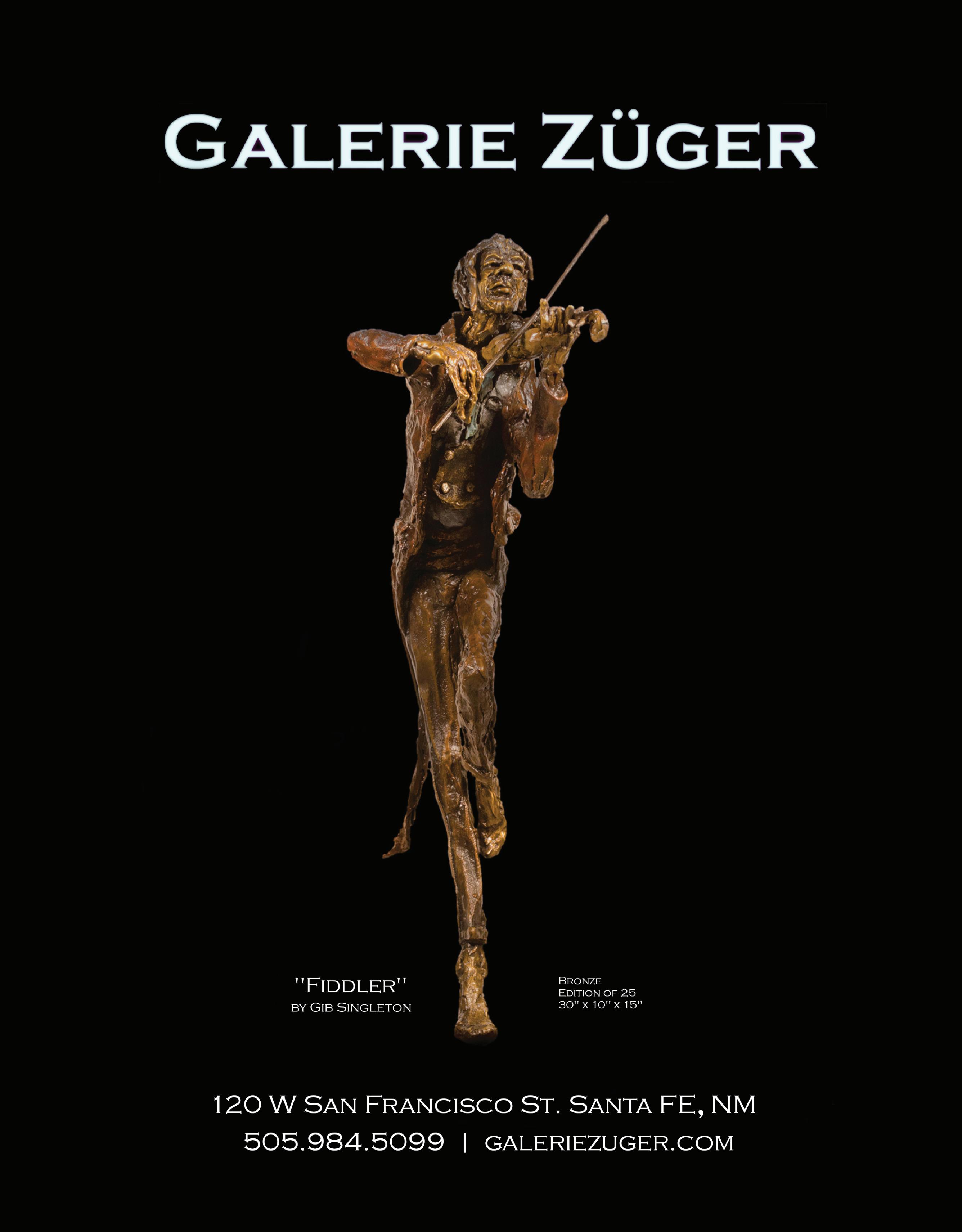
After Sunday performances at The Lensic Performing Arts Center we offer something unique for The Santa Fe Symphony's Circle Members—a private reception just a short walk from the concert hall! Still uplifted by the concert, members gather with their guests at this stunning gallery.

Meet our guest artists and conductors, chat with orchestral and choral musicians, and mingle with your guests, Board members, and other patrons in one of the most popular galleries in town! We look forward to your good company after the concerts—at the beautiful Galerie Züger in downtown Santa Fe.
Many thanks to the owners of Galerie Züger and Art Advisor Mary Felton for their gracious hospitality.

Contact Development Officer Laura Witte at 505.552.3916 or lwitte@santafesymphony.org.

Special thanks to Casa Rondeña Winery for donating their award-winning wine to our private Artist Receptions. Named best vintner and best winery by the readers of Albuquerque The Magazine for seven years in a row, Casa Rondeña Winery was established in late 1995 as a family undertaking, with the first plantings in 1990 at the hands of vintner John Calvin and his two young sons, Ross and Clayton.
$5,000 Music Director
$2,000 Concertmaster
$1,200 Assistant Concertmaster
$1,000 Principal Musician $600 Section Musician
$3,000 Choral Director $600 Choral Musician

One of our goals this season was to adopt 100% of our tenured musicians by our Season Opener. Guess what? We met our goal. All musicians were adopted by September 1, but adoptions are expiring and new musicians are becoming available all the time! Contact Development Officer Laura Witte at lwitte@santafesymphony.org or 505.552-3916 if you would like to be a part of this exciting program. You may select any member who is not currently adopted, as well as adopt more than one musician. Visit santafesymphony.org/donate/adopt to see who is currently available.
Donations in Support of the Adopt-A-Musician Program as of September 1 are listed below:
Perry C. Andrews adopted:
James Holland, Cello
Melinda Mack, Cello
Anonymous adopted:
Barbara Clark, Viola
Laura Dwyer, Flute
Peter Erb, Horn
Sheila McLay, Violin II
Katelyn Lewis, Horn
Barbara Morris, Violin I
Lynn Mostoller, Trombone
Kathy Olszowka, Double Bass
Randall Balmer & Catrinka Randall adopted:
Lori Lovato, Principal Clarinet
Judith Benkendorf Marks & Norman Marks adopted:
Luke Gullickson, Piano / Harpischord
Shane Cronenweth adopted:
David Tall, Principal Bass Trombone
Allegra & Jim Derryberry adopted:
Ruxandra Marquardt, Assistant Concertmaster
Jose “Pepe” Figueroa adopted: Guillermo Figueroa, Music Director
Christine & Frank Fredenburgh adopted:
Kimberly Fredenburgh, Principal Viola
Susan & Steven Goldstein adopted:
Bethany Gallegos, Chorister
Cheryl Fossum Graham adopted:
Elaine Heltman, Principal Oboe
Richard Hawkins adopted: Bryon Herrington, Principal Trombone
Shirley & Franklin Hirsch adopted:
Valerie Turner, Violin II
Kathleen & Brad Holian adopted:
Dana Winograd, Principal Cello
Alice & John Jennings adopted:
Allegra Askew, Viola
Christine Rancier, Viola
William Landschulz adopted:
Kathy Landschulz, Chorister
Eileen R. Mandel adopted:
Anne Eisfeller, Principal Harp
Jane and David McGuire adopted:
Laura Steiner, Violin II
Sara Mills & Scott Brown adopted:
Sam Brown, Double Bass
Allison Tutton, Horn
Scott Norville adopted:
Joel Becktell, Assistant Principal Cello
Dr. Penelope Penland adopted: Richard White, Principal Tuba
Teresa Pierce adopted: Stefanie Przybylska, Principal Bassoon
Sali Randel & Bernard Ewell adopted: Paul Roth, Collaborative Piano
Row S Ladies adopted:
Rebecca Ray, Oboe
Laurie Rossi adopted:
Lisa Collins, Cello
Gloria Velasco, Violin II
Laurie Rossi & John Scully adopted: Alan Mar, Violin I
Carol & Richard Rudman adopted: Kenneth Dean, Principal Timpani
Emma Scherer & Zak Nelson adopted: Emily Erb, Clarinet
John Scully adopted:
Erin Espinoza, Cello
Anne Karlstrom, Violin II
Virginia Lawrence, Viola
Frank Murray, Double Bass
Carol Swift, Violin I
Merle & Franklin Strauss adopted: David Felberg, Concertmaster
Ed and Melanie Thorne adopted: Alexis Corbin, Percussion
Megan & David Van Winkle adopted: Carla Kountoupes, Violin II
Judith Williams & Elliott Stern adopted:
Brynn Marchiando, Principal Trumpet
Wendy Wilson & Doug Turco adopted: Carmen Flórez-Mansi, Choral Director
Everett Zlatoff-Mirsky adopted: Nicolle Maniaci, Principal Violin II



I think The Symphony's Adopt-A-Musician Program creates the perfect bridge between us musicians and our audience. Each time The Symphony office lets me know that I'm adopted, I'm truly honored and I can't wait to meet them.
As a part of the Adopt-A-Musician program, you will be introduced to your adopted musician, offered a photograph opportunity with your adopted musician(s)*, and invited to attend an orchestra dress rehearsal. Sponsors of principal musicians may sit within the instrument section—as close as possible to their musician. All adoptions will be acknowledged under the adopted orchestra member’s image at santafesymphony.org/orchestra for one year following the adoption.
An acknowledgment of your participation in the Adopt-A-Musician program will also appear in The Santa Fe Symphony’s Season Program Book. *Select musicians are unavailable for photo opportunities.


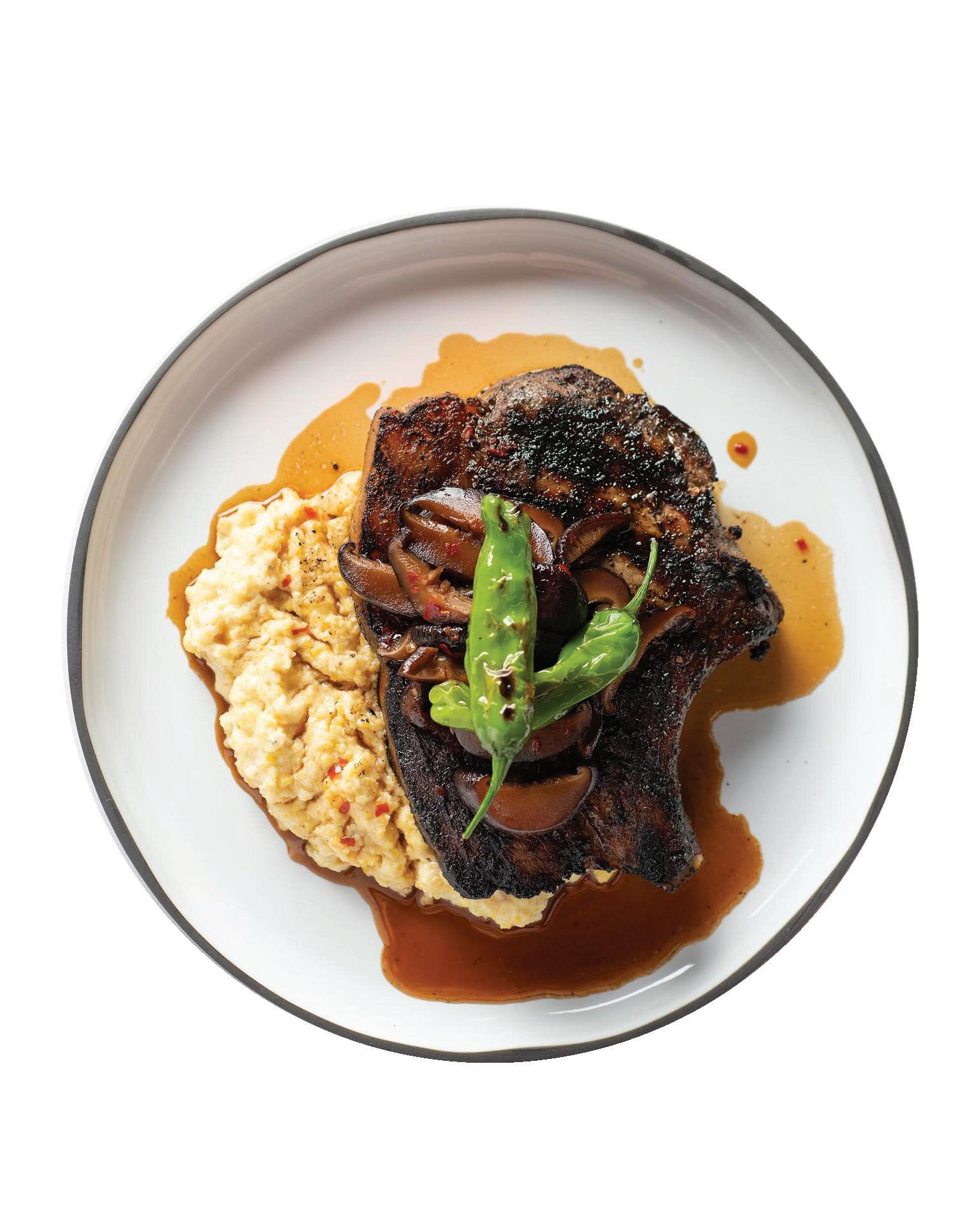



We gratefully acknowledge the following individuals and organizations for their generous support. Gifts of all sizes to the Annual Fund help us bring great music to life each year, bridging the gap between income from ticket sales (which accounts for just 25% of our annual revenue) and the cost of our 30+ subscription and community outreach concerts each season.
Listed below are contributors who made a gift of $10 or more to the Annual Fund between July 1, 2022 and June 30, 2023. For more information on giving levels and how to support The Symphony, please visit santafesymphony.org/donate or call Development Officer, Laura Witte, at 505.552.3916.
Impresario Circle
Ann Neuberger Aceves
Boo Miller
Composers Circle
Susan and Steven Goldstein, MD
Katherine and William Landschulz
Faith and David Pedowitz, Neuberger Berman
Suzanne Timble, PhD, JD
Producers Circle
Perry C. Andrews, III, and Scott Baker
Ann F. Dederer and William Seale
Casa Rondeña Winery
CHRISTUS St. Vincent
Regional Medical Center
Enterprise Bank & Trust
Jose Figueroa
Fix My Roof
Debra L. Hart and Leslie Arthur Roundstream
Diane and John Lenssen
Lexus of Santa Fe
Mary and John Macukas
Dee Ann McIntyre
Dr. Penelope Penland
Teresa Pierce
Beth and Joel Scott
Thornburg Investment Management
Valerie Turner and Guillermo Figueroa
WildEarth Guardians
Dr. Marylou Witz
Conductors Circle
Catrinka Randall and Randall Balmer
Zella and Lawrence Cox
Julie and Michael Dawson
Constance and Ambassador David Girard-diCarlo
Joyce Wolff and Richard Henderson
Shirley and E. Franklin Hirsch
Phyllis Lehmberg
Frances E. Richards
Laurie Rossi and John Scully
Carol and Richard H. Rudman
Ken Stilwell
Kay and Neel Storr, Storr Family Endowment Fund
Megan and David Van Winkle
Elizabeth VanArsdel
Everett Zlatoff-Mirsky
Musicians Circle
Mary Azcuenaga
Holly Bray and Thomas Witherington
Kate Carswell and Timothy Schmoyer
Century Bank
Laura and Larry Colin
Shane Cronenweth
Tina and Georges Feghali
Marilyn S. Hebert
Dorinda and Peter Komis, Komis Enterprises, LLC
Virginia Lawrence
Laura A. Liswood
New Mexico Bank & Trust
Robert B. Mackenzie and John Thompson
Eileen R. Mandel
Phil Martin
Evelyn McClure
Justin Medrano, Morgan Stanley Foundation
Kathryn O’Keeffe
Charitable Foundation
Cindi and Jerald Parker
Kathe MacLaren and Dr. Ifan Payne
Evelyn L. Petshek Arts Fund
Sali Randel and Bernard Ewell
Irene and Cervantes Roybal
Elizabeth and James Roghair
Judith Rowan and Richard Schacht
Dee and Augustus Rush
Nikki Schwartz and David Hofmann
Marion and Joe Skubi
Robin Smith
Gayle Snyder
Merle and Franklin Strauss
Joan Vernick
Kevin Waidmann and Donald Shina, MD
The Cathedral Basilica of St. Francis of Assisi
Nancy Zeckendorf
Symphony Circle
ALH Foundation
American Pianists Association
Paul Allison
Ann Griffith Ash
Anne Beckett
Megan and John Boudreau
Margaret Chavez and James Alvino
Concept Hotels
Barbara and James Cooper
Allegra and James Derryberry
Maria and Edward Gale, Gale Family Foundation
Gaia Contemporary
Keri L. Durfee and Mark Goldweitz
Dorne and Stephen Eastwood
Anne C. Eisfeller
Cheryl Fossum Graham
David Frank and Kazukuni Sugiyama
Stephanie Greene
Barbara Hart
Richard Hawkins
Bertram Heil
Kathleen and Brad Holian
Deborah and David Holloway, Seahollow Family Gift Fund
Brigit and Jorg Jansen
Alice and John Jennings
Patricia Kushlis
Ramon Martinez and Paul
Sidebottom
Bernadette A. McGuire-Rivera and Henry Rivera
Scott Norville
Melanie Peters Thorne and Edwin Thorne Jr
Diane Rubin and Leonard Eber
Daniel Rusthoi
Pamela and Richard Salmon
Peter Schanck
Hilary and Reed Schaper
Linda Schoen Giddings and Daryl Giddings
Barbara Servis
Kay and Bill Whitman
Judith Williams and Elliot Stern
Wendy L. Wilson and Douglas Michele Turco
Patrons Circle
Catherine and John Alsip
Marlena and Mark Campbell
Natalie Fitz-Gerald
Carmen Flórez-Mansi and Tom Mansi
Christine and Frank Fredenburgh
George de Garmo
Elizabeth Harcombe and Michael Carter
Brenda B. Howard
Margaret Johnson and Gary Lutz
Genowefa and Bruno Keller
Barbara and David Larson
Ann LeMay
Ellen Marder and Wolfgang Schmidt-Nowara
Cecilia and Emil Matic
Sara Mills and Scott E. Brown
Helen and William Rogers
Marja and Everett Springer
Charles Tallman
Marcia Torobin
Kim and Rick Vaughan
Nancy and George Yankura
Stephanie Yiannias
Benefactors
Virginia and Morgan Boatwright
Carl Bogenholm
Thomas McCaffrey
Jennifer Neuherz
Rosina and Robert Short
Lisa and John Wilhelmsen
Supporters
Ann Alexander
Andrea K. Allen
Brent B. Ault
Debra Ayers and Gregory DePrince
David Betzler
Lisa and Steven Botos
Mellie Bracewell and Randy Hibben
Don M. Davis
Greta and Robert Dean
Yvette De La O and Patrick H. Block
Kathleen Dove
Marcia and Douglas Dworkin
Judith and Robert Eagan
Mary Ann and Gregory Edwards
Yolanda and Abram Eisenstein
Marty and Michael Everett
Susan Franks
Meri and Mathew Frauwirth
Jonathan Girard
Lewis G. Hawkins
Yasuyuki Horie
Felix Jakob
Regina and Jules Klapper
Catherine Kurland and John A. Serkin
Catherine A. Louisell
Todd Lustgarten
Nicolle Maniaci
Brent McGee and Steven Oakey
Kathryn McKnight
Esther and Ralph Milnes
Steven Ovitsky
Jan and Jim Patterson
Denise and Matt Poage
Marianne C. Reuter
Roberta and William Richards
Jay Sessions
Susan and John Shaffer
Sandra Shell
James Webster
Kathy and Dirk Wells
Associates
John R. Adams
Patricia and Robert Anker
Doris Bato
David D. Bowes
Kathleen and James Brown
Terry Brownell
Anne and John Burton
Katie Busch
Christine Cassano
Nancy J. Colalillo
Janet and Joel DeLisa
Marita DeVargas
Nancy and Chris Deyo
Lorna Dyer and Jerry Watts
William Fajman
Patricia and Joseph Fasel
Kim Fredenburgh and Kevin Vigneau
Weldon Fulton and David Gabel
Suzanne and Norman George
Karen and Josh Gerwin
Daniele Gold
David Goodrich and Brian Clarke
Ann and Jerry Hicks
Gloria Holloway
Sallie Holloway
Susan and Karl Horn
Dianne and John Hughes
Michaelann Huitfeldt
Brenda and Michael Jerome
Betsy and Thomas Jones
Keytha and Paul Jones
Larissa and Adrian Kesala
Susan Leemaster
Lee S. Levin
Randi Lowenthal
Tiia and George McLaughlin
Dorothy McMath
Susan Meredith
Nancy Newton and Dave Grusin
Sarah M. Nolan and Barbara Houser
Callie O'Buckley
Nancy Pierce
Ann Price
Elizabeth and William Ranck
Jo Redmon
Carol Ross
Anne Shute
Leslie and Roger M. Simon
Barbara and Glen Smerage
Bryan Sperry
David Tedlock
Joyce and Joseph Weiser
Kathy Wells
Julie Wheeler
Amber Whelan
Dana Winograd
Sylvia Wittels and Joe Alcorn
Kerri Zaldastani
Friends
Karlene Asadi
Suzanne Baum
Rosemary and Thomas Baxter
Brenda Beck and Tom Wohlmut
Judith Bennahum
Elisabet de Vallee and Dickinson Reed Eckhardt
Jocelyn and Donald Blair
Patricia A. Boham
Curtis Borg
Wendy Bowman and Thomas Rogowskey
Rebecca Burkhardt
Stephaney Burns
Evelyn and John Campbell
John E. Champeau
Janet Chapman
Barbara and Aaron Clark
Joseph V. Clarke
Alexis Corbin
Maryanne and John Cornell
June M. Costin
Rebecca Dempsey
Karen Duray
John Emery
Margie P. Farber
Andrea Fiegel
David Foushee
Patrick Galbreath and Dr. James Marx
Bethany Gallegos
Catherine Garland
Margaret and James Gautier
Mona Golub
Autumn Gray
Zandra Hall
Gerald Hendrickson
Duane Henry
Wendy and Sam Hitt
Robert A. Josephs
Margaret Keller
Jenna M. Kloeppel
Carla Kountoupes
James Laff
Robert Larsen
Tom Larson
Lynn F. Lee
Nina Watthen Lovaas
Dianne Maynard
Frances and Michael Meier
Jan L. Moberg
Susan and James Oberlander
Carmen Paradis and Brian McGrath
Pam Parfitt and Brian Morgan
Carol and Karl Raitz
Cathy Rakov
Carey Ramos and Catrina Bentley
Clare and Jack Ratliff
Barbara and Donald Rej
Edna and Harvey Reyes-Wilson
Kristin Rowley
Lynn Russo
Georgia and Hugh Schall
Nancy Schwanfelder
Thomas Seamon
Leslie and Chris Shultis
Martha and Leslie Sogol
Carol and Thomas Stephens
Catherine and John Veilleux
Maria Virobik and Patrick Lee
Nicholas C. Webb
Suzi and Stanley Weiner
Ann and Steve Whitman
Claire and Jim Woodcock
Donors
Melissa C. Adams
Vanessa L. Angel
Marcia Angell
John Baker
Christopher P. Barbarone
Ilse and Hannjorge Bolle
Jan Brady
Ted Chen
Gini Chrisco
Don Cobb
Fred Cooper
Clare Davis-Wheeler
Jamie B. Deichen
Robyn Deyo
Kevin Dowd
Gaylon Duke
Barbara Frick and Patrick Finley
Jeffrey M. Fleming
Richard J. Forde
Adriana and Michael Foris
Jolene Gallegos
Robert J. Gluckman
Robert L. Gonzales
Lucy G. Greer
Barbara Haffner
Judith C. Heffner
Richard Hensleigh
Shawna Hidalgo
Cindia and John Hogan
Paula J. Hunter
Jeanne Marie C. Kaplan
Elizabeth Keefer
Joan Kessler
Therese Kohl and Preston Peaden
Cheryl and Christopher Krause
Carole Áine Langrall
Giovanni Lanzante
Anne and Bruce Legler
Bret Luboyeski
Eric Lyon
Barbara C. MacPhee
Dee Maloof
Robin and Meade Martin
Mary A. McCourt
Jacqueline McFeely
Richard D. Mestas
Estelle Miller
Chantel Mohn
Kirsten S. Moy
Sergio Moyano
Elizabeth Neely
Tudor Ocneanu
Katie O'Sullivan
Lois C. Pedro
Joann Reier
Gloria Duke-Richter and Bruce Richter
Kelly Rider
Gillian and Todd Ritterbush
Jacquelyn Robins
Vilma Ruiz
Donald Schmit
Steven Speiser
Suzanne S. Tesh
Leona Tsinnajinnie
Galina and Frederick Vigil
Rosetta S. Volkov
Anita J. Warren
Julia M. Wheeler
Donald H. Wiviott
David Zimmermann
Volunteers
Kathleen Adams
Ann Alexander
Jane Barry
Susan Beckert
Sharman Bingham
Brigid Boyd
Rose Bramble
Susan Breyer
Frieda Claes
Elisabet de Vallee
Rebecca Dempsey
Julie Faber
Cat Gallagher
Daryl Giddings
Michael Grissom
Zandra Hall
Chris Howson
Marie Howson
Bill Humphreys
Joan Kessler
Ellie Leighton
Laura Loving
Anne and Ed Maglisceau
Margaret Merdler
Susan Meredith
Carleen Miller
Estelle Miller
Sherry Moon
Marie Newsom
Susan Pippin
Carmen Rodriguez
Laurie Rossi
Gary Schneider
Linda Schoen-Giddings
Pamela Schuyler
John Scully
Janice Simmons
Sandra Smith
George Stephens
Linda Wieseman
Donations In Honor of Ann Neuberger Aceves, by Catherine and John Alsip
Randall Balmer, by Dartmouth Club of the Upper Valley
Angela Gabriel, by June Costin
Justin Medrano, by Shirley and E. Franklin Hirsch
Emma Scherer, by Elisabet de Vallee and Dickinson Reed Eckhardt
Everett Zlatoff-Mirsky, by Mona Golub
Donations In Memory of
Bill Burnett, by Adriana and Michael Foris
Shawna Hidalgo
Thomas Seamon
John Greenspan, by The ALH Foundation
Friends of The Symphony Chorus
Wendy Bowman and Thomas Rogowskey
David Foushee
Barbara Frick and Patrick Finley
Jolene Gallegos
Jenna M. Kloeppel
Bettina Milliken
Joann Reier
Judith Rowan and Richard Schacht
Pauline and James Toevs
Paula B. Young
Friends of Community & Education Donors who support community engagement programs and our annual Home for the Holidays fundraiser for music education
Perry C. Andrews, III, and Scott Baker
Anonymous, In Memory of Cecilia “June” Jarvis
Rosemary and Thomas Baxter
Patricia Anne Boham
Megan and John Boudreau
Holly Bray and Thomas Witherington
Marlena and Mark Campbell
Margaret Chavez and James Alvino
Alexis Corbin
George de Garmo
Yvette de la O and Patrick Block
Ann Dederer and William Seale
Kathleen Dov
Pepe Figueroa
Natalie Fitz-Gerald
Susan P. Franks
Kimberly Fredenburgh and Kevin Vigneau
Bethany Gallegos
Margaret and James Gautier
Sheila Gershen
Susan and Steven Goldstein, MD
Debra Hart and Leslie Roundstream
Brenda Brock Howard
Mickey Inbody
Charitable Foundation
Margaret Johnson and Gary Lutz
Joan Kessler
Carla Kountoupes
Katherine and William Landschulz
Lynn F. Lee
Ann LeMay
Robert Mackenzie and John Thompson
Kathe MacLaren and Dr. Ifan Payne
Mary and John Macukas
Eileen R. Mandel
Nicolle Maniaci
Phil Martin
Ramon Martinez and Paul Sidebottom
Dee Ann McIntyre
Susan Meredith
Carmen Paradis and Brian McGrath
Dr. Penelope Penland
Teresa Pierce
Carolyn and Preston Reed
Laurie Rossi and John Scully
Carol and Richard Rudman, MD
Emma Scherer and Zachary Nelson
Linda Schoen Giddings and Daryl Giddings
Nikki Schwartz and David Hofmann
Jay Sessions
Robin Smith
Charles Tallman
Valerie Turner and Guillermo Figueroa
Megan and David Van Winkle
Kim and Rick Vaughan
Kathy and Dirk Wells
Dana Winograd
Everett Zlatoff-Mirsky
Special Thanks
2022 Home for the
Holidays Community & Education Fundraiser
315 Restaurant & Wine Bar
Array Home
Black Mesa Winery
The Bullring
Cafe Pasqual’s
The Candyman Strings & Things
Catrinka Randall and Randall Balmer
Clafoutis
Dinner for Two
Emma Scherer
Four Seasons Resort Rancho Encantado Santa Fe
Henry & the Fish
Honey & Tea Salon
Jinja Bar & Bistro
Joseph’s Culinary Pub
Kathryn Nun
Kimberly Fredenburgh
Laurie Rossi
Los Poblanos
Historic Inn & Organic Farm
Lumen Optimal Wellness
Midtown Bistro
Pojoaque Supermarket
Rebecca Ray
Santa Fe Opera
Santa Fe Salt Cave
Shel Neymark, Rock Cave Embudo
Stefanie Przybylska
Susan’s Christmas Shop
Susan and Steven Goldstein, MD
Stretch Lab
Terra Cotta
Thomas Tenorio
Trader Joe’s
Whole Hog Café
Special Thanks
2023 Symphony Royale
Annual Gala Fundraiser
Perry C. Andrews, III
Black Mesa Winery
The Bullring
Casa Rondeña Winery
David Copher
Kate Carswell and Timothy Schmoyer, The Kitchen Sink Studio
Durango Silverton
Narrow Gauge Railroad
Anne Eisfeller
David Felberg
Four Seasons Resort
Rancho Encantado Santa Fe
Gable House Bed & Breakfast Inn
Galerie Züger
Mary Felton, Art Advisor
Dr. Michael Gallegos DDS
Chef Josh Gerwin
Dr. Field Goods Kitchen
Elaine Heltman
Katherine and William Landschultz
High Lawn Farm
Lindblad Excursions
Lori Lovato
Los Poblanos
Historic Inn & Organic Farm
Lumen Optimal Wellness
Gary Lutz
Mercedes-Benz of Santa Fe
Music in the Mountains
Norman Rockwell Museum
Palace Prime
Primus Restaurant
Stefanie Przybylska
Rebecca Ray
Jeffrey Rogers
Laurie Rossi
Emma Scherer and Zachary Nelson
Jesse Tatum
Tanglewood
The Santa Fe Symphony
String Quintet
Thomas Tenorio
Proud Supporter of The Santa Fe Symphony Congratulations on 40 Years of Making Beautiful Music!








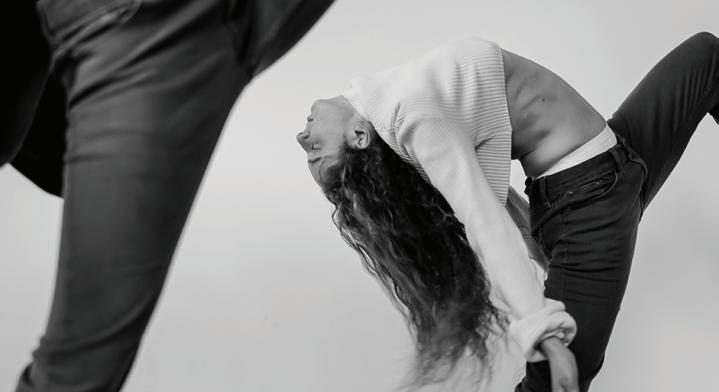
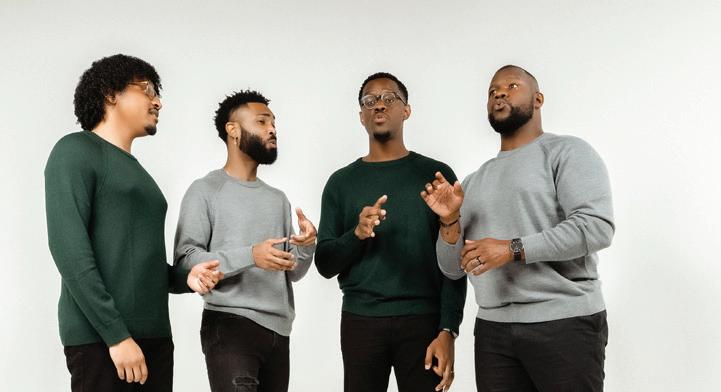


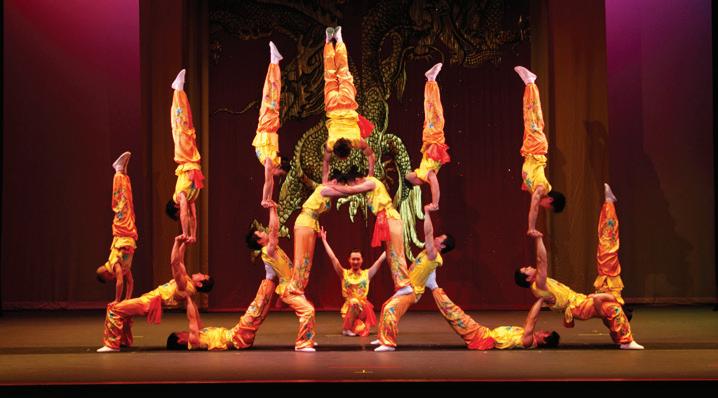

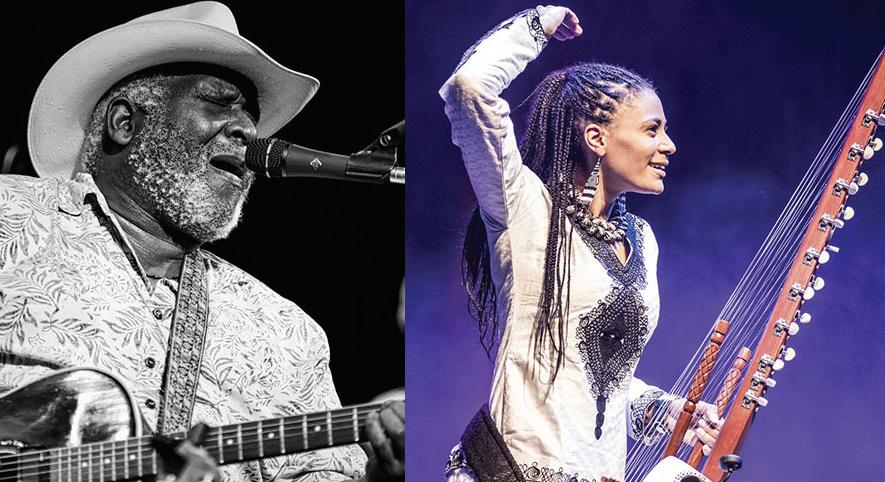


















Monday, December 4, 2023 — 6:00 pm
THE CLUB AT LAS CAMPANAS
Join us for a festive evening with good friends, fabulous food, premium wines, and wonderful holiday music at The Club at Las Campanas—benefiting our Music Education Program and its award-winning mentoring programs. Support great music and our expanded community and learning initiatives at this exciting winter gala with live music, gift certificate drawings, auctions, and more.
Tickets are $250 per person, $100 of which is tax-deductible. RSVP to: Development Officer, Laura Witte 505.552.3916 or email lwitte@santafesymphony.or g










Annual Gala
Saturday, June 1, 2024 6:00 pm
FOUR SEASONS RESORT SANTA FE
We look forward to welcoming you to our 2024 Annual Gala! Enjoy decadent wine and food along with spectacular live entertainment. Support your Santa Fe Symphony Orchestra & Chorus during the always exciting paddle bid and high-end live and silent auctions, and help us celebrate another wonderful season of great music.
More details and ticket information to be announced. Contact Development Officer, Laura Witte, with questions at 505.552.3916 or email lwitte@santafesymphony.or g .
Visit santafesymphony.org/gala or scan the QR code on right for up-to-date details about either of our 2023–2024 annual galas.








With your support, we are fostering extraordinary artistic talent and uniting our community with the power of music. The arts are critical to a healthy, multicultural community. Students who play an instrument or study music perform better in school. Our Community & Education Committee has revitalized our ticket offerings for students and music educators, providing free or rush prices for every concert. In addition to our limited free student tickets for each performance, dress rehearsals are open to families with children under 6 years of age, and half-price tickets are always offered to children and students 14 and under.
Our community engagement programs are growing! The Symphony Chamber Ensemble went on tour last season, performing free Pueblo Chamber Concerts and participating in the cultural exchange of music and the arts in communities across Northern New Mexico. Our inaugural Concerto Competition offered college and high-school aged musicians the chance to compete for a cash scholarship and receive high-quality audition videos from their performance. The Second Annual Concerto Competion will take place in the Spring of 2024. The Choral Scholars Program offers exceptional high school singers professional mentorship and singing experience with The Symphony Chorus and Chamber Singers.
Our broad platform of free music education initiatives are accessible to all. By investing in our community, we hope to foster the next generation of classical music lovers and future musicians of The Santa Fe Symphony! Music Mentoring offers 350+ hours of individual instruction to 75+ public school students each year. For many, this is the only individual instruction and attention they receive in school. Our Discovery Concerts share the beauty of classical music and the Lensic concert experience with 1,600+ public school and Pueblo children each year. Senior Serenades are offered for 50+ seniors and caregivers each year—many of whom cannot attend concerts in person. The Symphony del Sur and Southside Library Family Concerts offer 100+ families the chance to hear beautiful music and include an instrument petting zoo for children. 2000+ community members attend our Community Concerts for free each year. Kids' Classical Concerts reach 250+ elementary school students each year.
Support The Santa Fe Symphony's acclaimed community and learning programs by becoming a Friend of Music Education! You can earmark your contribution for a specific Music Education program, such as mentoring, Kids' Classical Concerts, Senior Serenades, and many more or help support ALL of our community programs by contributing to the Friends of Music Education Fund. Scan the QR code on the right with your smart phone and support our community and learning programs now!





Steven J. Goldstein, MD, Chair
Kate Carswell, Vice Chair
Leanne DeVane
Bethany Gallegos
Lori Lovato
Boo Miller
Callie O'Buckley
Laurie Rossi
Emma Scherer
Brian Sterriker
Dana Winograd
Laura Witte
Learn more about our community outreach and education programs, free and discounted youth tickets, free performances for assisted living facilities and residences, and more at santafesymphony.org/community.
Brian Sterriker, Education Manager: bsterriker@santafesymphony.org


“Music is all around us: every day and everywhere. You don't need to know the intricacies of Sonata Allegro form or the meaning of the Circle of Fifths, or that Haydn, Mozart, and Beethoven were all contemporaries in 18th century Vienna, to be moved by a Mozart piano concerto, a Beethoven string quartet, or a Haydn Symphony. But the more one knows about music theory and the history of musical composition and performance, the more one can appreciate the art of music performed by The Santa Fe Symphony Orchestra & Chorus.
A former chairman of the National Endowment of the Arts said,
When a school delivers the complete education to which every child is entitled—an education that very much includes the arts—the whole child blossoms. —Rocco Landesman
I think The Symphony's Adopt-AMusician Program creates the perfect bridge between us musicians and our audience. Each time The Symphony office lets me know that I'm adopted, I'm truly honored and I can't wait to meet them.
Although very few music students will make their living as a professional musician, the mental rigor required to master any musical instrument will undoubtedly provide the intellectual habits and dedication to the task required for them to succeed in all facets of their life.
Nicolle Maniaci, Principal Violin
As Chair of The Santa Fe Symphony's Community & Education Committee, I have witnessed the joy that students, teachers, and community members experience when they work with one of our musician mentors, or attend a concert by The Symphony at The Lensic, or witness performances at many of our local schools and retirement homes.
Because of the enthusiastic engagement of our talented musicians, staff, Board of Directors, and financial supporters at The Santa Fe Symphony Orchestra & Chorus, these citywide music programs provide the education and experience needed to allow the whole child and community to blossom.”
Steven J. Goldstein, MD Chair, Community & Education Committee















At Concept Hotels, our hospitality know-how is anchored in the Xperience, that “je ne sais quoi” that turns first-time guests into treasured friends. Here, it’s about creating experiences through fresh, fun and functional design, throwing in a generous dose of fun and layering it with unbeatable value and personal service delivered with a smile. Whether the vibe is European, Mediterranean, a fresh take on New Mexican, traditional New Mexican, or an artful, magical mix that defies labeling, Concept Hotels are united in delivering an Xperience. And a distinctly great one at that.










Alpine Inn & Suites alpineinnsuites.com
415.334.6969
Daly City, CA
The Sage thesagesf.com
505.982.5952
Santa Fe, NM
Alura Inn alurainn.com
408.709.2437
San Jose, CA

Social Kitchen + Bar socialkitchensf.com
505.982.5952
Santa Fe, NM

Hotel Zico hotelzico.com
650.969.8200
Mountain View, CA
LiA Hotel liahotel.com
650.593.3136
San Carlos, CA

Coyote South coyotesouthsf.com
505.471.8811
Santa Fe, NM
Inn at Santa Fe innatsf.com
505.474.9500
Santa Fe, NM

Menlo Park Inn menloparkinn.com
650.326.7530
Menlo Park, CA


Mylo Hotel mylohotel.com
415.467.4200
Daly City, CA
Southern Oaks Inn southernoaksinnbranson.com
417.335.8108
Branson, MO



The Sage connects you to the Santa Fe Plaza and bustling Railyard Park with stylish rooms at affordable rates. A dreamy bohemian hotel steps from Santa Fe’s top art galleries, eateries, and local boutiques. Our pet-friendly hotel makes sure no one is left out of your inspiring New Mexico adventures!


Whether it’s a stop on your cross-country adventure or a weekend staycation in your own backyard, we are ready to welcome you. With a warm and friendly atmosphere, you’ll feel right at home.



Find your refuge in the Southwest at our tranquil boutique hotel surrounded by the region’s rich history and world-famous cuisine. Relax in the fireplace lounge, soothe tired muscles in the sauna or take a dip in the pool. Easy interstate and freeway access. Only 15 minutes to Museum Hill and The Plaza.
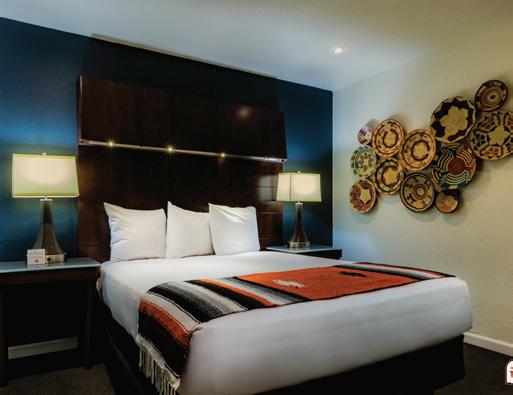



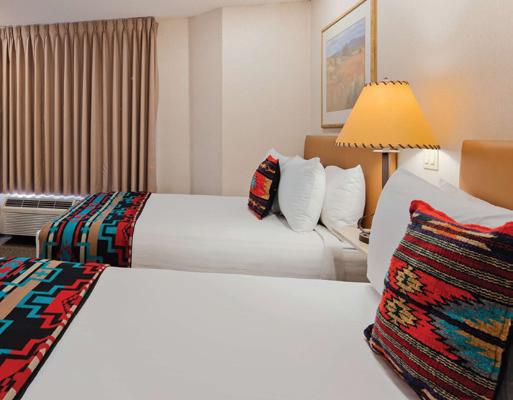






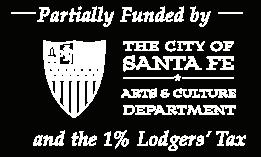



DECEMBER 9 - 22, 2023
Catch
Join in the festive Santa Fe holiday tradition of the Desert Chorale’s annual winter choral concert.
TICKETS ON SALE NOW
desertchorale.org/tickets (505)988-2282

July 14 through August 3
Songs of the Americas
Out of This World
The Great Romantics
TICKETS ON SALE DEC 2023


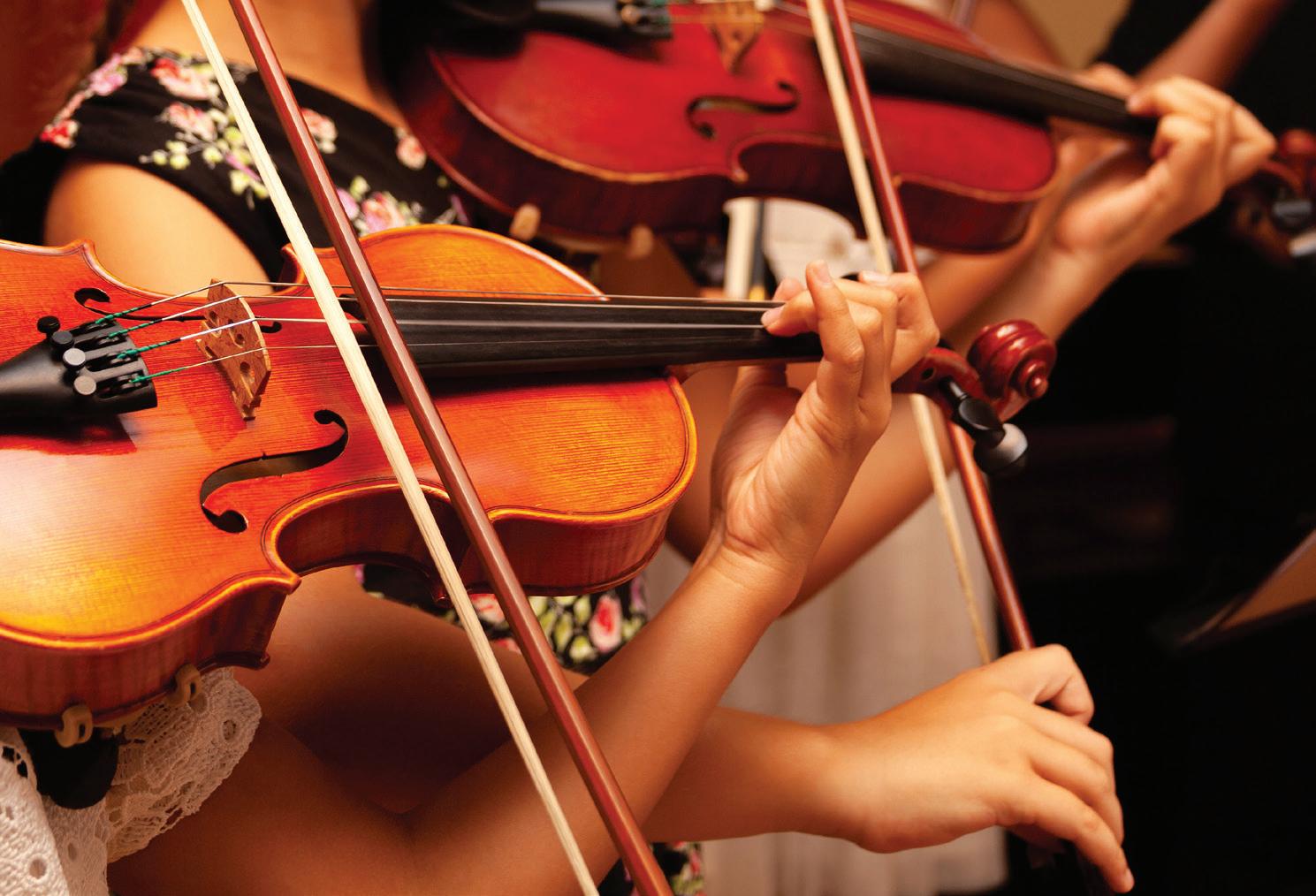


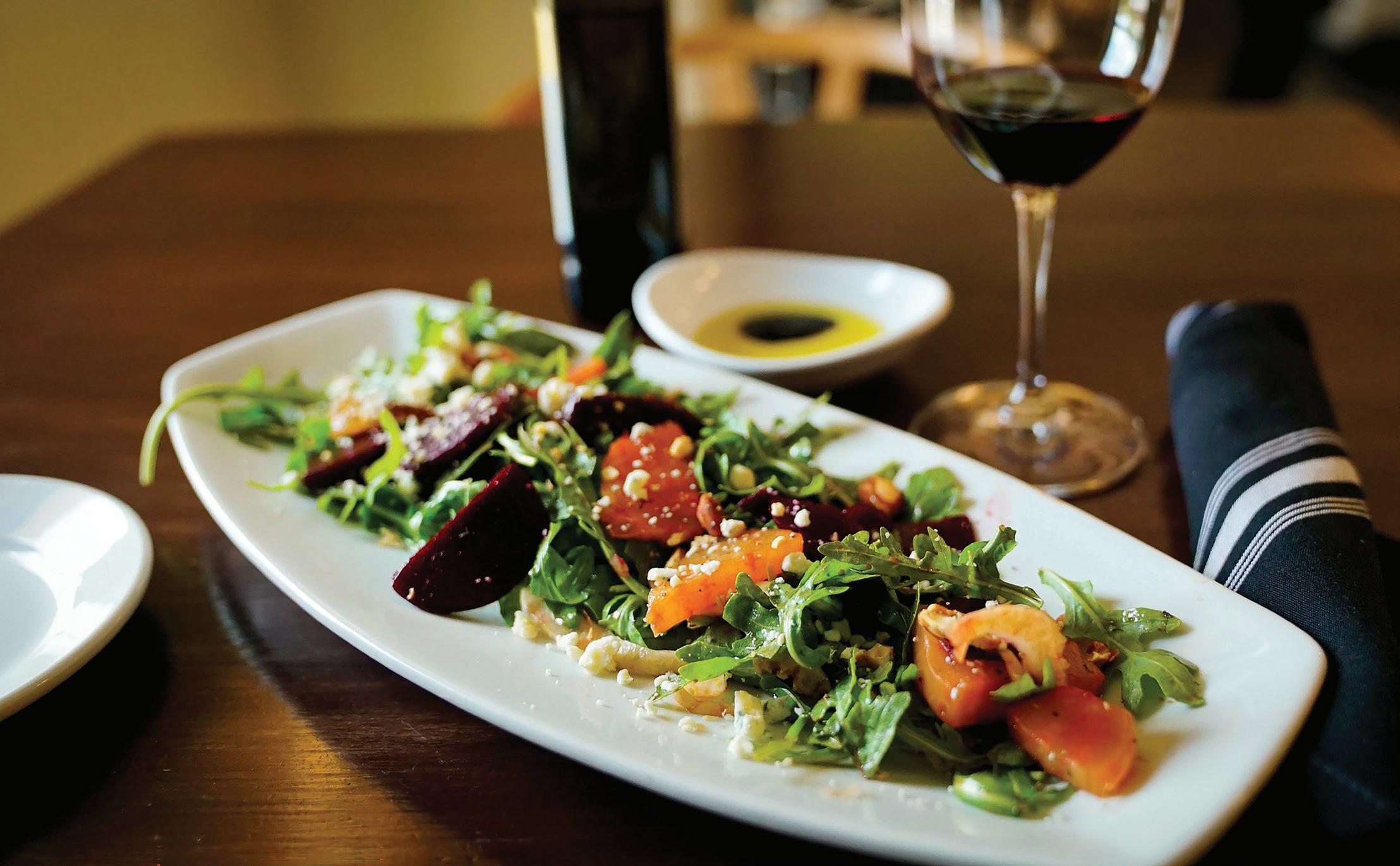



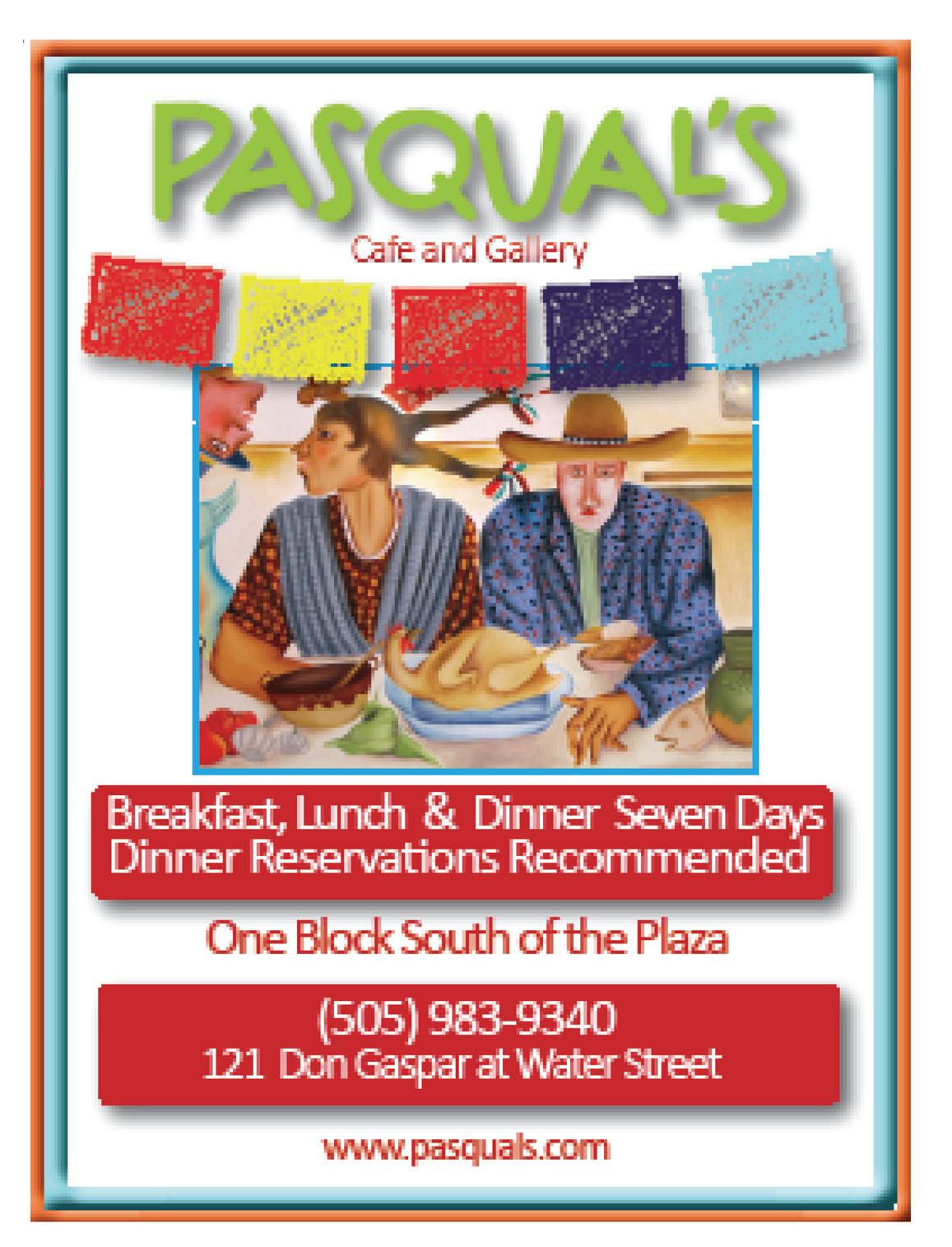
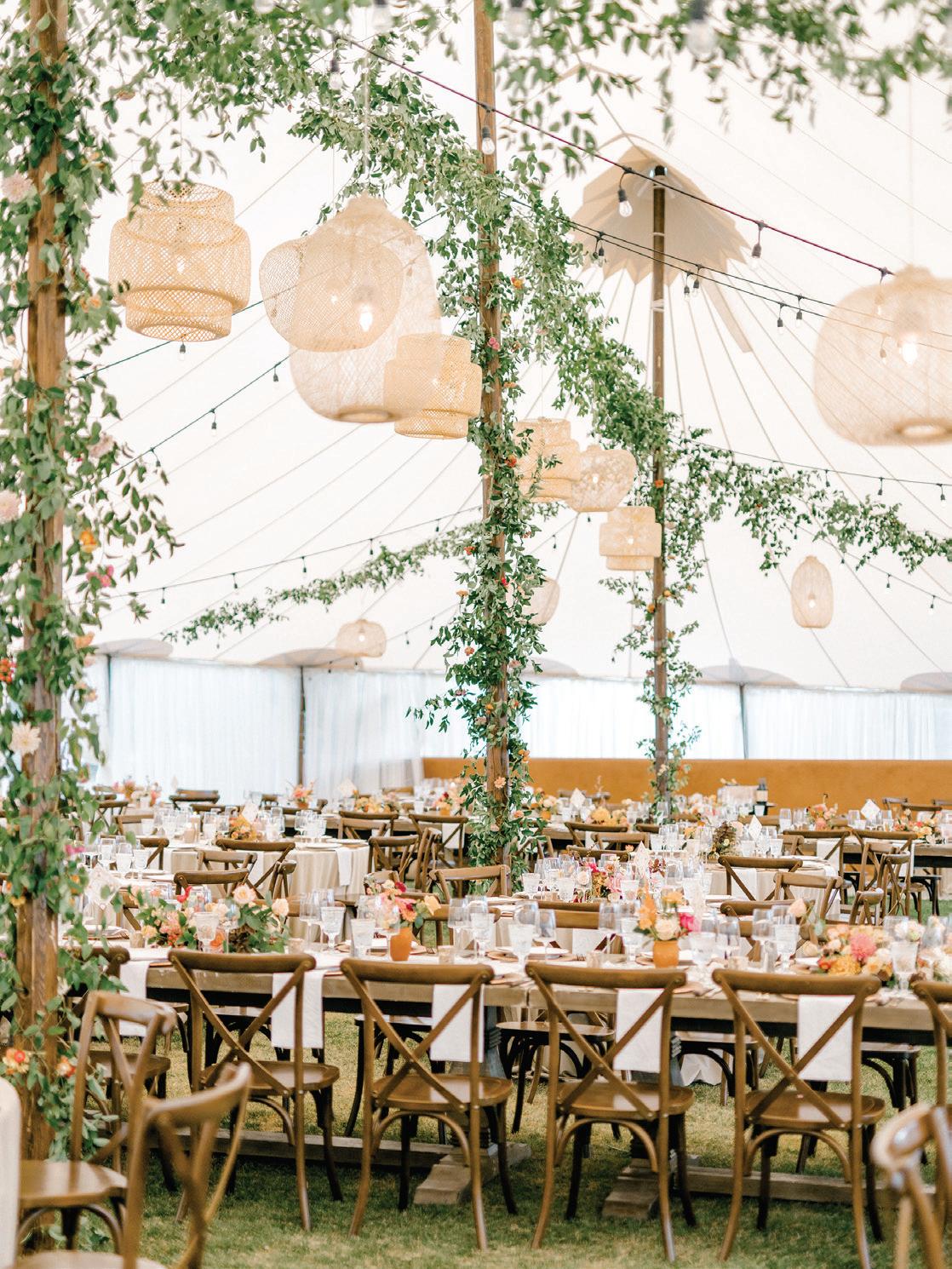

At CHRISTUS St. Vincent Regional Cancer Center, our expert radiation and hematology oncologists work closely together to deliver superior cancer care in our community. We have the only comprehensive cancer center in Northern New Mexico, with advanced technology, an infusion center, radiation, imaging and access to additional Supportive Care Services, such as nutritional guidance, social work, acupuncture, oriental medicine, massage therapy and palliative care. And, as a member of the Mayo Clinic Care Network, which grants our experts access to Mayo Clinic second opinions, only CHRISTUS St. Vincent ensures patients receive the best cancer care and resources, right here, close to home.


490A West Zia Road, Santa Fe, NM 87505 (505)913-8900


Subscribe today!
There is no better way to optimize your Symphony experience.
Our exciting 40th Anniversary Season features new collaborative engagements, award-winning and Grammy® nominated guest artists, renowned soloists, and inspirational music performed by your Santa Fe Symphony Orchestra & Chorus. You will be guaranteed a seat from your favorite section of The Lensic— for every concert. Subscription series tickets range from $25 to $92—full subscribers receive 10% off.



The Symphony Box Office: 301 Griffin Street, Santa Fe, NM 87501
Phone: 505.983.1414
Online: santafesymphony.org
Mail: PO Box 9692, Santa Fe, NM 87504
Business Hours: Monday through Friday, 10:00 am to 4:00 pm
Subscribe today! There is no better way to optimize your Symphony experience. C0ntact The Symphony's Patron Services Manager Regina Klapper at rklapper@santafesymphony.org or 505.983.1414. You will save on Symphony fees*, receive early season announcements, and keep your same great seats for each concert—year after year!
Unable to attend one of our concerts? No problem. For Symphony subscribers, exchange needs within the season are easily accommodated by contacting The Symphony Box Office. Just give us a call, or stop by The Symphony office. We would love to meet you!
Students 15 t0 22, military, and first responders receive 10% off, upon request—not available online. We also have a limited number of FREE tickets available for students, assisted living facilities, and senior centers. Contact Regina at 505.983.1414 as early in the season as possible to take advantage of this free ticket offer.
Children 6 to 14 years of age receive half price tickets with the purchase of an adult ticket. No children under 6 years of age. Call our Box Office to inquire about current ticket offers for students—and dress rehearsal attendance for parents with children under 6 or visit santafesymphony.org/ticketoffers.
seat, per concert. nonprofit organization.

Your Seats Await!
Download o ur 2023–2024 Subscrip tion Form online at santafesymphony.org/subscribe.
Purchase single tickets at santafesymphony.org/events
Save on fees!
Partial subscription packages are available with a minimum of five (5) Lensic performances.

























